A3 adenosine receptor agonists
Jacobson , et al.
U.S. patent number 10,577,368 [Application Number 15/949,701] was granted by the patent office on 2020-03-03 for a3 adenosine receptor agonists. This patent grant is currently assigned to Saint Louis University, The United States of America, as represented by the Secretary, Department of Health and Human Services. The grantee listed for this patent is Saint Louis University, The United States of America, as represented by the Secretary, Department of Health and Human Services, The United States of America, as represented by the Secretary, Department of Health and Human Services. Invention is credited to Kenneth A. Jacobson, Daniela Salvemini, Dilip K. Tosh.

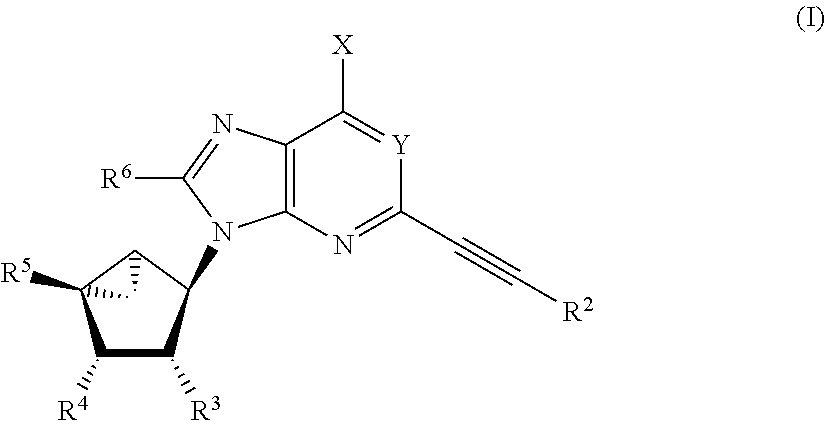










View All Diagrams
| United States Patent | 10,577,368 |
| Jacobson , et al. | March 3, 2020 |
| **Please see images for: ( Certificate of Correction ) ** |
A3 adenosine receptor agonists
Abstract
Disclosed are compounds of the formula (I) and (II): ##STR00001## which are A.sub.3 adenosine receptor agonists, pharmaceutical compositions comprising such compounds, and a method of use of these compounds, wherein X, Y, Z, R.sup.2-R.sup.6, and R.sup.103-R.sup.106 are as defined in the specification. These compounds are selective to the A.sub.3 receptor, and are contemplated for use in the treatment or prevention of a number of diseases or conditions, for example, neuropathic pain.
| Inventors: | Jacobson; Kenneth A. (Silver Spring, MD), Tosh; Dilip K. (Rockville, MD), Salvemini; Daniela (Chesterfield, MO) | ||||||||||
|---|---|---|---|---|---|---|---|---|---|---|---|
| Applicant: |
|
||||||||||
| Assignee: | The United States of America, as
represented by the Secretary, Department of Health and Human
Services (Bethesda, MD) Saint Louis University (St. Louis, MO) |
||||||||||
| Family ID: | 52134374 | ||||||||||
| Appl. No.: | 15/949,701 | ||||||||||
| Filed: | April 10, 2018 |
Prior Publication Data
| Document Identifier | Publication Date | |
|---|---|---|
| US 20180230150 A1 | Aug 16, 2018 | |
Related U.S. Patent Documents
| Application Number | Filing Date | Patent Number | Issue Date | ||
|---|---|---|---|---|---|
| 15039778 | 9963450 | ||||
| PCT/US2014/066609 | Nov 20, 2014 | ||||
| 62033723 | Aug 6, 2014 | ||||
| 61909742 | Nov 27, 2013 | ||||
| Current U.S. Class: | 1/1 |
| Current CPC Class: | C07D 473/00 (20130101); C07F 15/02 (20130101); C07D 473/34 (20130101); A61P 29/00 (20180101); A61P 35/00 (20180101) |
| Current International Class: | C07D 473/34 (20060101); C07D 473/00 (20060101); C07F 15/02 (20060101) |
References Cited [Referenced By]
U.S. Patent Documents
| 8735407 | May 2014 | Jacobson et al. |
| 8796291 | August 2014 | Jacobson et al. |
| 8916570 | December 2014 | Jacobson et al. |
| 2012/0184569 | July 2012 | Jacobson |
| 2012/0264769 | October 2012 | Jacobson et al. |
| 2017/0002007 | January 2017 | Jacobson et al. |
| WO 2011/068978 | Jun 2011 | WO | |||
Other References
|
US. Appl. No. 15/039,778, filed May 26, 2016. cited by applicant . Choi et al., "Preparative and stereoselective synthesis of the versatile intermediate for carbocyclic nucleosides: effects of the bulky protecting groups to enforce facial selectivity," J. Org. Chem., 69 (7), 2634-2636 (2004). cited by applicant . International Preliminary Report on Patentability, Application No. PCT/US2014/066609, dated May 31, 2016. cited by applicant . International Search Report, Application No. PCT/US2014/066609, dated May 12, 2015. cited by applicant . Kuo et al., "Metallocene Antitumor Agents. Solution and Solid-State Molybdenocene Coordination Chemistry of DNA Constituents," J. Am. Chem. Soc., 113, 9027-9045 (1991). cited by applicant . Paoletta et al., "Rational design of sulfonated A3 adenosine receptor-selective nucleosides as pharmacological tools to study chronic neuropathic pain," J. Med. Chem., 56 (14), 5949-5963 (2013). cited by applicant . Tosh et al., "Extended N(6) substitution of rigid C2-arylethynyl nucleosides for exploring the role of extracellular loops in ligand recognition at the A3 adenosine receptor," Bioorg. Med. Chem. Lett., 24 (15), 3302-3306 (2014). cited by applicant . Tosh et al., "Structure-guided design of A(3) adenosine receptor-selective nucleosides: combination of 2-arylethynyl and bicyclo[3.1.0]hexane substitutions," J. Med. Chem., 55 (10), 4847-4860 (2012). cited by applicant . Tosh et al., "Truncated Nucleosides as A(3) Adenosine Receptor Ligands: Combined 2-Arylethynyl and Bicyclohexane Substitutions," ACS Med. Chem. Lett., 3 (7), 596-601 (2012). cited by applicant . Written Opinion of the International Searching Authority, Application No. PCT/US2014/066609, dated May 12, 2015. cited by applicant . State Intellectual Property Office of China, Office Action in Application No. 201480073564.6 (dated Mar. 3, 2017) 16 pages. cited by applicant. |
Primary Examiner: Brown-Pettigrew; Angela C
Attorney, Agent or Firm: Leydig, Voit & Mayer, Ltd.
Government Interests
FEDERALLY SPONSORED RESEARCH OR DEVELOPMENT
This invention was made with Government support under Project Number DK031117-24 awarded by the National Institute of Diabetes and Digestive and Kidney Diseases. The Government has certain rights in this invention.
Parent Case Text
CROSS-REFERENCE TO RELATED APPLICATIONS
This patent application is a divisional of U.S. patent application Ser. No. 15/039,778, filed May 26, 2016, which is a 371 of International Patent Application No. PCT/US2014/066609, filed Nov. 20, 2014, which claims the benefit of U.S. Provisional Patent Applications Nos. 61/909,742, filed Nov. 27, 2013, and 62/033,723, filed Aug. 6, 2014, the disclosures of the '778, '609, '742, and '723 applications are incorporated by reference for all purposes.
Claims
The invention claimed is:
1. A method for treating pain comprising administering to a subject in need thereof a therapeutically effective amount of a compound selected from: ##STR00109## or a pharmaceutically acceptable salt of any one thereof.
2. The method of claim 1, wherein the compound administered is: ##STR00110## or a pharmaceutically acceptable salt thereof.
3. The method of claim 1, wherein the compound administered is: ##STR00111## or a pharmaceutically acceptable salt thereof.
4. The method of claim 1, wherein the compound administered is: ##STR00112## or a pharmaceutically acceptable salt thereof.
5. The method of claim 1, wherein the compound administered is: ##STR00113## or a pharmaceutically acceptable salt thereof.
6. The method of claim 2, wherein the compound administered is: ##STR00114##
7. The method of claim 3, wherein the compound administered is: ##STR00115##
8. The method of claim 4, wherein the compound administered is: ##STR00116##
9. The method of claim 5, wherein the compound administered is: ##STR00117##
10. The method of claim 1, wherein the pain is neuropathic pain.
11. The method of claim 6, wherein the pain is neuropathic pain.
12. The method of claim 1, wherein the compound selected from: ##STR00118##
13. The method of claim 12, wherein the pain is neuropathic pain.
Description
BACKGROUND OF THE INVENTION
Chronic neuropathic pain (NP) is a widespread condition that is often associated with diabetes, cancer, injury, exposure to toxic substances and a variety of other diseases such as AIDS and Parkinson's disease (Renfrey, S. et al., Nat. Rev. Drug Discov. 2003, 2: 175-6; Farquhar-Smith, P., Curr. Opin. Support Palliat. Care 2011, 5: 1-7). When it occurs subsequent to cancer chemotherapy or radiation therapy, it often necessitates the discontinuation of a life-saving treatment. Currently-used therapies for NP are poorly efficacious and suffer from serious side effects, ranging from liver toxicity to addiction and personality changes. In many cases, the therapy involves drugs developed for a different condition that were incidentally found to reduce NP, e.g. biogenic amine reuptake inhibitors such as the antidepressant amitriptyline, or anticonvulsant drugs such as gabapentin. Opioids, which are effective against acute pain, are not the first line of treatment for chronic NP, both because of addiction liability, low efficacy, development of antinociceptive tolerance and hypersensitivities to thermal, cold and mechanical insults (Ossipov, M. H. et al., J. Neubiol. 2004, 61: 126-48). Thus, there is an unmet need for chronic neuropathic pain treatment that operates on a different mechanism that can be given as stand alone or as adjuncts to opioids to allow effective pain relief over chronic use without engaging dependence.
BRIEF SUMMARY OF THE INVENTION
The invention provides a compound of the formula (I):
##STR00002##
wherein X is selected from NHR.sup.1, CH.sub.3, and CH.dbd.C(R.sup.a)(R.sup.b) wherein R.sup.a and R.sup.b are independently selected from hydrogen, hydroxyl, C.sub.1-C.sub.6 alkyl, and C.sub.6-C.sub.14 aryl,
R.sup.1 is selected from C.sub.1-C.sub.6 alkyl, C.sub.1-C.sub.6 alkoxy, hydroxyl, C.sub.3-C.sub.8 cycloalkyl, C.sub.6-C.sub.14 aryl C.sub.3-C.sub.8 cycloalkyl, C.sub.3-C.sub.8 cycloalkyl C.sub.1-C.sub.6 alkyl, C.sub.3-C.sub.8 dicycloalkyl C.sub.1-C.sub.6 alkyl, C.sub.7-C.sub.12 bicycloalkyl, C.sub.7-C.sub.12 bicycloalkyl C.sub.1-C.sub.6 alkyl, C.sub.7-C.sub.14 tricycloalkyl C.sub.1-C.sub.6 alkyl, C.sub.6-C.sub.14 aryl, C.sub.6-C.sub.14 aryl C.sub.1-C.sub.6 alkyl, C.sub.6-C.sub.14 diaryl C.sub.1-C.sub.6 alkyl, C.sub.6-C.sub.14 aryl C.sub.1-C.sub.6 alkoxy, heterocyclyl C.sub.1-C.sub.6 alkyl, heterocyclyl, 4-[[[4-[[[(2-amino C.sub.1-C.sub.6 alkyl) amino]-carbonyl]-C.sub.1-C.sub.6 alkyl]anilino] carbonyl] C.sub.1-C.sub.6 alkyl] C.sub.6-C.sub.14 aryl, and C.sub.6-C.sub.14 aryl C.sub.3-C.sub.8 cycloalkyl, wherein the aryl or heterocyclyl portion of R.sup.1 is optionally substituted with one or more substituents selected from halo, amino, hydroxyl, carboxy, alkoxycarbonyl, aminocarbonyl, alkylaminocarbonyl, dialkylaminocarbonyl, C.sub.1-C.sub.6 alkyl, C.sub.2-C.sub.6 alkenyl, C.sub.2-C.sub.6 alkynyl, C.sub.1-C.sub.6 alkoxy, C.sub.6-C.sub.14 aryloxy, hydroxy C.sub.1-C.sub.6 alkyl, hydroxy C.sub.2-C.sub.6 alkenyl, hydroxy C.sub.2-C.sub.6 alkynyl, carboxy C.sub.1-C.sub.6 alkyl, carboxy C.sub.2-C.sub.6 alkenyl, carboxy C.sub.2-C.sub.6 alkynyl, aminocarbonyl C.sub.1-C.sub.6 alkyl, aminocarbonyl C.sub.2-C.sub.6 alkenyl, aminocarbonyl C.sub.2-C.sub.6 alkynyl, and any combination thereof; and the alkyl or cycloalkyl portion of R.sup.1 is optionally substituted with one or more substituents selected from halo, amino, alkyl, alkoxy, aryloxy, hydroxyalkyl, hydroxyalkenyl, hydroxyalkynyl, aminocarbonylalkoxy, and arylalkoxy, and any combination thereof
R.sup.2 is selected from C.sub.6-C.sub.12 aryl, C.sub.3-C.sub.8 cycloalkyl, heteroaryl, and metallocenyl, wherein the aryl group is optionally substituted with one or more substituents selected from halo, trifluoromethyl, hydroxyalkyl, alkoxy, sulfonyloxy, carboxyalkyl, sulfonyloxyalkyl, arylcarbonyl, and any combination thereof, wherein the heteroaryl group is optionally substituted with one or more substituents selected from halo, trifluoromethyl, amino, alkyl, hydroxyalkyl, aryl, alkoxy, hydroxyl, carboxyl, sulfonyloxy, carboxyalkyl, sulfonyloxyalkyl, alkylcarbonyl, arylcarbonyl, and any combination thereof,
R.sup.3 and R.sup.4 are independently selected from hydroxyl, amino, mercapto, ureido, C.sub.1-C.sub.6 alkyl carbonylamino, hydroxy C.sub.1-C.sub.6 alkyl, and hydrazinyl;
R.sup.5 is selected from hydrogen, C.sub.1-C.sub.3 alkyl aminocarbonyl, di(C.sub.1-C.sub.3 alkyl) aminocarbonyl, C.sub.1-C.sub.3 alkylthio C.sub.1-C.sub.3 alkyl, halo C.sub.1-C.sub.3 alkyl, hydrazinyl, amino C.sub.1-C.sub.3 alkyl, hydroxy C.sub.1-C.sub.3 alkyl, C.sub.3-C.sub.6 cycloalkylamino, hydroxylamino, and C.sub.2-C.sub.3 alkenyl; and
R.sup.6 is selected from hydrogen, C.sub.1-C.sub.6 alkyl, C.sub.2-C.sub.6 alkenyl, C.sub.2-C.sub.6 alkynyl, heteroaryl, and C.sub.1-C.sub.6 aminoalkyl;
or a pharmaceutically acceptable salt thereof.
The invention also provides a compound of the formula (II):
##STR00003## wherein X is selected from NHR.sup.101, CH.sub.3, and CH.dbd.C(R.sup.a)(R.sup.b) wherein R.sup.a and R.sup.b are independently selected from hydrogen, hydroxyl, C.sub.1-C.sub.6 alkyl, and C.sub.6-C.sub.14 aryl,
Y is N or CH,
R.sup.101 is selected from C.sub.1-C.sub.6 alkyl, C.sub.1-C.sub.6 alkoxy, hydroxyl, C.sub.3-C.sub.8 cycloalkyl, C.sub.6-C.sub.14 aryl C.sub.3-C.sub.8 cycloalkyl, C.sub.3-C.sub.8 cycloalkyl C.sub.1-C.sub.6 alkyl, C.sub.3-C.sub.8 dicycloalkyl C.sub.1-C.sub.6 alkyl, C.sub.7-C.sub.12 bicycloalkyl, C.sub.7-C.sub.12 bicycloalkyl C.sub.1-C.sub.6 alkyl, C.sub.7-C.sub.14 tricycloalkyl C.sub.1-C.sub.6 alkyl, C.sub.6-C.sub.14 aryl, C.sub.6-C.sub.14 aryl C.sub.1-C.sub.6 alkyl, C.sub.6-C.sub.14 diaryl C.sub.1-C.sub.6 alkyl, C.sub.6-C.sub.14 aryl C.sub.1-C.sub.6 alkoxy, heterocyclyl C.sub.1-C.sub.6 alkyl, heterocyclyl, 4-[[[4-[[[(2-amino C.sub.1-C.sub.6 alkyl) amino]-carbonyl]-C.sub.1-C.sub.6 alkyl]anilino] carbonyl] C.sub.1-C.sub.6 alkyl] C.sub.6-C.sub.14 aryl, and C.sub.6-C.sub.14 aryl C.sub.3-C.sub.8 cycloalkyl, wherein the aryl or heterocyclyl portion of R.sup.1 is optionally substituted with one or more substituents selected from halo, amino, hydroxyl, carboxy, alkoxycarbonyl, aminocarbonyl, alkylaminocarbonyl, dialkylaminocarbonyl, C.sub.1-C.sub.6 alkyl, C.sub.2-C.sub.6 alkenyl, C.sub.2-C.sub.6 alkynyl, C.sub.1-C.sub.6 alkoxy, C.sub.6-C.sub.14 aryloxy, hydroxy C.sub.1-C.sub.6 alkyl, hydroxy C.sub.2-C.sub.6 alkenyl, hydroxy C.sub.2-C.sub.6 alkynyl, carboxy C.sub.1-C.sub.6 alkyl, carboxy C.sub.2-C.sub.6 alkenyl, carboxy C.sub.2-C.sub.6 alkynyl, aminocarbonyl C.sub.1-C.sub.6 alkyl, aminocarbonyl C.sub.2-C.sub.6 alkenyl, aminocarbonyl C.sub.2-C.sub.6 alkynyl, and any combination thereof; and the alkyl or cycloalkyl portion of R.sup.101 is optionally substituted with one or more substituents selected from halo, amino, alkyl, alkoxy, aryloxy, hydroxyalkyl, hydroxyalkenyl, hydroxyalkynyl, aminocarbonylalkoxy, and arylalkoxy, and any combination thereof,
Z is halo, azido, or a group of the formula:
##STR00004## wherein R.sup.102 is selected from C.sub.6-C.sub.12 aryl, C.sub.6-C.sub.12 aryl-C.sub.1-C.sub.6 alkyl, C.sub.3-C.sub.8 cycloalkyl, heteroaryl, and metallocenyl, wherein the aryl group is optionally substituted with one or more substituents selected from trifluoromethyl, hydroxyalkyl, alkoxy, sulfonyloxy, carboxyalkyl, sulfonyloxyalkyl, arylcarbonyl, and any combination thereof, wherein the heteroaryl group is optionally substituted with one or more substituents selected from halo, trifluoromethyl, amino, alkyl, hydroxyalkyl, aryl, alkoxy, hydroxyl, carboxyl, sulfonyloxy, carboxyalkyl, sulfonyloxyalkyl, alkylcarbonyl, arylcarbonyl, and any combination thereof,
R.sup.103 and R.sup.104 are independently selected from hydrogen, hydroxyl, amino, mercapto, ureido, C.sub.1-C.sub.6 alkyl carbonylamino, hydroxy C.sub.1-C.sub.6 alkyl, and hydrazinyl;
R.sup.105 is selected from hydrogen, C.sub.1-C.sub.3 alkyl aminocarbonyl, di(C.sub.1-C.sub.3 alkyl) aminocarbonyl, C.sub.1-C.sub.3 alkylthio C.sub.1-C.sub.3 alkyl, halo C.sub.1-C.sub.3 alkyl, hydrazinyl, amino C.sub.1-C.sub.3 alkyl, hydroxy C.sub.1-C.sub.3 alkyl, C.sub.3-C.sub.6 cycloalkylamino, hydroxylamino, and C.sub.2-C.sub.3 alkenyl; and
R.sup.106 is selected from hydrogen, C.sub.1-C.sub.6 alkyl, C.sub.2-C.sub.6 alkenyl, C.sub.2-C.sub.6 alkynyl, heteroaryl, and C.sub.1-C.sub.6 aminoalkyl;
or a pharmaceutically acceptable salt thereof.
The invention further provides a pharmaceutical composition comprising a compound or salt of the invention and a pharmaceutically acceptable carrier.
The invention additionally provides a method for activating an A.sub.3 adenosine receptor in a mammal comprising to the mammal an effective amount of a compound or salt of the invention.
The invention also provides a method for treating or preventing neuropathic pain in a mammal in need thereof, comprising administering to the mammal an effective amount of a compound or salt of the invention.
Advantageously, the inventive compounds exhibit desirable drug-like physicochemical properties that include a molecular weight of less than about 500 Daltons, which is expected to confer oral bioavailability. In addition, there are both peripheral and central mechanistic components to protection against neuropathic pain exhibited by A.sub.3AR agonists. The inventive compounds possess physicochemical properties that are favorable for crossing the blood-brain barrier and thus may act within the brain.
BRIEF DESCRIPTION OF THE SEVERAL VIEWS OF THE DRAWING(S)
FIGS. 1A-1C illustrate the reversal of mechano-allodynia over time exhibited by compounds 7 (MRS5914), 8 (MRS5917), and 17 (MRS5969), respectively, in a chronic constriction injury model of neuropathic pain.
FIG. 2 illustrates the reversal of mechano-allodynia over time exhibited by compounds 13 (MRS5967), 16 (MRS5968), 17 (MRS5969), 14 (MRS5970), and 11 (MRS5971) in a chronic constriction injury model of neuropathic pain.
FIG. 3 illustrates reversal of mechano-allodynia over time exhibited by compounds 6 (MRS5913), 7 (MRS5914), 8 (MRS5917), 9 (MRS5921), and 10 (MRS5929) in a chronic constriction injury model of neuropathic pain.
FIG. 4 illustrates the reversal of mechano-allodynia over time exhibited by compounds 6 (MRS5913), 7 (MRS5914), 8 (MRS5917), 9 (MRS5921), and 10 (MRS5929) at the contralateral side in a chronic constriction injury model of neuropathic pain.
FIG. 5 illustrates the reversal of mechano-allodynia over time exhibited by compounds 40 (MRS5918), 41 (MRS5919), 37 (MRS5979), and 32 (MRS5980) in a chronic constriction injury model of neuropathic pain.
FIG. 6 depicts the structures of MRS5698 and MRS5676.
FIGS. 7A-7F illustrate concentration-effect curves for compounds 7, 8, 40, 41, 32, and 101, respectively, in an assay of inhibition of forskolin-stimulated cAMP accumulation with HEK293 cells expressing the mA.sub.1AR.
FIGS. 8A-8C illustrate reversal of mechano-allodynia over time exhibited by compounds 7 (FIG. 8A), 17 (FIG. 8B), and 32 (FIG. 8C) at doses of 0.3 mmol/kg, 1 mmol/kg, and 3 mmol/kg in a chronic constriction injury model of neuropathic pain.
FIGS. 9A and 9B illustrate the activity in the inhibition of cyclic AMP formation at the human A.sub.1AR and A.sub.3AR of compounds 7 (FIG. 9A) and 8 (FIG. 9B).
FIG. 10 illustrates the reversal of mechano-allodynia over time exhibited by compounds 8, 16, and 100 in a chronic constriction injury model of neuropathic pain.
FIG. 11 illustrates the reversal of mechano-allodynia over time exhibited by compounds 100 (MRS7110), 105 (MRS7113), 103 (MRS7114), 101 (MRS7115), and 104 (MRS7116,) respectively, in a chronic constriction injury model of neuropathic pain.
FIG. 12 illustrates the reversal of mechano-allodynia over time exhibited by compounds 112 (MRS7121), 102 (MRS7117), 108 (MRS7118), 111 (MRS7119), 106 (MRS7120), and 110 (MRS7126), respectively, in a chronic constriction injury model of neuropathic pain.
FIGS. 13A and 13B depict the histological analysis of liver samples from control (FIG. 13A) and compound 32-treated (FIG. 13B) groups.
FIG. 14 illustrates the maintenance of the reversal of mechano-allodynia over time exhibited by morphine when dosed in combination with MRS5698 or compound 32.
FIG. 15 depicts plasma concentration as a function of time in male SD rats upon intravenous dosing of compound 32 at 1 mg/kg and upon oral dosing at 1, 3, and 10 mg/kg.
FIG. 16 illustrates the reversal of mechano-allodynia over time exhibited by compound 126 (MRS7135) on oral dosing at 0.3, 1, 2, 10, and 30 .mu.mol/kg dosing.
FIG. 17 illustrates the reversal of mechano-allodynia over time exhibited by compounds 125 (MRS7137), 120 (MRS7138), 121 (MRS7139), and 127 (MRS7140,) respectively, in a chronic constriction injury model of neuropathic pain.
DETAILED DESCRIPTION OF THE INVENTION
In an embodiment, the invention provides a compound of the formula (I):
##STR00005##
wherein X is selected from NHR.sup.1, CH.sub.3, and CH.dbd.C(R.sup.a)(R.sup.b) wherein R.sup.a and R.sup.b are independently selected from hydrogen, hydroxyl, C.sub.1-C.sub.6 alkyl, and C.sub.6-C.sub.14 aryl,
R.sup.1 is selected from C.sub.1-C.sub.6 alkyl, C.sub.1-C.sub.6 alkoxy, hydroxyl, C.sub.3-C.sub.8 cycloalkyl, C.sub.6-C.sub.14 aryl C.sub.3-C.sub.8 cycloalkyl, C.sub.3-C.sub.8 cycloalkyl C.sub.1-C.sub.6 alkyl, C.sub.3-C.sub.8 dicycloalkyl C.sub.1-C.sub.6 alkyl, C.sub.7-C.sub.12 bicycloalkyl, C.sub.7-C.sub.12 bicycloalkyl C.sub.1-C.sub.6 alkyl, C.sub.7-C.sub.14 tricycloalkyl C.sub.1-C.sub.6 alkyl, C.sub.6-C.sub.14 aryl, C.sub.6-C.sub.14 aryl C.sub.1-C.sub.6 alkyl, C.sub.6-C.sub.14 diaryl C.sub.1-C.sub.6 alkyl, C.sub.6-C.sub.14 aryl C.sub.1-C.sub.6 alkoxy, heterocyclyl C.sub.1-C.sub.6 alkyl, heterocyclyl, 4-[[[4-[[[(2-amino C.sub.1-C.sub.6 alkyl) amino]-carbonyl]-C.sub.1-C.sub.6 alkyl]anilino] carbonyl] C.sub.1-C.sub.6 alkyl] C.sub.6-C.sub.14 aryl, and C.sub.6-C.sub.14 aryl C.sub.3-C.sub.8 cycloalkyl, wherein the aryl or heterocyclyl portion of R.sup.1 is optionally substituted with one or more substituents selected from halo, amino, hydroxyl, carboxy, alkoxycarbonyl, aminocarbonyl, alkylaminocarbonyl, dialkylaminocarbonyl, C.sub.1-C.sub.6 alkyl, C.sub.2-C.sub.6 alkenyl, C.sub.2-C.sub.6 alkynyl, C.sub.1-C.sub.6 alkoxy, C.sub.6-C.sub.14 aryloxy, hydroxy C.sub.1-C.sub.6 alkyl, hydroxy C.sub.2-C.sub.6 alkenyl, hydroxy C.sub.2-C.sub.6 alkynyl, carboxy C.sub.1-C.sub.6 alkyl, carboxy C.sub.2-C.sub.6 alkenyl, carboxy C.sub.2-C.sub.6 alkynyl, aminocarbonyl C.sub.1-C.sub.6 alkyl, aminocarbonyl C.sub.2-C.sub.6 alkenyl, aminocarbonyl C.sub.2-C.sub.6 alkynyl, and any combination thereof; and the alkyl or cycloalkyl portion of R.sup.1 is optionally substituted with one or more substituents selected from halo, amino, alkyl, alkoxy, aryloxy, hydroxyalkyl, hydroxyalkenyl, hydroxyalkynyl, aminocarbonylalkoxy, and arylalkoxy, and any combination thereof
R.sup.2 is selected from C.sub.6-C.sub.12 aryl, C.sub.3-C.sub.8 cycloalkyl, heteroaryl, and metallocenyl, wherein the aryl group is optionally substituted with one or more substituents selected from halo, trifluoromethyl, hydroxyalkyl, alkoxy, sulfonyloxy, carboxyalkyl, sulfonyloxyalkyl, arylcarbonyl, and any combination thereof, wherein the heteroaryl group is optionally substituted with one or more substituents selected from halo, trifluoromethyl, amino, alkyl, hydroxyalkyl, aryl, benzo, alkoxy, hydroxyl, carboxyl, sulfonyloxy, carboxyalkyl, sulfonyloxyalkyl, alkylcarbonyl, arylcarbonyl, and any combination thereof,
R.sup.3 and R.sup.4 are independently selected from hydroxyl, amino, mercapto, ureido, C.sub.1-C.sub.6 alkyl carbonylamino, hydroxy C.sub.1-C.sub.6 alkyl, and hydrazinyl;
R.sup.5 is selected from hydrogen, C.sub.1-C.sub.3 alkyl aminocarbonyl, di(C.sub.1-C.sub.3 alkyl) aminocarbonyl, C.sub.1-C.sub.3 alkylthio C.sub.1-C.sub.3 alkyl, halo C.sub.1-C.sub.3 alkyl, hydrazinyl, amino C.sub.1-C.sub.3 alkyl, hydroxy C.sub.1-C.sub.3 alkyl, C.sub.3-C.sub.6 cycloalkylamino, hydroxylamino, and C.sub.2-C.sub.3 alkenyl; and
R.sup.6 is selected from hydrogen, C.sub.1-C.sub.6 alkyl, C.sub.2-C.sub.6 alkenyl, C.sub.2-C.sub.6 alkynyl, heteroaryl, and C.sub.1-C.sub.6 aminoalkyl;
or a pharmaceutically acceptable salt thereof.
In an embodiment, when R.sup.1 is methyl, R.sup.3 and R.sup.4 are both hydroxyl, R.sup.6 is hydrogen, and R.sup.5 is methylaminocarbonyl, R.sup.2 is not 2-pyridyl or phenyl.
In an embodiment, R.sup.6 is hydrogen.
In certain embodiments, Y is N.
In certain embodiments, R.sup.5 is selected from C.sub.1-C.sub.3 alkyl aminocarbonyl or di(C.sub.1-C.sub.3 alkyl) aminocarbonyl.
In an embodiment, R.sup.3 and R.sup.4 are both hydroxyl.
In an embodiment, X is NHR.sup.1. In a preferred embodiment, R.sup.1 is C.sub.1-C.sub.6 alkyl.
In certain embodiments, R.sup.2 is C.sub.6-C.sub.10 aryl, wherein the aryl group is substituted with one or more substituents selected from halo, trifluoromethyl, hydroxyalkyl, alkoxy, and any combination thereof.
In certain other embodiments, R.sup.2 is heteroaryl, and the heteroaryl group is optionally substituted with one or more substituents selected from hydroxy, halo and alkyl.
In certain preferred embodiments, the compound is selected from:
##STR00006## ##STR00007## ##STR00008## ##STR00009## ##STR00010## ##STR00011## ##STR00012## ##STR00013##
In certain more preferred embodiments, the compound is selected from:
##STR00014## ##STR00015##
In a certain embodiment, the compound is:
##STR00016##
In certain preferred embodiments, the compound is selected from:
##STR00017##
In certain embodiments, R.sup.1 is C.sub.6-C.sub.14 aryl C.sub.3-C.sub.8 cycloalkyl, wherein the aryl group is optionally substituted with one or more substituents selected from C.sub.1-C.sub.6 alkyl, methyl, F, Cl, and Br.
In certain preferred embodiments, the compound is selected from:
##STR00018## ##STR00019## ##STR00020## ##STR00021## ##STR00022##
In certain embodiments, X is CH.sub.3.
In a particular embodiment, the compound is:
##STR00023##
In certain embodiments, X is CH.dbd.C(R.sup.a)(R.sup.b).
In a particular embodiment, the compound is selected from:
##STR00024##
In certain embodiments, Y is CH.
In certain embodiments, R.sup.3 and R.sup.4 are both hydroxyl.
In certain embodiments, R.sup.5 is selected from C.sub.1-C.sub.3 alkyl aminocarbonyl or di(C.sub.1-C.sub.3 alkyl) aminocarbonyl.
In certain embodiments, X is NHR.sup.1.
In certain embodiments, R.sup.1 is C.sub.1-C.sub.6 alkyl.
In certain embodiments, R.sup.2 is C.sub.6-C.sub.10 aryl, wherein the aryl group is substituted with one or more substituents selected from trifluoromethyl, hydroxyalkyl, alkoxy, and any combination thereof.
In certain other embodiments, R.sup.2 is heteroaryl, and the heteroaryl group is optionally substituted with one or more substituents selected from halo, hydroxy, and alkyl.
In a particular embodiment, the compound is selected from:
##STR00025##
In another particular embodiment, the compound is:
##STR00026##
The invention also provides a compound of the formula (II):
##STR00027##
wherein X is selected from NHR.sup.101, CH.sub.3, and CH.dbd.C(R.sup.a)(R.sup.b) wherein R.sup.a and R.sup.b are independently selected from hydrogen, hydroxyl, C.sub.1-C.sub.6 alkyl, and C.sub.6-C.sub.14 aryl,
Y is N or CH,
R.sup.101 is selected from C.sub.1-C.sub.6 alkyl, C.sub.1-C.sub.6 alkoxy, hydroxyl, C.sub.3-C.sub.8 cycloalkyl, C.sub.6-C.sub.14 aryl C.sub.3-C.sub.8 cycloalkyl, C.sub.3-C.sub.8 cycloalkyl C.sub.1-C.sub.6 alkyl, C.sub.3-C.sub.8 dicycloalkyl C.sub.1-C.sub.6 alkyl, C.sub.7-C.sub.12 bicycloalkyl, C.sub.7-C.sub.12 bicycloalkyl C.sub.1-C.sub.6 alkyl, C.sub.7-C.sub.14 tricycloalkyl C.sub.1-C.sub.6 alkyl, C.sub.6-C.sub.14 aryl, C.sub.6-C.sub.14 aryl C.sub.1-C.sub.6 alkyl, C.sub.6-C.sub.14 diaryl C.sub.1-C.sub.6 alkyl, C.sub.6-C.sub.14 aryl C.sub.1-C.sub.6 alkoxy, heterocyclyl C.sub.1-C.sub.6 alkyl, heterocyclyl, 4-[[[4-[[[(2-amino C.sub.1-C.sub.6 alkyl) amino]-carbonyl]-C.sub.1-C.sub.6 alkyl]anilino] carbonyl] C.sub.1-C.sub.6 alkyl] C.sub.6-C.sub.14 aryl, and C.sub.6-C.sub.14 aryl C.sub.3-C.sub.8 cycloalkyl, wherein the aryl or heterocyclyl portion of R.sup.1 is optionally substituted with one or more substituents selected from halo, amino, hydroxyl, carboxy, alkoxycarbonyl, aminocarbonyl, alkylaminocarbonyl, dialkylaminocarbonyl, C.sub.1-C.sub.6 alkyl, C.sub.2-C.sub.6 alkenyl, C.sub.2-C.sub.6 alkynyl, C.sub.1-C.sub.6 alkoxy, C.sub.6-C.sub.14 aryloxy, hydroxy C.sub.1-C.sub.6 alkyl, hydroxy C.sub.2-C.sub.6 alkenyl, hydroxy C.sub.2-C.sub.6 alkynyl, carboxy C.sub.1-C.sub.6 alkyl, carboxy C.sub.2-C.sub.6 alkenyl, carboxy C.sub.2-C.sub.6 alkynyl, aminocarbonyl C.sub.1-C.sub.6 alkyl, aminocarbonyl C.sub.2-C.sub.6 alkenyl, aminocarbonyl C.sub.2-C.sub.6 alkynyl, and any combination thereof; and the alkyl or cycloalkyl portion of R.sup.101 is optionally substituted with one or more substituents selected from halo, amino, alkyl, alkoxy, aryloxy, hydroxyalkyl, hydroxyalkenyl, hydroxyalkynyl, aminocarbonylalkoxy, and arylalkoxy, and any combination thereof,
Z is halo, azido, or a group of the formula:
##STR00028## wherein R.sup.102 is selected from C.sub.6-C.sub.12 aryl, C.sub.6-C.sub.12 aryl-C.sub.1-C.sub.6 alkyl, C.sub.3-C.sub.8 cycloalkyl, heteroaryl, and metallocenyl, wherein the aryl group is optionally substituted with one or more substituents selected from trifluoromethyl, hydroxyalkyl, alkoxy, sulfonyloxy, carboxyalkyl, sulfonyloxyalkyl, arylcarbonyl, and any combination thereof, wherein the heteroaryl group is optionally substituted with one or more substituents selected from halo, trifluoromethyl, amino, alkyl, hydroxyalkyl, aryl, alkoxy, hydroxyl, carboxyl, sulfonyloxy, carboxyalkyl, sulfonyloxyalkyl, alkylcarbonyl, arylcarbonyl, and any combination thereof,
R.sup.103 and R.sup.104 are independently selected from hydrogen, hydroxyl, amino, mercapto, ureido, C.sub.1-C.sub.6 alkyl carbonylamino, hydroxy C.sub.1-C.sub.6 alkyl, and hydrazinyl;
R.sup.105 is selected from hydrogen, C.sub.1-C.sub.3 alkyl aminocarbonyl, di(C.sub.1-C.sub.3 alkyl) aminocarbonyl, C.sub.1-C.sub.3 alkylthio C.sub.1-C.sub.3alkyl, halo C.sub.1-C.sub.3 alkyl, hydrazinyl, amino C.sub.1-C.sub.3 alkyl, hydroxy C.sub.1-C.sub.3 alkyl, C.sub.3-C.sub.6 cycloalkylamino, hydroxylamino, and C.sub.2-C.sub.3 alkenyl; and
R.sup.106 is selected from hydrogen, C.sub.1-C.sub.6 alkyl, C.sub.2-C.sub.6 alkenyl, C.sub.2-C.sub.6 alkynyl, heteroaryl, and C.sub.1-C.sub.6 aminoalkyl; or a pharmaceutically acceptable salt thereof,
with the proviso that, when R.sup.103 and R.sup.104 are both hydroxyl, R.sup.105 is methylaminocarbonyl, R.sup.106 is hydrogen, X is NHMe, and Y is CH, then Z is not iodo.
In an embodiment, R.sup.106 is hydrogen.
In certain embodiments, Y is N.
In certain embodiments, R.sup.105 is selected from C.sub.1-C.sub.3 alkyl aminocarbonyl or di(C.sub.1-C.sub.3 alkyl) aminocarbonyl.
In an embodiment, R.sup.103 and R.sup.104 are both hydroxyl.
In an embodiment, X is NHR.sup.101. In a preferred embodiment, R.sup.101 is C.sub.1-C.sub.6 alkyl.
In certain embodiments, Z is
##STR00029##
In certain embodiments, R.sup.102 is C.sub.6-C.sub.10 aryl, wherein the aryl group is substituted with one or more substituents selected from trifluoromethyl, hydroxyalkyl, alkoxy, and any combination thereof.
In certain other embodiments, R.sup.102 is heteroaryl, and the heteroaryl group is optionally substituted with one or more substituents selected from halo, hydroxy, and alkyl.
In certain preferred embodiments, the compound is selected from:
##STR00030## ##STR00031## ##STR00032##
In a certain embodiment, the compound is:
##STR00033##
In certain preferred embodiments, the compound is selected from:
##STR00034##
In certain of these embodiments, R.sup.102 is C.sub.6-C.sub.10 aryl, wherein the aryl group is substituted with one or more substituents selected from trifluoromethyl, hydroxyalkyl, alkoxy, and any combination thereof.
In certain other embodiments, R.sup.102 is heteroaryl, and the heteroaryl group is optionally substituted with one or more substituents selected from halo, hydroxy, and alkyl.
In certain preferred embodiments, the compound is selected from:
##STR00035## ##STR00036##
Referring now to terminology used generically herein, the term "alkyl" means a straight-chain or branched alkyl substituent containing from, for example, 1 to about 6 carbon atoms, preferably from 1 to about 4 carbon atoms, more preferably from 1 to 2 carbon atoms. Examples of such substituents include methyl, ethyl, propyl, isopropyl, n-butyl, sec-butyl, isobutyl, tert-butyl, pentyl, isoamyl, hexyl, and the like.
The term "cycloalkyl," as used herein, means a cyclic alkyl substituent containing from, for example, about 3 to about 8 carbon atoms, preferably from about 4 to about 7 carbon atoms, and more preferably from about 4 to about 6 carbon atoms. Examples of such substituents include cyclopropyl, cyclobutyl, cyclopentyl, cyclohexyl, cycloheptyl, cyclooctyl, and the like. The cyclic alkyl groups may be unsubstituted or further substituted with alkyl groups such as methyl groups, ethyl groups, and the like.
The term "heterocyclyl," as used herein, refers to a monocyclic or bicyclic 5- or 6-membered ring system containing one or more heteroatoms selected from the group consisting of O, N, S, and combinations thereof. The heterocyclyl group can be any suitable heterocyclyl group and can be an aliphatic heterocyclyl group, an aromatic heterocyclyl group, or a combination thereof. The heterocyclyl group can be a monocyclic heterocyclyl group or a bicyclic heterocyclyl group. Suitable heterocyclyl groups include morpholine, piperidine, tetrahydrofuryl, oxetanyl, pyrrolidinyl, and the like. Suitable bicyclic heterocyclyl groups include monocylic heterocyclyl rings fused to a C.sub.6-C.sub.10 aryl ring. When the heterocyclyl group is a bicyclic heterocyclyl group, both ring systems can be aliphatic or aromatic, or one ring system can be aromatic and the other ring system can be aliphatic as in, for example, dihydrobenzofuran. The term "heteroaryl" refers to a monocyclic or bicyclic 5- or 6-membered ring system as described herein, wherein the heteroaryl group is unsaturated and satisfies Huckel's rule. Non-limiting examples of suitable heteroaryl groups include furanyl, thiopheneyl, pyrrolyl, pyrazolyl, imidazolyl, 1,2,3-triazolyl, 1,2,4-triazolyl, isoxazolyl, oxazolyl, isothiazolyl, thiazolyl, 1,3,4-oxadiazol-2-yl, 1,2,4-oxadiazol-2-yl, 5-methyl-1,3,4-oxadiazole, 3-methyl-1,2,4-oxadiazole, pyridinyl, pyrimidinyl, pyrazinyl, pyridazinyl, triazinyl, benzofuranyl, benzothiopheneyl, indolyl, quinolinyl, isoquinolinyl, benzimidazolyl, benzoxazolinyl, benzothiazolinyl, and quinazolinyl. The heterocyclyl or heteroaryl group is optionally substituted with 1, 2, 3, 4, or 5 substituents as recited herein such as with alkyl groups such as methyl groups, ethyl groups, and the like, halo groups such as chloro, or hydroxyl groups, with aryl groups such as phenyl groups, naphthyl groups and the like, wherein the aryl groups can be further substituted with, for example halo, dihaloalkyl, trihaloalkyl, nitro, hydroxy, alkoxy, aryloxy, amino, substituted amino, alkylcarbonyl, alkoxycarbonyl, arylcarbonyl, aryloxycarbonyl, thio, alkylthio, arylthio, and the like, wherein the optional substituent can be present at any open position on the heterocyclyl or heteroaryl group, or with benzo groups, to form a group of, for example, benzofuran.
The term "alkylcarbonyl," as used herein, refers to an alkyl group linked to a carbonyl group and further linked to a molecule via the carbonyl group, e.g., alkyl-C(.dbd.O)--. The term "alkoxycarbonyl," as used herein, refers to an alkoxy group linked to a carbonyl group and further linked to a molecule via the carbonyl group, e.g., alkyl-O--C(.dbd.O)--.
The term "halo" or "halogen," as used herein, means a substituent selected from Group VIIA, such as, for example, fluorine, bromine, chlorine, and iodine.
The term "aryl" refers to an unsubstituted or substituted aromatic carbocyclic substituent, as commonly understood in the art, and the term "C.sub.6-C.sub.10 aryl" includes phenyl and naphthyl. It is understood that the term aryl applies to cyclic substituents that are planar and comprise 4n+2 it electrons, according to Huckel's Rule.
The term "metallocene" refers to a compound typically consisting of two cyclopentadienyl anions (Cp, which is C.sub.5H.sub.5.sup.-) bound to a metal center (M) in the oxidation state II, with the resulting general formula (C.sub.5H.sub.5).sub.2M. The metal center can be Ti, V, Nb, Mo, or Fe. In a preferred embodiment, the metal center is Fe(II).
Whenever a range of the number of atoms in a structure is indicated (e.g., a C.sub.1-C.sub.12, C.sub.1-C.sub.8, C.sub.1-C.sub.6, C.sub.1-C.sub.4, or C.sub.2-C.sub.12, C.sub.2-C.sub.8, C.sub.2-C.sub.6, C.sub.2-C.sub.4 alkyl, alkenyl, alkynyl, etc.), it is specifically contemplated that any sub-range or individual number of carbon atoms falling within the indicated range also can be used. Thus, for instance, the recitation of a range of 1-8 carbon atoms (e.g., C.sub.1-C.sub.8), 1-6 carbon atoms (e.g., C.sub.1-C.sub.6), 1-4 carbon atoms (e.g., C.sub.1-C.sub.4), 1-3 carbon atoms (e.g., C.sub.1-C.sub.3), or 2-8 carbon atoms (e.g., C.sub.2-C.sub.8) as used with respect to any chemical group (e.g., alkyl, alkylamino, etc.) referenced herein encompasses and specifically describes 1, 2, 3, 4, 5, 6, 7, 8, 9, 10, 11, and/or 12 carbon atoms, as appropriate, as well as any sub-range thereof (e.g., 1-2 carbon atoms, 1-3 carbon atoms, 1-4 carbon atoms, 1-5 carbon atoms, 1-6 carbon atoms, 1-7 carbon atoms, 1-8 carbon atoms, 1-9 carbon atoms, 1-10 carbon atoms, 1-11 carbon atoms, 1-12 carbon atoms, 2-3 carbon atoms, 2-4 carbon atoms, 2-5 carbon atoms, 2-6 carbon atoms, 2-7 carbon atoms, 2-8 carbon atoms, 2-9 carbon atoms, 2-10 carbon atoms, 2-11 carbon atoms, 2-12 carbon atoms, 3-4 carbon atoms, 3-5 carbon atoms, 3-6 carbon atoms, 3-7 carbon atoms, 3-8 carbon atoms, 3-9 carbon atoms, 3-10 carbon atoms, 3-11 carbon atoms, 3-12 carbon atoms, 4-5 carbon atoms, 4-6 carbon atoms, 4-7 carbon atoms, 4-8 carbon atoms, 4-9 carbon atoms, 4-10 carbon atoms, 4-11 carbon atoms, and/or 4-12 carbon atoms, etc., as appropriate). Similarly, the recitation of a range of 6-10 carbon atoms (e.g., C.sub.6-C.sub.10) as used with respect to any chemical group (e.g., aryl) referenced herein encompasses and specifically describes 6, 7, 8, 9, and/or 10 carbon atoms, as appropriate, as well as any sub-range thereof (e.g., 6-10 carbon atoms, 6-9 carbon atoms, 6-8 carbon atoms, 6-7 carbon atoms, 7-10 carbon atoms, 7-9 carbon atoms, 7-8 carbon atoms, 8-10 carbon atoms, and/or 8-9 carbon atoms, etc., as appropriate).
The phrase "pharmaceutically acceptable salt" is intended to include nontoxic salts synthesized from the parent compound which contains a basic or acidic moiety by conventional chemical methods. Generally, such salts can be prepared by reacting the free acid or base forms of these compounds with a stoichiometric amount of the appropriate base or acid in water or in an organic solvent, or in a mixture of the two. Generally, nonaqueous media such as ether, ethyl acetate, ethanol, isopropanol, or acetonitrile are preferred. Lists of suitable salts are found in Remington's Pharmaceutical Sciences, 18th ed., Mack Publishing Company, Easton, Pa., 1990, p. 1445, and Journal of Pharmaceutical Science, 66, 2-19 (1977).
Suitable bases include inorganic bases such as alkali and alkaline earth metal bases, e.g., those containing metallic cations such as sodium, potassium, magnesium, calcium and the like. Non-limiting examples of suitable bases include sodium hydroxide, potassium hydroxide, sodium carbonate, and potassium carbonate. Suitable acids include inorganic acids such as hydrochloric acid, hydrobromic acid, hydroiodic acid, sulfuric acid, phosphoric acid, and the like, and organic acids such as p-toluenesulfonic, methanesulfonic acid, benzenesulfonic acid, oxalic acid, p-bromophenylsulfonic acid, carbonic acid, succinic acid, citric acid, benzoic acid, acetic acid, maleic acid, tartaric acid, fatty acids, long chain fatty acids, and the like. Preferred pharmaceutically acceptable salts of inventive compounds having an acidic moiety include sodium and potassium salts. Preferred pharmaceutically acceptable salts of inventive compounds having a basic moiety (e.g., a dimethylaminoalkyl group) include hydrochloride and hydrobromide salts. The compounds of the present invention containing an acidic or basic moiety are useful in the form of the free base or acid or in the form of a pharmaceutically acceptable salt thereof.
It should be recognized that the particular counterion forming a part of any salt of this invention is usually not of a critical nature, so long as the salt as a whole is pharmacologically acceptable and as long as the counterion does not contribute undesired qualities to the salt as a whole.
It is further understood that the above compounds and salts may form solvates, or exist in a substantially uncomplexed form, such as the anhydrous form. As used herein, the term "solvate" refers to a molecular complex wherein the solvent molecule, such as the crystallizing solvent, is incorporated into the crystal lattice. When the solvent incorporated in the solvate is water, the molecular complex is called a hydrate. Pharmaceutically acceptable solvates include hydrates, alcoholates such as methanolates and ethanolates, acetonitrilates and the like. These compounds can also exist in polymorphic forms.
In any of the above embodiments, the compound or salt of formula (I) can have at least one asymmetric carbon atom. When the compound or salt has at least one asymmetric carbon atom, the compound or salt can exist in the racemic form, in the form of its pure optical isomers, or in the form of a mixture wherein one isomer is enriched relative to the other. In particular, in accordance with the present invention, when the inventive compounds have a single asymmetric carbon atom, the inventive compounds may exist as racemates, i.e., as mixtures of equal amounts of optical isomers, i.e., equal amounts of two enantiomers, or in the form of a single enantiomer. As used herein, "single enantiomer" is intended to include a compound that comprises more than 50% of a single enantiomer (i.e., enantiomeric excess up to 100% pure enantiomer).
When the compound or salt has more than one chiral center, the compound or salt can therefore exist as a mixture of diastereomers or in the form of a single diastereomer. As used herein, "single diastereomer" is intended to mean a compound that comprises more than 50% of a single diastereomer (i.e., diastereomeric excess to 100% pure diastereomer).
The present invention further provides a pharmaceutical composition comprising a compound as described above and a pharmaceutically acceptable carrier. The present invention provides a pharmaceutical composition comprising a pharmaceutically acceptable carrier and an effective amount, e.g., a therapeutically effective amount, including a prophylactically effective amount, of one or more of the aforesaid compounds, or salts thereof, of the present invention.
The pharmaceutically acceptable carrier can be any of those conventionally used and is limited only by chemico-physical considerations, such as solubility and lack of reactivity with the compound, and by the route of administration. It will be appreciated by one of skill in the art that, in addition to the following described pharmaceutical compositions; the compounds of the present invention can be formulated as inclusion complexes, such as cyclodextrin inclusion complexes, or liposomes.
The pharmaceutically acceptable carriers described herein, for example, vehicles, adjuvants, excipients, or diluents, are well known to those who are skilled in the art and are readily available to the public. It is preferred that the pharmaceutically acceptable carrier be one which is chemically inert to the active compounds and one which has no detrimental side effects or toxicity under the conditions of use.
The choice of carrier will be determined in part by the particular active agent, as well as by the particular method used to administer the composition. Accordingly, there is a wide variety of suitable formulations of the pharmaceutical composition of the present invention. The following formulations for oral, aerosol, parenteral, subcutaneous, intravenous, intraarterial, intramuscular, interperitoneal, intrathecal, rectal, and vaginal administration are merely exemplary and are in no way limiting.
Formulations suitable for oral administration can consist of (a) liquid solutions, such as an effective amount of the compound dissolved in diluents, such as water, saline, or orange juice; (b) capsules, sachets, tablets, lozenges, and troches, each containing a predetermined amount of the active ingredient, as solids or granules; (c) powders; (d) suspensions in an appropriate liquid; and (e) suitable emulsions. Liquid formulations may include diluents, such as water and alcohols, for example, ethanol, benzyl alcohol, and the polyethylene alcohols, either with or without the addition of a pharmaceutically acceptable surfactant, suspending agent, or emulsifying agent. Capsule forms can be of the ordinary hard- or soft-shelled gelatin type containing, for example, surfactants, lubricants, and inert fillers, such as lactose, sucrose, calcium phosphate, and cornstarch. Tablet forms can include one or more of lactose, sucrose, mannitol, corn starch, potato starch, alginic acid, microcrystalline cellulose, acacia, gelatin, guar gum, colloidal silicon dioxide, croscarmellose sodium, talc, magnesium stearate, calcium stearate, zinc stearate, stearic acid, and other excipients, colorants, diluents, buffering agents, disintegrating agents, moistening agents, preservatives, flavoring agents, and pharmacologically compatible carriers. Lozenge forms can comprise the active ingredient in a flavor, usually sucrose and acacia or tragacanth, as well as pastilles comprising the active ingredient in an inert base, such as gelatin and glycerin, or sucrose and acacia, emulsions, gels, and the like containing, in addition to the active ingredient, such carriers as are known in the art.
The compounds of the present invention, alone or in combination with other suitable components, can be made into aerosol formulations to be administered via inhalation. These aerosol formulations can be placed into pressurized acceptable propellants, such as dichlorodifluoromethane, propane, nitrogen, and the like. They also may be formulated as pharmaceuticals for non-pressured preparations, such as in a nebulizer or an atomizer.
Formulations suitable for parenteral administration include aqueous and non-aqueous, isotonic sterile injection solutions, which can contain anti-oxidants, buffers, bacteriostats, and solutes that render the formulation isotonic with the blood of the intended recipient, and aqueous and non-aqueous sterile suspensions that can include suspending agents, solubilizers, thickening agents, stabilizers, and preservatives. The compound can be administered in a physiologically acceptable diluent in a pharmaceutical carrier, such as a sterile liquid or mixture of liquids, including water, saline, aqueous dextrose and related sugar solutions, an alcohol, such as ethanol, isopropanol, or hexadecyl alcohol, glycols, such as propylene glycol or polyethylene glycol, glycerol ketals, such as 2,2-dimethyl-1,3-dioxolane-4-methanol, ethers, such as poly(ethyleneglycol) 400, an oil, a fatty acid, a fatty acid ester or glyceride, or an acetylated fatty acid glyceride with or without the addition of a pharmaceutically acceptable surfactant, such as a soap or a detergent, suspending agent, such as pectin, carbomers, methylcellulose, hydroxypropylmethylcellulose, or carboxymethylcellulose, or emulsifying agents and other pharmaceutical adjuvants.
Oils, which can be used in parenteral formulations include petroleum, animal, vegetable, or synthetic oils. Specific examples of oils include peanut, soybean, sesame, cottonseed, corn, olive, petrolatum, and mineral. Suitable fatty acids for use in parenteral formulations include oleic acid, stearic acid, and isostearic acid. Ethyl oleate and isopropyl myristate are examples of suitable fatty acid esters. Suitable soaps for use in parenteral formulations include fatty alkali metal, ammonium, and triethanolamine salts, and suitable detergents include (a) cationic detergents such as, for example, dimethyl dialkyl ammonium halides, and alkyl pyridinium halides, (b) anionic detergents such as, for example, alkyl, aryl, and olefin sulfonates, alkyl, olefin, ether, and monoglyceride sulfates, and sulfosuccinates, (c) nonionic detergents such as, for example, fatty amine oxides, fatty acid alkanolamides, and polyoxyethylene-polypropylene copolymers, (d) amphoteric detergents such as, for example, alkyl-beta-aminopropionates, and 2-alkyl-imidazoline quaternary ammonium salts, and (3) mixtures thereof.
The parenteral formulations will typically contain from about 0.5 to about 25% by weight of the active ingredient in solution. Suitable preservatives and buffers can be used in such formulations. In order to minimize or eliminate irritation at the site of injection, such compositions may contain one or more nonionic surfactants having a hydrophile-lipophile balance (HLB) of from about 12 to about 17. The quantity of surfactant in such formulations ranges from about 5 to about 15% by weight. Suitable surfactants include polyethylene sorbitan fatty acid esters, such as sorbitan monooleate and the high molecular weight adducts of ethylene oxide with a hydrophobic base, formed by the condensation of propylene oxide with propylene glycol. The parenteral formulations can be presented in unit-dose or multi-dose sealed containers, such as ampoules and vials, and can be stored in a freeze-dried (lyophilized) condition requiring only the addition of the sterile liquid carrier, for example, water, for injections, immediately prior to use. Extemporaneous injection solutions and suspensions can be prepared from sterile powders, granules, and tablets of the kind previously described.
The compounds of the present invention may be made into injectable formulations. The requirements for effective pharmaceutical carriers for injectable compositions are well known to those of ordinary skill in the art. See Pharmaceutics and Pharmacy Practice, J. B. Lippincott Co., Philadelphia, Pa., Banker and Chalmers, eds., pages 238-250 (1982), and ASHP Handbook on Injectable Drugs, Toissel, 4th ed., pages 622-630 (1986).
Topical formulations, including those that are useful for transdermal drug release, are well-known to those of skill in the art and are suitable in the context of the invention for application to skin. Topically applied compositions are generally in the form of liquids, creams, pastes, lotions and gels. Topical administration includes application to the oral mucosa, which includes the oral cavity, oral epithelium, palate, gingival, and the nasal mucosa. In some embodiments, the composition contains at least one active component and a suitable vehicle or carrier. It may also contain other components, such as an anti-irritant. The carrier can be a liquid, solid or semi-solid. In embodiments, the composition is an aqueous solution. Alternatively, the composition can be a dispersion, emulsion, gel, lotion or cream vehicle for the various components. In one embodiment, the primary vehicle is water or a biocompatible solvent that is substantially neutral or that has been rendered substantially neutral. The liquid vehicle can include other materials, such as buffers, alcohols, glycerin, and mineral oils with various emulsifiers or dispersing agents as known in the art to obtain the desired pH, consistency and viscosity. It is possible that the compositions can be produced as solids, such as powders or granules. The solids can be applied directly or dissolved in water or a biocompatible solvent prior to use to form a solution that is substantially neutral or that has been rendered substantially neutral and that can then be applied to the target site. In embodiments of the invention, the vehicle for topical application to the skin can include water, buffered solutions, various alcohols, glycols such as glycerin, lipid materials such as fatty acids, mineral oils, phosphoglycerides, collagen, gelatin and silicone based materials.
Additionally, the compounds of the present invention may be made into suppositories by mixing with a variety of bases, such as emulsifying bases or water-soluble bases. Formulations suitable for vaginal administration may be presented as pessaries, tampons, creams, gels, pastes, foams, or spray formulas containing, in addition to the active ingredient, such carriers as are known in the art to be appropriate.
Chemistry
Representative routes to the compounds of the invention, for example, those set forth in Tables 1 and 2, are described below. The synthetic methods depicted in Schemes 1-4 begin with 6-Chloro 5'-ethyl ester intermediate 52 which was prepared from L-ribose 51 as previously described (Paoletta, S. et al., J. Med. Chem., 2013, 56: 5949-5963; Tosh, D. K. et al., J. Med. Chem. 2012, 55: 4847-4860; and Tosh, D. K. et al., Med. Chem. Comm., 2013, 4: 619-630). 6-Chloro 5'-ethyl ester intermediate 52 was treated with MeNH.sub.2.HCl in the presence of Et.sub.3N in methanol and the resulting compound was treated with a 40% methylamine solution (aqueous) at room temperature to provide intermediate 53 for the N.sup.6-methyl derivatives (Scheme 1). In the case of N.sup.6-(2-phenylcyclopropyl) derivatives, 52 was sequentially treated with the appropriate 2-phenylcyclopropylamine to yield 55a-f followed by methylamine to provide 56a-f (Scheme 2). Then, intermediates 53 and 56 were subjected to Sonogashira coupling with the appropriate aryl- or cycloalkylacetylene in the presence of PdCl.sub.2(Ph.sub.3P).sub.2, CuI and triethylamine to give protected intermediates 54 and 57, respectively. Finally, hydrolysis of the isopropylidene protecting group afforded the nucleoside target compounds for biological testing.
##STR00037##
##STR00038## ##STR00039##
A synthesis of (N)-methanocarba purine 5'-methyluronamides of the invention containing 2-arylethynyl groups and 6-alkyl and styryl substituents is shown in Scheme 3. Sonogashira coupling of the 2-iodo derivative 52a with the appropriate arylacetylene in the presence of PdCl.sub.2(Ph.sub.3P).sub.2, CuI and triethylamine gave the doubly substituted intermediates 58. Upon attempted selective reaction of the 5'-ester with methylamine, it was found that the C6-alkynyl group also reacted with methylamine to give a styryl adduct 59. Upon attempted hydrolysis of the isopropylidene group of 59 with 10% TFA/water, styrenol derivatives 38, 40, and 42 were obtained along with a styrenol-truncated C6-methyl compound 39 and 41 in some of the cases. These side products (shown to have their own biological activities) were formed via an unanticipated rearrangement. Similarly the hydroxystyryl derivative 43 in the C2-chloro series was prepared by a route involving intermediates 52b, 60 and 61.
##STR00040## ##STR00041##
A synthesis of (N)-methanocarba purine 5'-methyluronamides of the invention containing 2-triazolyl groups is shown in Scheme 4. Treatment of 52a with a primary amine in the presence of Et.sub.3N in methanol gives 80. Treatment of 80 with methylamine in methanol gives the amide 81. Hydrolysis of 81 with trifluoroacetic acid in methanol gives 82. Reaction of 82 with sodium azide in the presence of sodium ascorbate, CuSO.sub.4.5H.sub.2O, Na.sub.2CO.sub.3, and L-proline in a mixture of t-butanol and water gives azide 83. Reaction of 83 with the appropriate aryl alkynes in the presence of sodium ascorbate, CuSO.sub.4.5H.sub.2O, Na.sub.2CO.sub.3, and L-proline in a mixture of t-butanol and water gives triazoles 84.
##STR00042## ##STR00043##
A synthesis of deaza analogs of (N)-methanocarba purine 5'-methyluronamides of the invention containing 2-triazolyl groups is shown in Scheme 5. 1-Deaza-6-chloro-2-iodopurine 88 was prepared from the corresponding amino compound 85 via a sequence of protection of the imidazo nitrogen with a p-methoxybenzyl group using p-methoxybenzyl chloride in DMF to give 86, reaction of 86 with isoamyl nitrite, methylene iodide, and cuprous iodide in THF to give 87, and deprotection of 87 with TFA gave 88. Reaction of 88 with 89 (derived from L-ribose) in the presence of triphenylphosphine and diisopropylazodicarboxylate in THF gave 90. The 5'-ethyl ester compound 90 was treated with aqueous methylamine to give amide 91. Treatment of 91 with MeNH.sub.2HCl in the presence of diisopropylethylamine in isopropanol under microwave irradiation gave 92. Sonogashira coupling of 92 with 5-chloro-2-ethynylthiophene in the presence of PdCl.sub.2(Ph.sub.3P).sub.2, CuI, and Et3N in DMF gave 93, which was deprotected with TFA in methanol to give compound 127.
##STR00044## ##STR00045##
In certain embodiments, the invention provides a method of treating or preventing a disease, state or condition in a patient in need thereof comprising administering to the patient an effective amount of a compound of any one of embodiments of the invention or a pharmaceutically acceptable salt thereof, wherein the disease, state or condition is selected from the group consisting of neuropathic pain, vascular inflammation, arthritis, allergies, asthma, wound healing, stroke, cardiac failure, acute spinal cord injury, acute head injury or trauma, seizure, neonatal hypoxia, cerebral palsy, chronic hypoxia due to arteriovenous malformations and occlusive cerebral artery disease, ischemia and reperfusion injury in skeletal muscle, severe neurological disorders related to excitotoxicity, Parkinson's disease, Huntington's chorea, diseases of the CNS, cardiac disease, kidney disease, glaucoma, cancer, neuropathic pain, neuropathic pain associated with diabetes, transient ischemic attacks, myeloprotection, dry eye syndrome, osteoarthritis, rheumatoid arthritis, loss of skin pigmentation, inflammatory bowel disease, pulmonary inflammation, uveitis, and septic shock. In a preferred embodiment, the invention provides a method of treating or preventing neuropathic pain in a patient in need thereof. In another preferred embodiment, the invention provides a method of treating or preventing postoperative pain in a patient in need thereof.
In an embodiment, the compounds of the invention may also be used to treat pain associated with chemotherapy-induced peripheral neuropathy (CIPN) induced by one or more combinations comprising a chemotherapeutic drug as part of a treatment regimen. Non-limiting examples of suitable combinations include CHOPP (cyclophosphamide, doxorubicin, vincristine, prednisone, and procarbazine); CHOP (cyclophosphamide, doxorubicin, vincristine, and prednisone); COP (cyclophosphamide, vincristine, and prednisone); CAP-BOP (cyclophosphamide, doxorubicin, procarbazine, bleomycin, vincristine, and prednisone); m-BACOD (methotrexate, bleomycin, doxorubicin, cyclophosphamide, vincristine, dexamethasone, and leucovorin); ProMACE-MOPP (prednisone, methotrexate, doxorubicin, cyclophosphamide, etoposide, leucovorin, mechloethamine, vincristine, prednisone, and procarbazine); ProMACE-CytaBOM (prednisone, methotrexate, doxorubicin, cyclophosphamide, etoposide, leucovorin, cytarabine, bleomycin, and vincristine); MACOP-B (methotrexate, doxorubicin, cyclophosphamide, vincristine, prednisone, bleomycin, and leucovorin); MOPP (mechloethamine, vincristine, prednisone, and procarbazine); ABVD (adriamycin/doxorubicin, bleomycin, vinblastine, and dacarbazine); MOPP (mechloethamine, vincristine, prednisone and procarbazine) alternating with ABV (adriamycin/doxorubicin, bleomycin, and vinblastine); MOPP (mechloethamine, vincristine, prednisone, and procarbazine) alternating with ABVD (adriamycin/doxorubicin, bleomycin, vinblastine, and dacarbazine); ChIVPP (chlorambucil, vinblastine, procarbazine, and prednisone); IMVP-16 (ifosfamide, methotrexate, and etoposide); MIME (methyl-gag, ifosfamide, methotrexate, and etoposide); DHAP (dexamethasone, high-dose cytaribine, and cisplatin); ESHAP (etoposide, methylpredisolone, high-dose cytarabine, and cisplatin); CEPP(B) (cyclophosphamide, etoposide, procarbazine, prednisone, and bleomycin); CAMP (lomustine, mitoxantrone, cytarabine, and prednisone); CVP-1 (cyclophosphamide, vincristine, and prednisone), ESHOP (etoposide, methylpredisolone, high-dose cytarabine, vincristine and cisplatin); EPOCH (etoposide, vincristine, and doxorubicin for 96 hours with bolus doses of cyclophosphamide and oral prednisone), ICE (ifosfamide, cyclophosphamide, and etoposide), CEPP(B) (cyclophosphamide, etoposide, procarbazine, prednisone, and bleomycin), CHOP--B (cyclophosphamide, doxorubicin, vincristine, prednisone, and bleomycin), CEPP-B (cyclophosphamide, etoposide, procarbazine, and bleomycin), and P/DOCE (epirubicin or doxorubicin, vincristine, cyclophosphamide, and prednisone).
In an embodiment, a method of treating neuropathic pain in a subject, comprising administering to the subject a compound of the invention in conjunction with an analgesic, is provided. This embodiment is based on the discovery that the compound of the invention and analgesics exhibit a synergistic effect increasing the potency of the analgesics. In other words, the administration of these compounds exhibits synergistic effects that exceed the mere additive contribution of the individual components. As a result, synergistically effective amounts of the compound of the invention and analgesic taken together may be less than the effective amount of the compound of the invention or analgesic administered as monotherapies.
The method may involve administering to a subject a first amount of a compound of the invention in combination with a second amount of analgesic, wherein the first and second amount together comprise a pharmaceutically effective amount. Because of the above synergistic effect, the first amount, the second amount, or both may be less than effective amounts of each compound administered as monotherapies. Therapeutically effective amounts of the compound of the invention and analgesic are co-administered to the subject, i.e., are administered to the subject simultaneously or separately, in any given order and by the same or different routes of administration. It may be advantageous to initiate administration of the compound of the invention first, for example one or more days or weeks prior to initiation of administration of the analgesic. Moreover, additional drugs may be given in conjunction with the above combination therapy.
The method of this embodiment may be used to alleviate the symptoms of neuropathic pain regardless of the cause of the pain, for example, but not limited to, spinal cord injury, multiple sclerosis, stroke, diabetes, herpes zoster infection, HIV-related neuropathies, nutritional deficiencies, toxins, remote manifestations of malignancies, genetic, immune mediated disorders or physical trauma to a nerve trunk, cancer, chemotherapy, radiation injury or surgery (e.g., postoperative pain), vulvodynia, and burning mouth syndrome. In an embodiment, the neuropathic pain is associated with chronic use of opioids.
The analgesic administered in conjunction with the compound of the invention may be selected in relation to the particular condition being treated, and preferably has proven efficacy in the treatment of pain without significant potential for addiction. Currently known analgesics include, but are not limited to, opioids, morphinomimetics, antidepressants, antiepileptics, NMDA receptor antagonists, fatty acid amine hydrolyase inhibitors, anticonvulsives, non-steroidal anti-inflammatory drugs (NSAIDs), COX-2 inhibitors, NOS inhibitors, acetaminophen, and calcium channel subunit .alpha..sub.2.delta. ligands.
Example opioids include any natural or synthetic opioid analgesic, such as morphine, fentanyl, codeine, thebaine, diacetylmorphine (heroin), dihydrocodeine, hydrocodone, hydromorphone, nicomorphine, oxycodone, oxymorphone, alphamethylfentanyl, alfentanil, sufentanil, remifentanil, carfentanyl, ohmefentanyl, nocaine, pethidine (meperidine), ketobemidone, MPPP, allylprodine, prodine, PEPAP, propoxyphene, dextropropoxyphene, dextromoramide, bezitramide, piritramide, methadone, dipipanone, levoalphacetylmethadol (LAAM), loperamide, diphenoxylate, pentazocine, phenazocine, buprenorphine, etorphine, butorphanol, nalbuphine, levorphanol, levomethorphan, dezocine, lefetamine, tilidine, tramadol, propoxyphene, and oxycodone. As intended herein, an opioid also encompasses any natural or synthetic narcotic antagonist such as nalmefene, naloxone or naltrexone as well as any natural or synthetic mixed opioid agonist/antagonist such as nalbuphine, butorphanol, buprenorphine and pentazocine.
Example non-steroidal anti-inflammatory drugs (NSAIDs) include aspirine, ibuprofen, acetaminophen, naproxen, fenoprofen, ketoprofen, flurbiprofen, oxaprozin, indomethacin, sulindac, etodolac, ketorolac, diclofenac, nabumetone, piroxicam, meloxicam, tenoxicam, droxicam, lornoxicam, isoxicam, mefenamic acid, meclofenamic acid, flufenamic acid, tolfenamic acid, celecoxib, rofecoxib, valdecoxib, parecoxib, lumiracoxib, etoricoxib, firocoxib, nimesulide, and licofelone. Example antidepressants include tricyclic antidepressants such as: amitriptyline, amitriptylinoxide, butriptyline, clomipramine, demexiptiline, desipraminc, dibenzepin, dimetacrine, dosulepin, doxepin, imipramine, imipraminoxide, lofepramine, melitracen, metapramine, nitroxazepine, nortriptyline, noxiptiline, pipofezine, propizepine, protriptyline, and quinupramine; amineptine, norepinephrine, iprindole, opipramol, tianeptine, trimipramine, carbamezapine, and flupirtine.
It is contemplated that a compound of the invention will be especially suited to the treatment of pain when co-administered with an opioid, a tricyclic antidepressant, or an analgesic believed to bind the calcium channel subunit .alpha..sub.2.delta., i.e. a calcium channel subunit .alpha..sub.2.delta. ligand. Examples of such ligands include GABA analogs, such as gabapentin (2-[1-(aminomethyl)cyclohexyl]acetic acid) and pregabalin ((S)-3-(aminomethyl)-5-methylhexanoic acid).
The relative amounts of the compounds may be selected to provide for synergistic pain relief. For example, a suitable ratio of a compound of the invention to gabapentin may be in the range of from about 0.1 part by weight of the compound to from about 3 to about 30 parts by weight of the gabapentin. A suitable ratio of a compound of the invention to morphine may be in the range of from about 0.1 part by weight of the compound to from about 1 to about 5 parts by weight of the morphine. While these ratios are calculated with respect to the free compounds (non-salt forms), it should be understood that the equivalent ratios can also readily be determined for pharmaceutically acceptable salts or prodrugs of the compounds by using a ratio of the molecular weights of the salts.
In some cases, co-administration of the compound of the invention and analgesic is achieved by formulating the compounds together in a combination composition. Accordingly, in a third aspect, a combination composition for treating neuropathic pain is provided.
The analgesic administered in the combination composition may be selected in relation to the particular condition being treated, and preferably has proven efficacy in the treatment of pain without significant potential for addiction. Currently known analgesics include, but are not limited to, opioids, morphinomimetics, antidepressants, antiepileptics, NMDA receptor antagonists, fatty acid amine hydrolyase inhibitors, anticonvulsives, non-steroidal anti-inflammatory drugs (NSAIDs), COX-2 inhibitors, NOS inhibitors, calcium channel subunit .alpha..sub.2.delta. ligands, sodium channel antagonists, and cannabinoids.
In some cases, the combination composition comprises a first pharmaceutically acceptable composition containing a first amount of a compound of the invention, and a second pharmaceutically acceptable composition comprising a second amount of an analgesic, wherein the first and second amounts taken together comprise a pharmaceutically effective amount. The first amount, the second amount, or both may be less than effective amounts of each compound administered as monotherapies.
In other cases, the combination composition is a pharmaceutically acceptable composition comprising a first amount of a compound of the invention and a second amount of an analgesic, wherein the first and second amounts taken together comprise a pharmaceutically effective amount. The first amount, the second amount, or both may be less than effective amounts of each compound administered as monotherapies.
In an embodiment, the invention provides a method of reducing opioid antinociceptive tolerance and/or hypersensitivity in a subject receiving opiate therapy for acute/severe and chronic neuropathic (malignant and non malignant) pain comprising administering to the subject an amount of a compound of the invention sufficient to reduce opioid antinociceptive tolerance. The opioid may be morphine, oxycodone, or fentanyl. The subject may be a human or a non-human mammal. The nociceptive pain may be chronic pain or acute pain. The nociceptive pain may be the result of an injury, such as a penetration wound, a burn, frostbite or a fracture. The nociceptive pain may be the result of a disease, such as diabetes (e.g., diabetic neuropathy), postsurgical pain, bone cancer pain, breast cancer pain, traumatic pain, spinal nerve injuries, multiple sclerosis, arthritis, an autoimmune disease, or an infection.
The opiate and compound of the invention may be delivered at the same time, and may be co-formulated or not co-formulated. Alternatively, the opiate and the compound of the invention may be delivered at distinct times, such as where the opioid is delivered before the compound of the invention, or after the compound of the invention. The opiate and compound of the invention may be delivered in alternating administrations. The compound of the invention and/or the opiate may be delivered over a period of one week, two weeks, three weeks, four weeks, one month, two months, three months, four months, five months, six months, seven months, eight months, nine months, ten months, eleven months, one year, two years or three years. The opiate and/or the compound of the invention may be delivered by continuous infusion, such as by an implanted pump.
In another embodiment, there is provided a method of preventing or treating opioid dependence (i.e., withdrawal in a subject receiving opiates comprising administering to the subject an amount of a compound of the invention sufficient to treat one or more symptons of opioid withdrawal. The opioid may be morphine, oxycodone, fentanyl, cocaine herion, or opium. The subject may be is a human or a non-human mammal. The patient may have received treatment for pain, such as chronic or acute pain. The acute pain may be the result of an injury, such as a penetration wound, a burn, frostbite or a fracture. The chronic pain is the result of a disease, such as arthritis, an autoimmune disease, or an infection.
The compound of the invention may be delivered prior to initiating withdrawal or after initiating withdrawal. The compound of the invention may be co-administered with a decreasing dosage of opiate. The compound of the invention may be delivered prior to beginning opiate therapy. The compound of the invention may be delivered for a period of time after the opiate is no longer administered to the subject. The compound of the invention may be delivered over a period of one week, two weeks, three weeks, four weeks, one month, two months, three months, four months, five months, or six months after the opiate is no longer administered to the subject. The opiate and/or the compound of the invention may be delivered by continuous infusion, such as by an implanted pump.
The subject may be an abuser of illegal or illegally obtained opiate. The one or more symptoms may comprise agitation, anxiety, muscle ache, increased tearing, insomnia, runny nose, sweating, and yawning, while late symptoms of withdrawal include abdominal cramping, diarrhea, dilated pupils, goose bumps, nausea and/or vomiting. The method may further comprise subjecting the subject to a drug treatment program, such as methadone treatment or buprenorphine treatment.
Adenosine has been implicated in mediating unwanted side effects of chronic opioid administration such as dependence and reward. For example, chronic administration of opioids has been reported to decrease the extracellular levels of adenosine and its signaling at A.sub.1AR in the brainstem, a phenomenon linked to dependence/addiction; thus, A.sub.1AR agonists or AdK inhibitors attenuate behavioral evidence of naloxone-induced opioid withdrawal, whereas A.sub.1AR antagonists exacerbated opioid withdrawal effect Other addictive drugs such as amphetamine and cocaine, like opioids, are known to modulate adenosine levels in the CNS, which contribute to the pathophysiology of addiction-related disorders; of note, glia activation in the CNS plays a role in their rewarding and dependence aspects. However, the existing literature and scientific focus in this context has been on A.sub.1AR and the A.sub.2AR signaling; nothing is known about the A.sub.3AR's contribution. It has been reported that A.sub.3AR agonists such as IB-MECA block opioid dependence (naloxone-precipitated withdrawal in morphine-dependent rats, U.S. patent application Ser. No. 14/496,030). It has been demonstrated that A.sub.3AR agonists, such as MRS5980, block opioid-induced hypersensitivity and analgesic tolerance. These findings are quite significant as they establish the contribution of an adenosine to A.sub.3AR system in neurobiological pathways associated with drug of abuse substances while raising the intriguing possibility that targeting the A.sub.3AR axis may produce far-reaching opportunities to address critical issues associated with drugs of abuse.
In other embodiments, the compound of the invention is administered in conjunction with agents such as TNF-.alpha. inhibitors, IL-1.beta. inhibitors, p38 kinase inhibitors, ERK inhibitors, JNK inhibitors, modulators of transcription factors such as NF-.kappa.B, agents that modulate glial cell function, agents that block expression and/or activity of adenosine kinase, recombinant ectonucleotidases, ENT inhibitors, and the like. Non-limiting examples of p38 kinase inhibitors include PH-797804, BIRB 796, VX-702, SB 239063, SB202190, SCIO 469, and BMS 582949. An example of an ERK inhibitor is sorafenib. An example of a JNK inhibitor is AM-111. Non-limiting examples of NF-.kappa.B modulators include disulfiram, olmesartan, dithiocarbamates, and anatabine.
The compounds or salts thereof can be used in any suitable dose. Suitable doses and dosage regimens can be determined by conventional range finding techniques. Generally treatment is initiated with smaller dosages, which are less than the optimum dose. Thereafter, the dosage is increased by small increments until optimum effect under the circumstances is reached. For convenience, the total daily dosage may be divided and administered in portions during the day if desired. In proper doses and with suitable administration of certain compounds, the present invention provides for a wide range of responses. Typically the dosages range from about 0.001 to about 1000 mg/kg body weight of the animal being treated/day. For example, in embodiments, the compounds or salts may be administered from about 100 mg/kg to about 300 mg/kg, from about 120 mg/kg to about 280 mg/kg, from about 140 mg/kg to about 260 mg/kg, from about 150 mg/kg to about 250 mg/kg, from about 160 mg/kg to about 240 mg/kg, of subject body weight per day, one or more times a day, to obtain the desired therapeutic effect.
The following examples further illustrate the invention but, of course, should not be construed as in any way limiting its scope.
Example 1
This example illustrates some of the biological properties of compounds in accordance with an embodiment of the invention.
[.sup.3H]R--N.sup.6-Phenylisopropyladenosine (40, [.sup.3H]R-PIA, 63 Ci/mmol), [.sup.3H](2-[p-(2-carboxyethyl)phenyl-ethylamino]-5'-N-ethylcar- boxamido-adenosine) (41, [.sup.3H]CGS21680, 40.5 Ci/mmol) and [.sup.25I]N.sup.6-(4-amino-3-iodobenzyl)adenosine-5'-N-methyluronamide (42, [.sup.125I]I-AB-MECA, 2200 Ci/mmol) were purchased from Perkin-Elmer Life and Analytical Science (Boston, Mass.). Test compounds were prepared as 5 mM stock solutions in DMSO and stored frozen. Pharmacological standards 1b (A.sub.3AR agonist), adenosine-5'-N-ethylcarboxamide (43, NECA, nonselective AR agonist) and 2-chloro-N.sup.6-cyclopentyladenosine (44, CCPA, A.sub.1AR agonist) were purchased from Tocris R&D Systems (Minneapolis, Minn.).
Cell Culture and Membrane Preparation--
CHO cells stably expressing the recombinant hA.sub.1 and hA.sub.3ARs and HEK293 cells stably expressing the hA.sub.2AAR were cultured in Dulbecco's modified Eagle medium (DMEM) and F12 (1:1) supplemented with 10% fetal bovine serum, 100 units/mL penicillin, 100 .mu.g/mL streptomycin, and 2 .mu.mol/mL glutamine. In addition, 800 .mu.g/mL geneticin was added to the A.sub.2A media, while 500 .mu.g/mL hygromycin was added to the A.sub.1 and A.sub.3 media. After harvesting, cells were homogenized and suspended in PBS. Cells were then centrifuged at 240 g for 5 min, and the pellet was resuspended in 50 mM Tris-HCl buffer (pH 7.5) containing 10 mM MgCl.sub.2. The suspension was homogenized and was then ultra-centrifuged at 14,330 g for 30 min at 4.degree. C. The resultant pellets were resuspended in Tris buffer, incubated with adenosine deaminase (3 units/mL) for 30 min at 37.degree. C. The suspension was homogenized with an electric homogenizer for 10 sec, pipetted into 1 mL vials and then stored at -80.degree. C. until the binding experiments. The protein concentration was measured using the BCA Protein Assay Kit from Pierce Biotechnology, Inc. (Rockford, Ill.)..sup.27
Binding Assays:
Into each tube in the binding assay was added 50 .mu.L of increasing concentrations of the test ligand in Tris-HCl buffer (50 mM, pH 7.5) containing 10 mM MgCl.sub.2, 50 .mu.L of the appropriate agonist radioligand, and finally 100 .mu.L of membrane suspension. For the A.sub.1AR (22 .mu.g of protein/tube) the radioligand used was [.sup.3H]40 (final concentration of 3.5 nM). For the A.sub.2AAR (20 .mu.g/tube) the radioligand used was [.sup.3H]41 (10 nM). For the A.sub.3AR (21 .mu.g/tube) the radioligand used was [.sup.125I]42 (0.34 nM). Nonspecific binding was determined using a final concentration of 10 .mu.M 43 diluted with the buffer. The mixtures were incubated at 25.degree. C. for 60 min in a shaking water bath. Binding reactions were terminated by filtration through Brandel GF/B filters under a reduced pressure using a M-24 cell harvester (Brandel, Gaithersburg, Md.). Filters were washed three times with 3 mL of 50 mM ice-cold Tris-HCl buffer (pH 7.5). Filters for A.sub.1 and A.sub.2AAR binding were placed in scintillation vials containing 5 mL of Hydrofluor scintillation buffer and counted using a Perkin Elmer Liquid Scintillation Analyzer (Tri-Carb 2810TR). Filters for A.sub.3AR binding were counted using a Packard Cobra II .gamma.-counter. The K.sub.i values were determined using GraphPad Prism for all assays.
Similar competition binding assays were conducted using HEK293 cell membranes expressing mARs using [.sup.125I]42 to label A.sub.1 or A.sub.3ARs and [.sup.3H]41 to label A.sub.2AARs. IC.sub.50 values were converted to K.sub.i values as described..sup.28 Nonspecific binding was determined in the presence of 100 .mu.M 43.
The results are set forth in Tables 1-5.
Table 1. Structures and binding affinities of AR agonists and two reference compounds (400, 401).
TABLE-US-00001 TABLE 1 Structures and binding affinities of AR agonists and two reference compounds (400, 401). ##STR00046## mA.sub.3AR hA.sub.1AR hA.sub.2AAR.sup.c hA.sub.3AR % % inhibition % inhibition % inhibition inhibition Cmpd# R.sup.2 or K.sub.i (nM) or K.sub.i (nM) or K.sub.i (nM) or K.sub.i (nM) 400.sup.b ##STR00047## (18% .+-. 8%) (14% .+-. 7%) 0.85 .+-. 0.22 401.sup.b ##STR00048## (13% .+-. 8%) (13% .+-. 4%) 1.01 .+-. 0.36 402 ##STR00049## .sup. 28 .+-. 4% 1200 1.51 .+-. 0.41 11 ##STR00050## .sup. 10 .+-. 5% 24 .+-. 8% 0.63 .+-. 0.07 12 ##STR00051## 8 .+-. 4% 26 .+-. 5% 0.91 .+-. 0.07 13 ##STR00052## .sup. 12 .+-. 7% 20 .+-. 7% 0.77 .+-. 0.17 14 ##STR00053## .sup. 10 .+-. 9% 12 .+-. 6% 3.39 .+-. 0.65 31 ##STR00054## .sup. 16 .+-. 6% 11 .+-. 7% 2.16 .+-. 0.39 300 ##STR00055## .sup. 15 .+-. 3% 2 .+-. 2% 2.07 .+-. 0.16 15 ##STR00056## 16 .+-. 10% 12 .+-. 6% 2.15 .+-. 0.38 6 ##STR00057## 25 .+-. 10% 27 .+-. 5% 1.97 .+-. 0.27 65 .+-. 6 7 ##STR00058## .sup. 37 .+-. 6%, 57% .+-. 2% (m) 25 .+-. 9%, 12% .+-. 5% (m) 1.76 .+-. 0.22 68 .+-. 5 10 ##STR00059## .sup. 11 .+-. 3% 13 .+-. 8% 3.53 .+-. 0.99 112 .+-. 10 9 ##STR00060## .sup. 30 .+-. 2% 19 .+-. 2% 2.23 .+-. 0.18 50 .+-. 2 18 ##STR00061## .sup. 35 .+-. 7%, 72% .+-. 6% (m) 12 .+-. 6%, 16% .+-. 2% (m) 2.34 .+-. 0.29 126 .+-. 30 17 ##STR00062## .sup. 30 .+-. 1%, 59% .+-. 2% (m) 18 .+-. 9%, 17% .+-. 1% (m) 0.62 .+-. 0.06 54 .+-. 11 29 ##STR00063## .sup. 15 .+-. 6% 21 .+-. 3% 1.45 .+-. 0.20 34 ##STR00064## .sup. 18 .+-. 9% 4 .+-. 4% 1.50 .+-. 0.28 33 ##STR00065## .sup. 13 .+-. 3% 18 .+-. 3% 1.62 .+-. 0.23 8 ##STR00066## .sup. 25 .+-. 5%, 47% .+-. 2% (m) 20 .+-. 6%, 3% .+-. 3%.sup. (m) 0.57 .+-. 0.10 43 .+-. 2 16 ##STR00067## .sup. 11 .+-. 6% 3 .+-. 2% 0.52 .+-. 0.04 32 ##STR00068## .sup. 6 .+-. 1%, 38% .+-. 2% (m) .sup. 24 .+-. 13%, .sup. 7% .+-. 13% (m) 0.70 .+-. 0.11 36.1 .+-. 4.7 100 ##STR00069## .sup. 18 .+-. 5% 19 .+-. 3%, 10% .+-. 3% (m) 0.44 .+-. 0.12 101 ##STR00070## 30% 1.80 37 ##STR00071## .sup. 25 .+-. 2%, 45% .+-. 2% (m) 47 .+-. 2%, 4% .+-. 2%.sup. (m) 2.68 .+-. 0.44 5.46 .+-. 0.67 19 ##STR00072## .sup. 15 .+-. 5% 45 .+-. 6% 1.68 .+-. 0.60 40.9 .+-. 1.9 20 ##STR00073## .sup. 38 .+-. 6% 15 .+-. 10% 1.15 .+-. 0.18 MRS5698 ##STR00074## 6 .+-. 4% 41 .+-. 10% 3.49 .+-. 1.84 ##STR00075## .sup.bCompounds 6 and 7 were reported earlier (as compounds 9 and 10 in Tosh et al., J. Med. Chem., 2012, 55: 4847-4860). .sup.cHuman, with mouse data denoted by (m)
TABLE-US-00002 TABLE 2 Structures and binding affinities of N.sup.6-phenylcyclopropyl (N)-methanocarba A.sub.3AR agonists ##STR00076## hA.sub.1AR hA.sub.2AAR hA.sub.3AR Stereochem % inhibition % inhibition or % inhibition Compd R.sup.2 X of N.sup.6 group or K.sub.i (nM) K.sub.i (nM) or K.sub.i (nM) 21 Ph H (.+-.)-trans 2 .+-. 1% 43 .+-. 8% 6.16 .+-. 0.22 22 Ph 3-Me (.+-.)-trans 8 .+-. 4% 53 .+-. 6% 17.6 .+-. 1.3 23 Ph 3-F (.+-.)-trans 18 .+-. 10% 1% 16.5 .+-. 1.9 24 Ph 3-Cl (.+-.)-trans 6 .+-. 3% 39 .+-. 5% 11.2 .+-. 4.2 25 Ph 3-Br (.+-.)-trans 17 .+-. 4% 32 .+-. 18% 14.5 .+-. 1.0 26 Ph 3,4-diF (.+-.)-trans 11 .+-. 6% 0% 20.2 .+-. 2.1 .sup. 26A Ph 3,4-diF 1R, 2S 27 2- 3,4-diF 1R, 2S 19 .+-. 8% 25 .+-. 5% 8.18 .+-. 2.22 pyridyl
TABLE-US-00003 TABLE 3 Structures and binding affinities of N.sup.6-methyl and N.sup.6-hydroxystyryl compounds hA.sub.1AR hA.sub.2AAR hA.sub.3AR mA.sub.3AR % inhibition % inhibition % inhibition % inhibition Cmp or K.sub.i (nM) or K.sub.i (nM) or K.sub.i (nM) or K.sub.i (nM) 40 ##STR00077## 16 .+-. 5% 16 .+-. 7% 78.5 .+-. 19.8 136 .+-. 9 41 ##STR00078## 15 .+-. 6% 34 .+-. 7% 6.01 .+-. 1.60 158 .+-. 10
TABLE-US-00004 TABLE 4 Structures and binding affinities of N.sup.2-triazolyl compounds ##STR00079## hA.sub.1AR A.sub.3AR.sup.a % inhibition or hA.sub.2AAR % inhibition Cmpd R.sup.1 R.sup.2 K.sub.i (nM) % inhibition or K.sub.i (nM) 100 CH.sub.3 ##STR00080## 18 .+-. 4% 35 .+-. 8% 0.96 .+-. 0.07 101 CH.sub.3 ##STR00081## 20 .+-. 5% 31 .+-. 6% 0.95 .+-. 0.50 102 CH.sub.3 ##STR00082## 9 .+-. 4% 39 .+-. 4% 1.06 .+-. 0.10 103 CH.sub.3 ##STR00083## 29 .+-. 7% 26 .+-. 2% 1.84 .+-. 0.38 104 CH.sub.3 ##STR00084## 14 .+-. 7% 27 .+-. 3% 3.48 .+-. 0.97 105 CH.sub.3 ##STR00085## 25 .+-. 10% 8 .+-. 3% 2.21 .+-. 0.34 106 CH.sub.3 ##STR00086## 2 .+-. 2% 1 .+-. 1% 2.16 .+-. 0.32 107 CH.sub.3 ##STR00087## 43 .+-. 2% 51 .+-. 1% 0.96 .+-. 0.09 108 CH.sub.3 ##STR00088## 12 .+-. 7% 40 .+-. 6% 1.25 .+-. 0.27 109 CH.sub.3 ##STR00089## 27 .+-. 8% 34 .+-. 5% 0.73 .+-. 0.10 110 C.sub.2H.sub.5 ##STR00090## 15 .+-. 11% 32 .+-. 5% 1.22 .+-. 0.26 111 CH.sub.3 ##STR00091## 33 .+-. 7% 7 .+-. 6% 0.58 .+-. 0.17 112 CH.sub.3 ##STR00092## 23 .+-. 3% 54 .+-. 2% 3.09 .+-. 0.21 120 ##STR00093## ##STR00094## 65% 11.7 121 ##STR00095## ##STR00096## 58% 6.66 .+-. 2.07 125 ##STR00097## ##STR00098## 77% 7.13 .sup.aBinding in membranes prepared from CHO or HEK293 (A.sub.2A only) cells stably expressing one of three hAR subtypes. The binding affinity for hA.sub.1, A.sub.2A and A.sub.3ARs was expressed as K.sub.i values (n = 3-4), measured using agonist radioligands [.sup.3H]N.sup.6--R-phenylisopropyladenosine 65, [.sup.3H]2-[p-(2-carboxyethyl)phenyl-ethylamino]-5'-N-ethylcarboxamido-ad- enosine 66, or [.sup.125I]N.sup.6-(4-amino-3-iodobenzyl)adenosine-5'-N-methyl-uronamide 67, respectively. A percent in italics refers to inhibition of binding at 10 .mu.M. Nonspecific binding was determined using 68 (10 .mu.M at hARs, 100 .mu.M at mARs).
TABLE-US-00005 TABLE 5 Structures and binding affinities of N.sup.2-azido and N.sup.2-iodo compounds ##STR00099## hA.sub.1AR hA.sub.2AAR A.sub.3AR.sup.a % inhibition or K.sub.i % % inhibition or Cmpd R.sup.1 R.sup.2 (nM) inhibition K.sub.i (nM) 113 CH.sub.3 N.sub.3 .sup. 77 .+-. 1% 1 .+-. 1% 0.54 .+-. 0.10 114 CH.sub.3 I 1.91 .+-. 0.85 115 ##STR00100## N.sub.3 100% .sup. 46% 0.85 .+-. 0.10 116 ##STR00101## I 2000 .sup. >10,000 .sup. 3.6 117 ##STR00102## N.sub.3 93% 71%, 1110 0.85 .+-. 0.10 118 ##STR00103## I 93% >10,000 .sup. 1.53 .+-. 0.45 119 ##STR00104## I 68% .sup. 42% 0.91 .+-. 0.14 122 CH.sub.3CH.sub.2 I 1910 .+-. 300 11 .+-. 7% 1.22 .+-. 0.21 123 CH.sub.3CH.sub.2 N.sub.3 707 .+-. 152 11 .+-. 6% 0.60 .+-. 0.08 124 ##STR00105## N.sub.3 2770 1.08 .+-. 0.75
Example 2
This example demonstrates a method of preparing compounds in accordance with an embodiment of the invention.
(1S,2R,3S,4R,5S)-2,3-Dihydroxy-N-methyl-4-(6-(methylamino)-2-(pyrimidin-2- -ylethynyl)-9H-purin-9-yl)bicyclo[3.1.0]hexane-1-carboxamide (6)
PdCl.sub.2(PPh.sub.3).sub.2 (6.08 mg, 0.02 mmol), CuI (1.0 mg, 0.005 mmol), 2-ethynylpyrimidine (27.1 mg, 0.26 mmol) and triethylamine (0.06 mL, 0.43 mmol) were added to a solution of compound 53 (21 mg, 0.04 mmol) in anhydrous DMF (1 mL), and the mixture stirred at room temperature overnight. Solvent was evaporated under vacuum, and the residue was roughly purified on flash silica gel column chromatography. The resulting compound was dissolved in MeOH (2 mL) and 10% trifluoroacetic acid (2 mL) and heated at 70.degree. C. for 5 h. Solvent was evaporated under vacuum, and the residue was purified on flash silica gel column chromatography (CH.sub.2Cl.sub.2:MeOH=25:1) to give the compound 6 (12.2 mg, 67%) as syrup. .sup.1H NMR (CD.sub.3OD, 400 MHz) .delta. 8.86 (d, J=5.2 Hz, 2H), 8.14 (s, 1H), 7.53 (t, J=5.2 Hz, 1H), 5.17 (d, J=6.8 Hz, 1H), 4.92 (s, 1H), 4.6 (d, J=6.4 Hz, 1H), 3.14 (br s, 3H), 2.86 (s, 3H), 2.11-2.07 (m, 1H), 1.84 (t, J=5.2 Hz, 1H), 1.42-1.39 (m, 1H). HRMS calculated for C.sub.20H.sub.21N.sub.8O.sub.3 (M+H).sup.+: 421.1737; found 421.1732.
(1S,2R,3S,4R,5S)-2,3-Dihydroxy-N-methyl-4-(6-(methylamino)-2-(pyrazin-2-y- lethynyl)-9H-purin-9-yl)bicyclo[3.1.0]hexane-1-carboxamide (7)
Compound 7 (65%) was prepared from compound 53 following the same method for compound 6. .sup.1H NMR (CD.sub.3OD, 400 MHz) .delta. 8.92 (s, 1H), 8.69 (d, J=2.4 Hz, 1H), 8.64 (d, J=2.4 Hz, 1H), 8.14 (s, 1H), 5.12 (d, J=5.2 Hz, 1H), 4.89 (s, 1H), 4.05 (d, J=6.4 Hz, 1H), 3.15 (br s, 3H), 2.85 (s, 3H), 2.12-2.08 (m, 1H), 1.86 (t, J=5.2 Hz, 1H), 1.42-1.40 (m, 1H). HRMS calculated for C.sub.20H.sub.21N.sub.8O.sub.3 (M+H).sup.+: 421.1737; found 421.1725.
(1S,2R,3S,4R,5S)-2,3-Dihydroxy-N-methyl-4-(6-(methylamino)-2-(thiophen-2-- ylethynyl)-9H-purin-9-yl)bicyclo[3.1.0]hexane-1-carboxamide (8)
Compound 8 (61%) was prepared from compound 53 following the same method for compound 6. .sup.1H NMR (CD.sub.3OD, 400 MHz) .delta. 8.10 (s, 1H), 7.57 (dd, J.sub.1=1.2, J.sub.2=4.0 Hz, 1H), 7.50 (dd, J.sub.1=1.2, J.sub.2=4.0 Hz, 1H), 7.13 (dd, J.sub.1=1.6, J.sub.2=3.6 Hz, 1H), 5.05 (d, J=6.4 Hz, 1H), 4.88 (s, 1H), 4.02 (d, J=6.4 Hz, 1H), 3.14 (br s, 3H), 2.86 (s, 3H), 2.13-2.09 (m, 1H), 1.88 (t, J=5.2 Hz, 1H), 1.41-1.39 (m, 1H). HRMS calculated for C.sub.20H.sub.21N.sub.6O.sub.3S (M+H).sup.+: 425.1396; found 425.1388.
(1S,2R,3S,4R,5S)-4-(2-((1H-Pyrazol-3-yl)ethynyl)-6-(methylamino)-9H-purin- -9-yl)-2,3-dihydroxy-N-methylbicyclo[3.1.0]hexane-1-carboxamide (9)
Compound 9 (64%) was prepared from compound 53 following the same method for compound 6. .sup.1H NMR (CD.sub.3OD, 400 MHz) .delta. 8.10 (s, 1H), 7.73 (s, 1H), 6.66 (s, 1H), 5.12 (d, J=6.8 Hz, 1H), 4.87 (s, 1H), 4.04 (d, J=6.8 Hz, 1H), 3.13 (br s, 3H), 2.85 (s, 3H), 2.10-2.07 (m, 1H), 1.85 (t, J=4.8 Hz, 1H), 1.41-1.38 (m, 1H). HRMS calculated for C.sub.19H.sub.21N.sub.8O.sub.3 (M+H).sup.+: 409.1737; found 409.1731.
(1S,2R,3S,4R,5S)-2,3-Dihydroxy-N-methyl-4-(6-(methylamino)-2-(pyridazin-3- -ylethynyl)-9H-purin-9-yl)bicyclo[3.1.0]hexane-1-carboxamide (10)
Compound 10 (65%) was prepared from compound 53 following the same method for compound 6. .sup.1H NMR (CD.sub.3OD, 400 MHz) .delta. 9.23 (d, J=3.2 Hz, 1H), 8.15 (s, 1H), 8.03 (d, J=6.8 Hz, 1H), 7.83-7.81 (m, 1H), 5.14 (d, J=5.2 Hz, 1H), 4.90 (s, 1H), 4.07 (d, J=5.2 Hz, 1H), 3.15 (br s, 3H), 2.84 (s, 3H), 2.11-2.08 (m, 1H), 1.86 (t, J=4.8 Hz, 1H), 1.42-1.39 (m, 1H). HRMS calculated for C.sub.20H.sub.21N.sub.8O.sub.3 (M+H).sup.+: 421.1737; found 421.1734.
(1S,2R,3S,4R,5S)-2,3-Dihydroxy-4-(2-((4-methoxyphenyl)ethynyl)-6-(methyla- mino)-9H-purin-9-yl)-N-methylbicyclo[3.1.0]hexane-1-carboxamide (11)
Compound 11 (68%) was prepared from compound 53 following the same method for compound 6. .sup.1H NMR (CD.sub.3OD, 400 MHz) .delta. 8.08 (s, 1H), 7.60 (d, J=9.2 Hz, 1H), 7.01 (d, J=9.2 Hz, 1H), 5.05 (d, J=5.2 Hz, 1H), 4.91 (s, 1H), 4.02 (d, J=6.0 Hz, 1H), 3.86 (s, 3H), 3.15 (br s, 3H), 2.85 (s, 3H), 2.13-2.09 (m, 1H), 1.88 (t, J=5.2 Hz, 1H), 1.41-1.39 (m, 1H). HRMS calculated for C.sub.23H.sub.25N.sub.6O.sub.4 (M+H).sup.+: 449.1937; found 449.1944.
(1S,2R,3S,4R,5S)-2,3-Dihydroxy-4-(2-((3-methoxyphenyl)ethynyl)-6-(methyla- mino)-9H-purin-9-yl)-N-methylbicyclo[3.1.0]hexane-1-carboxamide (12)
Compound 12 (69%) was prepared from compound 53 following the same method for compound 6. .sup.1H NMR (CD.sub.3OD, 400 MHz) .delta. 8.10 (s, 1H), 7.35 (t, J=6.0 Hz, 1H), 7.24-7.21 (m, 2H), 7.02 (d, J=8.4 Hz, 1H), 5.06 (d, J=6.8 Hz, 1H), 4.92 (s, 1H), 4.02 (d, J=6.4 Hz, 1H), 3.85 (s, 3H), 3.15 (br s, 3H), 2.84 (s, 3H), 2.13-2.09 (m, 1H), 1.88 (t, J=4.4 Hz, 1H), 1.41-1.38 (m, 1H). HRMS calculated for C.sub.23H.sub.25N.sub.6O.sub.4 (M+H).sup.+: 449.1937; found 449.1944.
(1S,2R,3S,4R,5S)-2,3-Dihydroxy-4-(2-((2-methoxyphenyl)ethynyl)-6-(methyla- mino)-9H-purin-9-yl)-N-methylbicyclo[3.1.0]hexane-1-carboxamide (13)
Compound 13 (69%) was prepared from compound 53 following the same method for compound 6. .sup.1H NMR (CD.sub.3OD, 600 MHz) .delta. 8.10 (s, 1H), 7.59 (d, J=6.0 Hz, 1H), 7.45 (t, J=7.2 Hz, 1H), 7.10 (d, J=8.4 Hz, 1H), 7.01 (t, J=7.2 Hz, 1H), 5.15 (d, J=6.0 Hz, 1H), 4.90 (s, 1H), 4.04 (d, J=6.0 Hz, 1H), 3.96 (s, 3H), 3.15 (br s, 3H), 2.82 (s, 3H), 2.09-2.07 (m, 1H), 1.86 (t, J=4.8 Hz, 1H), 1.43-1.41 (m, 1H). HRMS calculated for C.sub.23H.sub.25N.sub.6O.sub.4 (M+H).sup.+: 449.1937; found 449.1932.
(1 S,2S,3R,4R,5S)-2,3-Dihydroxy-N-methyl-4-(6-(methylamino)-2-((3-(triflu- oromethyl)phenyl)ethynyl)-9H-purin-9-yl)bicyclo[3.1.0]hexane-1-carboxamide (14)
Compound 14 (70%) was prepared from compound 53 following the same method for compound 6. .sup.1H NMR (CD.sub.3OD, 400 MHz) .delta. 8.14 (s, 1H), 7.97 (s, 1H), 7.92 (d, J=7.6 Hz, 1H), 7.78 (d, J=7.6 Hz, 1H), 7.68 (t, J=8.0 Hz, 1H), 5.08 (d, J=4.8 Hz, 1H), 4.90 (s, 1H), 4.04 (d, J=5.2 Hz, 1H), 3.15 (br s, 3H), 2.84 (s, 3H), 2.13-2.10 (m, 1H), 1.88 (t, J=5.2 Hz, 1H), 1.42-1.39 (m, 1H).
HRMS calculated for C.sub.23H.sub.22N.sub.6O.sub.3F.sub.3 (M+H).sup.+: 487.1705; found 487.1716.
(1S,2R,3S,4R,5S)-2,3-Dihydroxy-N-methyl-4-(6-(methylamino)-2-(pyridin-3-y- lethynyl)-9H-purin-9-yl)bicyclo[3.1.0]hexane-1-carboxamide (15)
Compound 15 (60%) was prepared from compound 53 following the same method for compound 6. .sup.1H NMR (CD.sub.3OD, 400 MHz) .delta. 8.87 (s, 1H), 8.64 (s, 1H), 8.18 (d, J=6.4 Hz, 1H), 8.15 (s, 1H), 7.61-7.58 (m, 1H), 5.05 (d, J=5.2 Hz, 1H), 4.90 (s, 1H), 4.02 (d, J=5.2 Hz, 1H), 3.13 (br s, 3H), 2.82 (s, 3H), 2.11-2.09 (m, 1H), 1.87 (t, J=4.0 Hz, 1H), 1.40-1.37 (m, 1H). HRMS calculated for C.sub.21H.sub.22N.sub.7O.sub.3 (M+H).sup.+: 420.1784; found 420.1785.
(1 S,2R,3S,4R,5S)-2,3-Dihydroxy-N-methyl-4-(6-(methylamino)-2-(thiophen-3- -ylethynyl)-9H-purin-9-yl)bicyclo[3.1.0]hexane-1-carboxamide (16)
Compound 16 (59%) was prepared from compound 53 following the same method for compound 6. .sup.1H NMR (CD.sub.3OD, 400 MHz) .delta. 8.13 (s, 1H), 7.88 (dd, J=1.2, J.sub.2=2.0 Hz, 1H), 7.54 (dd, J.sub.1=2.0, J.sub.2=3.2 Hz, 1H), 7.33 (dd, J.sub.1=1.2, J.sub.2=4.0 Hz, 1H), 5.07 (d, J=5.2 Hz, 1H), 4.89 (s, 1H), 4.04 (d, J=5.2 Hz, 1H), 3.15 (br s, 3H), 2.85 (s, 3H), 2.13-2.09 (m, 1H), 1.87 (t, J=4.8 Hz, 1H), 1.42-1.39 (m, 1H). HRMS calculated for C.sub.20H.sub.21N.sub.6O.sub.3S (M+H).sup.+: 425.1396; found 425.1403.
(1S,2R,3S,4R,5S)-4-(2-(Furan-2-ylethynyl)-6-(methylamino)-9H-purin-9-yl)-- 2,3-dihydroxy-N-methylbicyclo[3.1.0]hexane-1-carboxamide (17)
Compound 17 (58%) was prepared from compound 53 following the same method for compound 6. .sup.1H NMR (CD.sub.3OD, 400 MHz) .delta. 8.16 (s, 1H), 7.66 (d, J=1.2 Hz, 1H), 6.95 (d, J=2.8 Hz, 1H), 6.58 (dd, J.sub.1=1.6, J.sub.2=2.0 Hz, 1H), 5.07 (d, J=5.2 Hz, 1H), 4.89 (s, 1H), 4.03 (d, J=6.4 Hz, 1H), 3.14 (br s, 3H) 2.87 (s, 3H), 2.11-2.09 (m, 1H), 1.86 (t, J=4.8 Hz, 1H), 1.41-1.40 (m, 1H). HRMS calculated for C.sub.20H.sub.21N.sub.6O.sub.4 (M+H).sup.+: 409.1624; found 409.1611.
(1S,2R,3S,4R,5S)-2,3-Dihydroxy-N-methyl-4-(2-((1-methyl-1H-pyrazol-4-yl)e- thynyl)-6-(methylamino)-9H-purin-9-yl)bicyclo[3.1.0]hexane-1-carboxamide (18)
Compound 18 (63%) was prepared from compound 53 following the same method for compound 6. .sup.1H NMR (CD.sub.3OD, 400 MHz) .delta. 8.08 (s, 1H), 7.98 (s, 1H), 7.75 (s, 1H), 5.05 (d, J=5.6 Hz, 1H), 4.88 (s, 1H), 4.02 (d, J=6.4 Hz, 1H), 3.94 (s, 3H), 3.13 (br s, 3H), 2.86 (d, J=4.4 Hz, 1H), 2.12-2.08 (m, 1H), 1.87 (t, J=4.8 Hz, 1H), 1.41-1.37 (m, 1H). HRMS calculated for C.sub.20H.sub.23N.sub.8O.sub.3 (M+H).sup.+: 423.1888; found 423.1888.
(1S,2R,3S,4R,5S)-4-(2-(Cyclohexylethynyl)-6-(methylamino)-9H-purin-9-yl)-- 2,3-dihydroxy-N-methylbicyclo[3.1.0]hexane-1-carboxamide (19)
Compound 7 (71%) was prepared from compound 53 following the same method for compound 6. .sup.1H NMR (CD.sub.3OD, 400 MHz) .delta. 8.06 (s, 1H), 4.98 (d, J=6.8 Hz, 1H), 4.85 (s, 1H), 3.95 (d, J=6.4 Hz, 1H), 3.11 (br s, 3H) 2.86 (s, 3H), 2.86-2.62 (m, 1H), 2.11-2.08 (m, 1H), 1.99-1.96 (m, 2H), 1.89 (t, J=4.8 Hz, 1H), 1.84-1.80 (m, 2H), 1.63-1.58 (m, 3H), 1.43-1.39 (m, 4H). HRMS calculated for C.sub.22H.sub.29N.sub.6O.sub.3 (M+H).sup.+: 425.2301; found 425.2308.
(1S,2R,3S,4R,5S)-4-(2-(Cyclopropylethynyl)-6-(methylamino)-9H-purin-9-yl)- -2,3-dihydroxy-N-methylbicyclo[3.1.0]hexane-1-carboxamide (20)
Compound 7 (68%) was prepared from compound 53 following the same method for compound 6. .sup.1H NMR (CD.sub.3OD, 400 MHz) .delta. 8.06 (s, 1H), 5.02 (d, J=6.0 Hz, 1H), 4.83 (s, 1H), 3.97 (d, J=6.4 Hz, 1H), 3.10 (br s, 3H), 2.88 (s, 3H), 2.10-2.07 (m, 1H), 1.86 (t, J=4.8 Hz, 1H), 1.59-1.52 (m, 1H), 1.40-1.37 (m, 1H), 1.00-0.98 (m, 2H), 0.94-0.86 (m, 2H). HRMS calculated for C.sub.19H.sub.23N.sub.6O.sub.3 (M+H).sup.+: 383.1832; found 383.1838.
(1S,2R,3S,4R,5S)-4-(2-((4,5-Dimethylfuran-2-yl)ethynyl)-6-(methylamino)-9- H-purin-9-yl)-2,3-dihydroxy-N-methylbicyclo[3.1.0]hexane-1-carboxamide (29)
Compound 29 (63%) was prepared from compound 53 following the same method for compound 37. .sup.1H NMR (CD.sub.3OD, 400 MHz) .delta. 8.09 (s, 1H), 6.69 (s, 1H), 5.06 (d, J=6.4 Hz, 1H), 4.85 (s, 1H), 4.01 (d, J=6.4 Hz, 1H), 3.12 (br s, 3H), 2.87 (s, 3H), 2.26 (s, 3H), 2.12-2.08 (m, 1H), 1.99 (s, 3H), 1.85 (t, J=4.8 Hz, 1H), 1.40-1.38 (m, 1H). HRMS calculated for C.sub.22H.sub.25N.sub.6O.sub.4 (M+H).sup.+: 437.1932; found 437.1934.
(1S,2R,3S,4R,5S)-2,3-Dihydroxy-N-methyl-4-(6-(methylamino)-2-(pyridin-4-y- lethynyl)-9H-purin-9-yl)bicyclo[3.1.0] hexane-1-carboxamide (30)
Compound 30 (63%) was prepared from compound 53 following the same method for compound 6. .sup.1H NMR (CD.sub.3OD, 400 MHz) .delta. 8.63 (d, J=6.0 Hz, 2H), 8.14 (s, 1H), 7.65 (d, J=6.0 Hz, 1H), 5.06 (d, J=6.0 Hz, 1H), 4.90 (s, 1H), 4.03 (d, J=6.8 Hz, 1H), 3.14 (br s, 3H), 2.13-2.10 (m, 1H), 1.88 (d, J=4.8 Hz, 1H), 1.42-1.40 (m, 1H). HRMS calculated for C.sub.21H.sub.22N.sub.7O.sub.3 (M+H).sup.+: 420.1784; found 420.1786.
(1S,2R,3S,4R,5S)-2,3-Dihydroxy-4-(2-((4-(hydroxymethyl)phenyl)ethynyl)-6-- (methylamino)-9H-purin-9-yl)-N-methylbicyclo[3.1.0]hexane-1-carboxamide (31)
Compound 31 (66%) was prepared from compound 53 following the same method for compound 6. .sup.1H NMR (CD.sub.3OD, 400 MHz) .delta. 8.13 (s, 1H), 7.63 (d, J=8.0 Hz, 2H), 7.43 (d, J=8.0 Hz, 2H), 5.06 (d, J=6.4 Hz, 1H), 4.89 (s, 1H), 4.67 (s, 2H), 4.02 (d, J=6.4 Hz, 1H), 3.15 (br s, 3H), 2.84 (s, 3H), 2.13-2.09 (m, 1H), 1.88 (d, J=4.8 Hz, 1H), 1.41-1.39 (m, 1H). HRMS calculated for C.sub.23H.sub.25N.sub.6O.sub.4 (M+H).sup.+: 449.1937; found 449.1942.
(1S,2R,3S,4R,5S)-4-(2-((5-Chlorothiophen-2-yl)ethynyl)-6-(methylamino)-9H- -purin-9-yl)-2,3-dihydroxy-N-methylbicyclo[3.1.0]hexane-1-carboxamide (32)
Compound 32 (59%) was prepared from compound 53 following the same method for compound 6. .sup.1H NMR (CD.sub.3OD, 400 MHz) .delta. 8.11 (s, 1H), 7.31 (d, J=4.0 Hz, 1H), 7.03 (d, J=4.0 Hz, 1H), 5.04 (d, J=7.2 Hz, 1H), 4.86 (s, 1H), 4.01 (d, J=6.8 Hz, 1H), 3.13 (br s, 3H), 2.86 (s, 3H), 2.12-2.09 (m, 1H), 1.88 (d, J=4.8 Hz, 1H), 1.41-1.38 (m, 1H). HRMS calculated for C.sub.20H.sub.20N.sub.6O.sub.3SCl (M+H).sup.+: 459.1006; found 459.1005.
(1S,2R,3S,4R,5S)-4-(2-(Benzofuran-2-ylethynyl)-6-(methylamino)-9H-purin-9- -yl)-2,3-dihydroxy-N-methylbicyclo[3.1.0]hexane-1-carboxamide (33)
Compound 33 (62%) was prepared from compound 53 following the same method for compound 6. .sup.1H NMR (CD.sub.3OD, 400 MHz) .delta. 8.12 (s, 1H), 7.67 (d, J=7.6 Hz, 1H), 7.5 (d, J=7.6 Hz, 1H), 7.43 (t, J=6.0 Hz, 1H), 7.33-7.31 (m, 2H), 5.11 (d, J=5.2 Hz, 1H), 4.89 (s, 1H), 4.04 (d, J=6.4 Hz, 1H), 3.15 (br s, 3H), 2.89 (s, 3H), 2.13-2.10 (m, 1H), 1.87 (t, J=4.8 Hz, 1H), 1.42-1.39 (m, 1H). HRMS calculated for C.sub.24H.sub.23N.sub.6O.sub.4 (M+H).sup.+: 459.1775; found 459.1777.
(1S,2R,3S,4R,5S)-4-(2-((5-Ethylfuran-2-yl)ethynyl)-6-(methylamino)-9H-pur- in-9-yl)-2,3-dihydroxy-N-methylbicyclo[3.1.0]hexane-1-carboxamide (34)
Compound 34 (53%) was prepared from compound 53 following the same method for compound 6. .sup.1H NMR (CD.sub.3OD, 400 MHz) .delta. 8.11 (s, 1H), 6.82 (d, J=7.2 Hz, 1H), 6.18 (d, J=7.6 Hz, 1H), 5.08 (d, J=6.4 Hz, 1H), 4.93 (s, 1H), 4.02 (d, J=6.4 Hz, 1H), 3.14 (br s, 3H), 2.75-2.69 (m, 2H), 2.11-2.08 (m, 1H), 1.86 (t, J=5.2 Hz, 1H), 1.41-1.38 (m, 1H), 1.29 (t, J=7.6 Hz, 3H). HRMS calculated for C.sub.22H.sub.25N.sub.6O.sub.4 (M+H).sup.+: 437.1932; found 437.1932.
(1S,2R,3S,4R,5S)-4-(2-((5-Bromothiophen-2-yl)ethynyl0-6-(methylamino)-9H-- purin-9-yl)-2,3-dihydroxy-N-methylbicyclo[3.1.0]hexane-1-carboxamide (100)
Compound 100 (48%) was prepared from compound 53 following the same method for compound 6. .sup.1H NMR (CD.sub.3OD, 400 MHz) .delta. 8.10 (s, 1H), 7.28 (d, J=4.0 Hz, 1H), 7.15 (d, J=4.0 Hz, 1H), 5.05 (d, J=5.2 Hz, 1H), 4.91 (s, 1H), 4.02 (d, J=5.6 Hz, 1H), 3.14 (br s, 3H), 2.86 (s, 3H), 2.12-2.09 (m, 1H), 1.88 (t, J=4.8 Hz, 1H), 1.41-1.37 (m, 1H). HRMS calculated for C.sub.20H.sub.20N.sub.6O.sub.3SBr (M+H).sup.+; 503.0495; found 503.0498.
(1 S,2S,3R,4R,5S)-2,3-dihydroxy-N-methyl-4-(6-(methylamino)-2-(thiazol-2-- ylethynyl)-9H-purin-9-yl)bicyclo[3.1.0]hexane-1-carboxamide (101)
Compound 101 (64%) was prepared from compound 53 following the same method for compound 6. .sup.1H NMR (CD.sub.3OD, 400 MHz) .delta. 8.18 (s, 1H), 7.97 (d, J=3.2 Hz, 1H), 7.82 (d, J=3.2 Hz, 1H), 5.12 (d, J=5.2 Hz, 1H), 4.90 (s, 1H), 4.04 (d, J=6.4 Hz, 1H), 3.14 (br s, 3H), 2.86 (s, 3H), 2.11-2.07 (m, 1H), 1.86 (t, J=4.8 Hz, 1H), 1.42-1.38 (m, 1H). HRMS calculated for C.sub.19H.sub.20N.sub.7O.sub.3S (M+H).sup.+; 426.1343; found 426.1342.
(1S,2R,3S,4R,5S)-4-(2-((1H-Pyrrol-2-yl)ethynyl)-6-(methylamino)-9H-purin-- 9-yl)-2,3-dihydroxy-N-methylbicyclo[3.1.0]hexane-1-carboxamide (35)
(1S,2R,3S,4R,5S)-2,3-Dihydroxy-4-(2-((5-hydroxypyridin-3-yl)ethynyl)-6-(m- ethylamino)-9H-purin-9-yl)-N-methylbicyclo[3.1.0]hexane-1-carboxamide (36)
(1S,2R,3S,4R,5S)-4-(2-((Ferrocen-yl)ethynyl)-6-(methylamino)-9H-purin-9-y- l)-2,3-dihydroxy-N-methylbicyclo[3.1.0]hexane-1-carboxamide (37)
A solution of compound 53 (31 mg, 0.06 mmol) in methanol (3 mL) and 10% trifluoromethane sulfonic acid (2 mL) was heated at 70.degree. C. for 5 h. Solvent was evaporated under vacuum, and the residue was purified on flash silica gel column chromatography (CH.sub.2Cl.sub.2:MeOH=25:1) to give the isopropylidene-deblocked derivative (27 mg, 95%) as syrup. PdCl.sub.2(PPh.sub.3).sub.2 (8.5 mg, 0.012 mmol), CuI (1.1 mg, 0.006 mmol), ethynylferrocene (76.6 mg, 0.36 mmol) and triethylamine (0.08 mL, 0.6 mmol) were added to a solution of the obtained compound (27 mg, 0.06 mmol) in anhydrous DMF (1.2 mL), and the mixture stirred at room temperature overnight. Solvent was evaporated under vacuum, and the residue was purified on flash silica gel column chromatography (CH.sub.2Cl.sub.2:MeOH=30:1) to give the compound 37 (29 mg, 86%) as light yellow syrup. .sup.1H NMR (CD.sub.3OD, 400 MHz) .delta. 8.10 (s, 1H), 5.01 (d, J=6.4 Hz, 1H), 4.89 (s, 1H), 4.63 (s, 2H), 4.40 (s, 2H), 4.31 (s, 6H), 4.01 (d, J=6.4 Hz, 1H), 3.15 (br s, 3H), 2.88 (s, 3H), 2.13-2.10 (m, 1H), 1.91 (t, J=4.8 Hz, 1H), 1.42-1.38 (m, 1H). HRMS calculated for C.sub.26H.sub.27N.sub.6O.sub.3Fe (M+H).sup.+: 527.1489; found 527.1489.
Ethyl (3aS,3bS,4aS,5R,5aR)-5-(2-iodo-6-((2-phenylcyclopropyl)amino)-9H-pu- rin-9-yl)-2,2-dimethyltetrahydrocyclopropa[3,4]cyclopenta[1,2-d][1,3]dioxo- le-3b(3aH)-carboxylate (55a)
2-phenylcyclopropan-1-amine (152 mg, 0.90 mmol) and triethylamine (0.35 mL, 1.8 mmol) were added to a solution of compound 52 (91 mg, 0.18 mmol) in anhydrous methanol (3 mL) and the mixture stirred at room temperature overnight. Solvent was evaporated under vacuum, and the residue was purified on flash silica gel column chromatography (hexane:ethylacetate=1:1) to give the compound 55a (82 mg, 76%) as syrup.
.sup.1H NMR (CD.sub.3OD, 400 MHz) .delta. 7.96 (s, 1H), 7.36-7.28 (m, 3H), 7.19 (t, J=7.2 Hz, 2H), 5.84 (d, J=6.4 Hz, 1H), 4.9 (s, 1H), 4.81 (d, J=6.4 Hz, 1H), 4.31-4.27 (m, 2H), 2.72-2.67 (m, 1H), 2.26-2.22 (m, 1H), 2.17-2.13 (m, 1H), 1.65-1.61 (m, 1H), 1.53-1.48 (m, 4H), 1.36-1.33 (m, 3H), 1.27 (s, 3H), 0.85-0.84 (m, 1H). HRMS calculated for C.sub.26H.sub.29N.sub.5O.sub.4I (M+H).sup.+: 602.1264; found 602.1282.
Ethyl (3aS,3bS,4aS,5R,5aR)-5-(2-iodo-6-((2-(m-tolyl)cyclopropyl)amino)-9H- -purin-9-yl)-2,2-dimethyltetrahydrocyclopropa[3,4]cyclopenta[1,2-d][1,3]di- oxole-3b(3aH)-carboxylate (55b)
Compound 55b (73%) was prepared from compound 52 following the same method for compound 55a. .sup.1H NMR (CD.sub.3OD, 400 MHz) .delta. 7.96 (s, 1H), 7.24 (s, 1H), 7.19-7.12 (m, 2H), 7.02 (d, J=7.2 Hz, 1H), 5.84 (d, J=7.2 Hz, 1H), 4.95 (s, 1H), 4.82 (d, J=6.8 Hz, 1H), 4.31-4.27 (m, 2H), 2.36 (s, 3H), 2.26-2.22 (m, 1H), 2.16-2.05 (m, 1H), 1.65-1.62 (m, 1H), 1.53-1.50 (m, 4H), 1.36-1.33 (m, 4H), 1.29-1.23 (m, 4H). HRMS calculated for C.sub.27H.sub.31N.sub.5O.sub.4I (M+H).sup.+: 616.1415; found 616.1413.
Ethyl (3aS,3bS,4aS,5R,5aR)-5-(6-((2-(3-fluorophenyl)cyclopropyl)amino)-2-- iodo-9H-purin-9-yl)-2,2-dimethyltetrahydrocyclopropa[3,4]cyclopenta[1,2-d]- [1,3]dioxole-3b(3aH)-carboxylate (55c)
Compound 55c (70%) was prepared from compound 52 following the same method for compound 55a. .sup.1H NMR (CD.sub.3OD, 400 MHz) .delta. 7.97 (s, 1H), 7.33-7.28 (m, 1H), 7.19-7.18 (m, 2H), 6.95-6.90 (m, 1H), 5.84 (d, J=6.8 Hz, 1H), 4.95 (s, 1H), 4.83-4.82 (m, 1H), 4.29-4.26 (m, 2H), 3.01 (br s, 1H), 2.26-2.22 (m, 1H), 2.18-2.12 (m, 1H), 1.65-1.62 (m, 1H), 1.53-1.49 (m, 4H), 1.42-1.32 (m, 4H), 1.31-1.23 (m, 4H). HRMS calculated for C.sub.26H.sub.28N.sub.5O.sub.4IF (M+H).sup.+: 620.1170; found 620.1184.
Ethyl (3aS,3bS,4aS,5R,5aR)-5-(6-((2-(3-chlorophenyl)cyclopropyl)amino)-2-- iodo-9H-purin-9-yl)-2,2-dimethyltetrahydrocyclopropa[3,4]cyclopenta[1,2-d] [1,3] dioxole-3b(3aH)-carboxylate (55d)
Compound 55d (79%) was prepared from compound 52 following the same method for compound 55a. .sup.1H NMR (CD.sub.3OD, 400 MHz) .delta. 7.96 (s, 1H), 7.43 (s, 1H), 7.30-7.19 (m, 3H), 5.84 (d, J=6.4 Hz, 1H), 4.95 (s, 1H), 4.83-4.80 (m, 1H), 4.34-4.33 (m, 2H), 2.98 (br s, 1H), 2.26-2.21 (m, 1H), 2.15-2.11 (m, 1H), 1.65-1.61 (m, 1H), 1.53-1.48 (m, 4H), 1.41-1.35 (m, 5H), 1.29 (s, 3H). HRMS calculated for C.sub.26H.sub.28N.sub.5O.sub.4ICl (M+H).sup.+: 636.087; found 636.087.
Ethyl (3aS,3bS,4aS,5R,5aR)-5-(6-((2-(3-bromophenyl)cyclopropyl)amino)-2-i- odo-9H-purin-9-yl)-2,2-dimethyltetrahydrocyclopropa[3,4]cyclopenta[1,2-d] [1,3]dioxole-3b(3aH)-carboxylate (55e)
Compound 55e (82%) was prepared from compound 52 following the same method for compound 55a. .sup.1H NMR (CD.sub.3OD, 400 MHz) .delta. 7.97 (s, 1H), 7.62 (s, 1H), 7.36 (d, J=7.6 Hz, 2H), 7.22 (d, J=7.6 Hz, 1H), 5.84 (d, J=7.2 Hz, 1H), 4.95 (s, 1H), 4.83-4.82 (m, 1H), 4.34-4.25 (m, 2H), 3.03 (br s, 1H), 2.26-2.22 (m, 1H), 2.13-2.11 (m, 1H), 1.65-1.62 (m, 1H), 1.53-1.50 (m, 4H), 1.40-1.33 (m, 5H), 1.28 (s, 3H). HRMS calculated for C.sub.26H.sub.28N.sub.5O.sub.4IBr (M+H).sup.+: 680.0364; found 680.0362.
Ethyl (3aS,3bS,4aS,5R,5aR)-5-(6-((2-(3,4-difluorophenyl)cyclopropyl)amino- )-2-iodo-9H-purin-9-yl)-2,2-dimethyltetrahydrocyclopropa[3,4]cyclopenta[1,- 2-d] [1,3]dioxole-3b(3aH)-carboxylate (55f)
Compound 55f (73%) was prepared from compound 52 following the same method for compound 55a. .sup.1H NMR (CD.sub.3OD, 400 MHz) .delta. 7.97 (s, 1H), 7.41 (s, 1H), 7.21-7.16 (m, 2H), 5.84 (d, J=7.2 Hz, 1H), 4.96 (s, 1H), 4.84-4.80 (m, 1H), 4.34-4.31 (m, 2H), 2.92 (br s, 1H), 2.26-2.21 (m, 1H), 2.15-2.06 (m, 1H), 1.65-1.62 (m, 1H), 1.53-1.50 (m, 4H), 1.41-1.32 (m, 5H), 1.29 s, 3H). HRMS calculated for C.sub.26H.sub.27N.sub.5O.sub.4IF.sub.2 (M+H).sup.+: 638.1116; found 638.1100.
(3aS,3bS,4aS,5R,5aR)-5-(2-Iodo-6-((2-phenylcyclopropyl)amino)-9H-purin-9-- yl)-N,2,2-trimethyltetrahydrocyclopropa[3,4]cyclopenta[1,2-d][1,3]dioxole-- 3b(3aH)-carboxamide (56 a)
Methylamine solution (40% aqueous, 2 mL) was added to a solution of compound 55a (40 mg, 0.066 mmol) in methanol (2 mL) and the mixture stirred at room temperature overnight. Solvent was evaporated under vacuum, and the residue was purified on flash silica gel column chromatography (CH.sub.2Cl.sub.2:MeOH=40:1) to give the compound 56a (28 mg, 71%) as a syrup. .sup.1H NMR (CD.sub.3OD, 400 MHz) .delta. 7.98 (s, 1H), 7.41-7.36 (m, 2H), 7.30 (t, J=7.2 Hz, 1H), 7.19 (t, J=7.2 Hz, 1H), 5.73 (d, J=6.8 Hz, 1H), 4.94 (s, 1H), 4.85-4.84 (m, 1H), 3.03 (br s, 1H), 2.91 (s, 3H), 2.15-2.11 (m, 2H), 1.54-1.50 (m, 4H), 1.41-1.36 (m, 2H), 1.35-1.26 (m, 4H). HRMS calculated for C.sub.25H.sub.28N.sub.6O.sub.3I (M+H).sup.+: 587.1268; found 587.1287.
(3aS,3bS,4aS,5R,5aR)-5-(2-Iodo-6-((2-(m-tolyl)cyclopropyl)amino)-9H-purin- -9-yl)-N,2,2-trimethyltetrahydrocyclopropa[3,4]cyclopenta[1,2-d][1,3] dioxole-3b(3 aH)-carboxamide (56b)
Compound 56b (65%) was prepared from compound 55b following the same method for compound 56a. .sup.1H NMR (CD.sub.3OD, 400 MHz) .delta. 7.98 (s, 1H), 7.25 (s, 1H), 7.18-7.11 (m, 2H), 7.00 (d, J=7.2 Hz, 1H), 5.73 (d, J=7.2 Hz, 1H), 4.94 (s, 1H), 4.84-4.83 (m, 1H), 3.07 (br s, 1H), 2.90 (d, J=1.6 Hz, 1H), 2.36 (s, H), 2.15-2.10 (m, 2H), 1.54-1.50 (m, 4H), 1.41-1.32 (m, 2H), 1.30-1.28 (m, 4H). HRMS calculated for C.sub.25H.sub.28N.sub.6O.sub.3I (M+H).sup.+: 601.1419; found 601.1418.
(3aS,3bS,4aS,5R,5aR)-5-(6-((2-(3-Fluorophenyl)cyclopropyl)amino)-2-iodo-9- H-purin-9-yl)-N,2,2-trimethyltetrahydrocyclopropa[3,4]cyclopenta[1,2-d][1,- 3]dioxole-3b(3aH)-carboxamide (56c)
Compound 56c (73%) was prepared from compound 55c following the same method for compound 56a. .sup.1H NMR (CD.sub.3OD, 400 MHz) .delta. 7.98 (s, 1H), 7.33-7.27 (m, 1H), 7.21-7.17 (m, 2H), 6.94-6.89 (m, 1H), 5.73 (d, J=7.2 Hz, 1H), 4.94 (s, 1H), 4.86-4.84 (m, 1H), 3.01 (br s, 1H), 2.90 (d, J=2.0 Hz, 3H), 2.16-2.11 (m, 2H), 1.54-1.50 (m, 4H), 1.41-1.34 (m, 3H), 1.29 (s, 3H). HRMS calculated for C.sub.25H.sub.27N.sub.6O.sub.3IF (M+H).sup.+: 605.1168; found 605.1169.
(3aS,3bS,4aS,5R,5aR)-5-(6-((2-(3-Chlorophenyl)cyclopropyl)amino)-2-iodo-9- H-purin-9-yl)-N,2,2-trimethyltetrahydrocyclopropa[3,4]cyclopenta[1,2-d][1,- 3]dioxole-3b(3aH)-carboxamide (56d)
Compound 56d (76%) was prepared from compound 55d following the same method for compound 56a. .sup.1H NMR (CD.sub.3OD, 400 MHz) .delta. 7.98 (s, 1H), 7.45 (s, 1H), 7.29-7.18 (m, 3H), 5.72 (d, J=7.2 Hz, 1H), 4.94 (s, 1H), 4.87-4.83 (m, 1H), 3.01 (br s, 1H), 2.90 (s, 3H), 2.15-2.11 (m, 2H), 1.54-1.50 (m, 4H), 1.41-1.37 (m, 3H), 1.31 (s, 3H). HRMS calculated for C.sub.25H.sub.27N.sub.6O.sub.3ICl (M+H).sup.+: 621.0870; found 621.0872.
(3aS,3bS,4aS,5R,5aR)-5-(6-((2-(3-Bromophenyl)cyclopropyl)amino)-2-iodo-9H- -purin-9-yl)-N,2,2-trimethyltetrahydrocyclopropa[3,4]cyclopenta[1,2-d] [1,3]dioxole-3b(3aH)-carboxamide (56e)
Compound 56e (65%) was prepared from compound 55e following the same method for compound 56a. .sup.1H NMR (CD.sub.3OD, 400 MHz) .delta. 7.98 (s, 1H), 7.61 (s, 1H), 7.36-7.34 (m, 2H), 7.22 (t, J=7.8 Hz, 1H), 5.72 (d, J=7.2 Hz, 1H), 4.94 (s, 1H), 4.85-4.83 (m, 1H), 2.96 (br s, 1H), 2.90 (s, 3H), 2.14-2.12 (m, 2H), 1.54-1.50 (m, 4H), 1.41-1.34 (m, 3H), 1.29 (s, 3H). HRMS calculated for C.sub.25H.sub.27N.sub.6O.sub.3IBr (M+H).sup.+: 665.0373; found 665.0366.
(3aS,3bS,4aS,5R,5aR)-5-(6-((2-(3,4-Difluorophenyl)cyclopropyl)amino)-2-io- do-9H-purin-9-yl)-N,2,2-trimethyltetrahydrocyclopropa[3,4]cyclopenta[1,2-d- ][1,3]dioxole-3b(3aH)-carboxamide (56f)
Compound 56f (65%) was prepared from compound 55f following the same method for compound 56a. .sup.1H NMR (CD.sub.3OD, 400 MHz) .delta. 7.99 (s, 1H), 7.41 (s, 1H), 7.20-7.16 (m, 2H), 5.73 (d, J=7.2 Hz, 1H), 4.94 (s, 1H), 4.84 (d, J=7.2 Hz, 1H), 2.90 (s, 3H), 2.17-2.10 (m, 2H), 1.54-1.50 (m, 4H), 1.41-1.33 (m, 3H), 1.30 (s, 3H). HRMS calculated for C.sub.25H.sub.26N.sub.6O.sub.3IF.sub.2 (M+H).sup.+: 623.1119; found 623.1100.
(3aS,3bS,4aS,5R, 5aR)--N,2,2-Trimethyl-5-(6-((2-phenylcyclopropyl)amino)-2-(phenylethynyl)- -9H-purin-9-yl)tetrahydrocyclopropa[3,4]cyclopenta[1,2-d][1,3]dioxole-3b(3- aH)-carboxamide (57a)
PdCl.sub.2(PPh.sub.3).sub.2 (3.8 mg, 0.005 mmol), CuI (1.0 mg, 0.005 mmol), phenylacetylene (18 .mu.L, 0.16 mmol) and triethylamine (40 .mu.L, 0.6 mmol) were added to a solution of compound 56a (27 mg, 0.06 mmol) in anhydrous DMF (1.0 mL), and the mixture stirred at room temperature overnight. Solvent was evaporated under vacuum, and the residue was purified by flash silica gel column chromatography (CH.sub.2Cl.sub.2:MeOH=35:1) to give the compound 57a (12 mg, 77%) as a syrup. .sup.1H NMR (CD.sub.3OD, 400 MHz) .delta. 8.01 (s, 1H), 7.70-7.68 (m, 2H), 7.49-7.45 (m, 4H), 7.36-7.35 (m, 2H), 7.31-7.25 (m, 2H), 5.81 (d, J=7.2 Hz, 1H), 5.04 (s, 1H), 2.80 (s, 3H), 2.24-2.14 (m, 2H), 1.57-1.54 (m, 4H), 1.44-1.41 (m, 2H), 1.38-1.27 (m, 4H). HRMS calculated for C.sub.33H.sub.33N.sub.6O.sub.3 (M+H).sup.+: 561.2614; found 561.2615.
(3aS,3bS,4aS,5R,5aR)-5-(6-((2-(3-Chlorophenyl)cyclopropyl)amino)-2-(pheny- lethynyl)-9H-purin-9-yl)-N,2,2-trimethyltetrahydrocyclopropa[3,4]cyclopent- a[1,2-d][1,3]dioxole-3b(3aH)-carboxamide (57d)
Compound 57d (80%) was prepared from compound 56d following the same method for compound 57a. .sup.1H NMR (CD.sub.3OD, 400 MHz) .delta. 8.02 (s, 1H), 7.76-7.65 (m, 2H), 7.67-7.44 (m, 4H), 7.32-7.18 (m, 3H), 5.80 (d, J=7.2 Hz, 1H), 5.05 (s, 1H), 3.19 (br s, 1H), 2.78 (s, 3H), 2.29-2.13 (m, 2H), 1.61-1.54 (m, 4H), 1.44-1.37 (m, 3H), 1.31 (s, 3H). HRMS calculated for C.sub.33H.sub.32N.sub.6O.sub.3Cl (M+H).sup.+: 595.2224; found 595.2227.
(3aS,3bS,4aS,5R,5aR)-5-(6-((2-(3-Bromophenyl)cyclopropyl)amino)-2-(phenyl- ethynyl)-9H-purin-9-yl)-N,2,2-trimethyltetrahydrocyclopropa[3,4]cyclopenta- [1,2-d][1,3]dioxole-3b(3aH)-carboxamide (57e)
Compound 57e (78%) was prepared from compound 56e following the same method for compound 57a. .sup.1H NMR (CD.sub.3OD, 400 MHz) .delta. 8.17 (s, 1H), 7.70-7.67 (m, 2H), 7.54 (s, 1H), 7.46-7.44 (m, 3H), 7.36-7.33 (m, 2H), 7.22-7.17 (m, 1H), 5.81 (d, J=7.2 Hz, 1H), 5.04 (s, 1H), 3.20 (br s, 1H), 2.78 (s, 3H), 2.21-2.14 (m, 2H), 1.57-1.46 (m, 4H), 1.46-1.36 (m, 3H), 1.31 (s, 1H). HRMS calculated for C.sub.33H.sub.32N.sub.6O.sub.3Br (M+H).sup.+: 639.1719; found 639.1730.
(3aS,3bS,4aS,5R,5aR)-5-(6-((2-(3,4-Difluorophenyl)cyclopropyl)amino)-2-(p- henylethynyl)-9H-purin-9-yl)-N,2,2-trimethyltetrahydrocyclopropa[3,4]cyclo- penta[1,2-d][1,3]dioxole-3b(3aH)-carboxamide (57f)
Compound 57f (80%) was prepared from compound 56f following the same method for compound 57a. .sup.1H NMR (CD.sub.3OD, 400 MHz) .delta. 8.17 (s, 1H), 7.70-7.68 (m, 2H), 7.53-7.47 (m, 4H), 7.18-7.13 (m, 2H), 5.81 (d, J=7.2 Hz, 1H), 5.05 (s, 1H), 3.10 (br s, 1H), 2.79 (s, 3H), 2.21-2.16 (m, 2H), 1.59-1.53 (m, 4H), 1.45-1.36 (m, 3H), 1.31 (s, 3H). HRMS calculated for C.sub.33H.sub.31N.sub.6O.sub.3F.sub.2 (M+H).sup.+: 597.2420; found 597.2420.
(1S,2R,3S,4R,5S)-2,3-Dihydroxy-N-methyl-4-(6-((2-phenylcyclopropyl)amino)- -2-(phenylethynyl)-9H-purin-9-yl)bicyclo[3.1.0]hexane-1-carboxamide (21)
A solution of compound 57a (10 mg, 0.017 mmol) in methanol (2 mL) and 10% trifluoromethane sulfonic acid (2 mL) was heated at 70.degree. C. for 5 h. Solvent was evaporated under vacuum, and the residue was purified on flash silica gel column chromatography (CH.sub.2Cl.sub.2:MeOH=25:1) to give the compound 21 (8 mg, 87%) as syrup. .sup.1H NMR (CD.sub.3OD, 400 MHz) .delta. 8.13 (s, 1H), 7.65-7.63 (m, 2H), 7.46 (d, J=1.6 Hz, 3H), 7.36 (d, J=7.6 Hz, 2H), 7.30-7.19 (m, 3H), 5.07 (d, J=6.0 Hz, 1H), 4.9 (s, 1H), 4.03 (d, J=6.8 Hz, 1H), 3.19 (br s, 1H), 2.85 (s, 3H), 2.25-2.20 (m, 1H), 2.13-2.10 (m, 1H), 1.88 (t, J=4.8 Hz, 1H), 1.45-1.39 (m, 2H), 1.37-1.28 (m, 1H). HRMS calculated for C.sub.30H.sub.29N.sub.6O.sub.3 (M+H).sup.+: 521.2301; found 521.2303.
(1S,2R,3S,4R,5S)-2,3-Dihydroxy-N-methyl-4-(2-(phenylethynyl)-6-((2-(m-tol- yl)cyclopropyl)amino)-9H-purin-9-yl)bicyclo[3.1.0]hexane-1-carboxamide (22)
PdCl.sub.2(PPh.sub.3).sub.2 (5.9 mg, 0.008 mmol), CuI (1.0 mg, 0.005 mmol), 2-(m-tolyl)cyclopropan-1-amine (27 .mu.L, 0.25 mmol) and triethylamine (60 .mu.L, 0.43 mmol) were added to a solution of compound 56b (25.2 mg, 0.041 mmol) in anhydrous DMF (1 mL), and the mixture stirred at room temperature overnight. Solvent was evaporated under vacuum, and the residue was roughly purified on flash silica gel column chromatography. The resulting compound was dissolved in MeOH (2 mL) and 10% trifluoroacetic acid (2 mL) and heated at 70.degree. C. for 5 h. Solvent was evaporated under vacuum, and the residue was purified on flash silica gel column chromatography (CH.sub.2Cl.sub.2:MeOH=25:1) to give the compound 6 (6.82 mg, 31%) as syrup. .sup.1H NMR (CD.sub.3OD, 400 MHz) .delta. 8.12 (s, 1H), 7.64-7.62 (m, 2H), 7.47-7.44 (m, 3H), 7.17-7.14 (m, 3H), 7.01 (d, J=6.8 Hz, 1H), 5.07 (d, J=6.8 Hz, 1H), 4.90 (s, 1H), 4.03 (d, J=6.8 Hz, 1H), 3.20 (br s, 1H), 2.84 (s, 3H), 2.30 (s, 3H), 2.21-2.16 (m, 1H), 2.13-2.10 (m, 1H), 1.88 (t, J=4.8 Hz, 1H), 1.43-1.38 (m, 2H), 1.32-1.28 (m, 1H). HRMS calculated for C.sub.31H.sub.31N.sub.6O.sub.3 (M+H).sup.+: 535.2458; found 535.2462.
(1S,2R,3S,4R,5S)-4-(6-((2-(3-Fluorophenyl)cyclopropyl)amino)-2-(phenyleth- ynyl)-9H-purin-9-yl)-2,3-dihydroxy-N-methylbicyclo[3.1.0]hexane-1-carboxam- ide (23)
Compound 23 (62%) was prepared from compound 56c following the same method for compound 22. .sup.1H NMR (CD.sub.3OD, 400 MHz) .delta. 8.13 (s, 1H), 7.68-7.62 (m, 2H), 7.46-7.44 (m, 3H), 7.31-7.26 (m, 1H), 7.18-7.16 (m, 2H), 6.95-6.90 (m, 1H), 5.06 (d, J=5.2 Hz, 1H), 4.90 (s, 1H), 4.03 (d, J=6.0 Hz, 1H), 3.15 (br s, 1H), 2.26-2.21 (m, 1H), 2.14-2.10 (m, 1H), 1.88 (t, J=4.8 Hz, 1H), 1.47-1.39 (m, 3H). HRMS calculated for C.sub.30H.sub.28N.sub.6O.sub.3F (M+H).sup.+: 539.2207; found 539.2214.
(1S,2R,3S,4R,5S)-4-(6-((2-(3-Chlorophenyl)cyclopropyl)amino)-2-(phenyleth- ynyl)-9H-purin-9-yl)-2,3-dihydroxy-N-methylbicyclo[3.1.0]hexane-1-carboxam- ide (24)
A solution of compound 57d (34 mg, 0.057 mmol) in methanol (2 mL) and 10% trifluoromethane sulfonic acid (2 mL) was heated at 70.degree. C. for 5 h. Solvent was evaporated under vacuum, and the residue was purified on flash silica gel column chromatography (CH.sub.2Cl.sub.2:MeOH=30:1) to give the compound 24 (11 mg, 31%) as syrup, which upon further elution with (CH.sub.2Cl.sub.2:MeOH=15:1) gave the compound 28 (6 mg, 25%) as a syrup. Data for compound 24: .sup.1H NMR (CD.sub.3OD, 400 MHz) .delta. 8.12 (s, 1H), 7.78 (d, J=4.0 Hz, 1H), 7.64-7.62 (m 2H), 7.46-7.41 (m, 3H), 7.31-7.19 (m, 3H), 5.06 (d, J=6.4 Hz, 1H), 4.90 (s, 1H), 4.03 (d, J=6.8 Hz, 1H), 3.15 (br s, 1H), 2.84 (d, J=4.4 Hz, 3H), 2.21-2.19 (m, 1H), 2.13-2.10 (m, 1H), 1.88 (t, J=4.8 Hz, 1H), 1.44-1.39. HRMS calculated for C.sub.30H.sub.28N.sub.6O.sub.3C.sub.1 (M+H).sup.+: 555.1911; found 555.1921. Data for compound 28: .sup.1H NMR (CD.sub.3OD, 400 MHz) .delta. 8.19 (s, 1H), 7.65-7.63 (m, 2H), 7.46-7.44 (m, 3H), 5.08 (d, J=5.6 Hz, 1H), 4.90 (s, 1H), 4.04 (d, J=6.4 Hz, 1H), 2.84 (s, 3H), 2.14-2.10 (m, 1H), 1.88 (t, J=4.8 Hz, 1H), 1.42-1.40 (m, 1H). HRMS calculated for C.sub.21H.sub.21N.sub.6O.sub.3 (M+H).sup.+: 405.1675; found 405.1668.
(1S,2R,3S,4R,5S)-4-(6-((2-(3-Bromophenyl)cyclopropyl)amino)-2-(phenylethy- nyl)-9H-purin-9-yl)-2,3-dihydroxy-N-methylbicyclo[3.1.0]hexane-1-carboxami- de (25)
Compound 25 (66%) was prepared from compound 57e following the same method for compound 21. .sup.1H NMR (CD.sub.3OD, 400 MHz) .delta. 8.12 (s, 1H), 7.64-7.62 (m, 2H), 7.55 (s, 1H), 7.45-7.43 (m, 3H), 7.34 (d, J=7.6 Hz, 2H), 7.19 (t, J=8.0 Hz, 1H), 5.05 (d, J=6.4 Hz, 1H), 4.89 (s, 1H), 4.02 (d, J=6.8 Hz, 1H), 3.18 (br s, 1H), 2.84 (s, 3H), 2.20-2.21 (m, 1H), 2.13-2.10 (m, 1H), 1.88 (t, J=4.8 Hz, 1H), 1.45-1.38 (m, 3H). HRMS calculated for C.sub.30H.sub.28N.sub.6O.sub.3Br (M+H).sup.+: 599.1401; found 599.1403.
(1 S,2R,3S,4R,5S)-4-(6-((2-(3,4-Difluorophenyl)cyclopropyl)amino)-2-(phen- ylethynyl)-9H-purin-9-yl)-2,3-dihydroxy-N-methylbicyclo[3.1.0]hexane-1-car- boxamide (26)
Compound 26 (59%) was prepared from compound 57f following the same method for compound 21. .sup.1H NMR (CD.sub.3OD, 400 MHz) .delta. 8.16 (s, 1H), 7.66-7.64 (m, 2H), 7.47-7.45 (m, 4H), 7.18-7.13 (m, 2H), 5.07 (d, J=5.2 Hz, 1H), 4.91 (s, 1H), 4.04 (d, J=6.8 Hz, 1H), 3.14 (br s, 1H), 2.22-2.18 (m, 1H), 2.13-2.10 (m, 1H), 1.89 (t, J=4.8 Hz, 1H), 1.43-1.37 (m, 3H). HRMS calculated for C.sub.30H.sub.27N.sub.6O.sub.3F.sub.2 (M+H).sup.+: 557.2107; found 557.2109.
(1S,2R,3S,4R,5S)-4-(6-((2-(3,4-Difluorophenyl)cyclopropyl)amino)-2-(pyrid- in-2-ylethynyl)-9H-purin-9-yl)-2,3-dihydroxy-N-methylbicyclo[3.1.0]hexane-- 1-carboxamide (27)
Compound 27 (64%) was prepared from compound 56f following the same method for compound 22. .sup.1H NMR (CD.sub.3OD, 400 MHz) .delta. 8.64 (s, 1H), 8.17 (s, 1H), 7.95 (t, J=8.0 Hz, 1H), 7.76 (d, J=8.0 Hz, 1H), 7.53-7.41 (m, 2H), 7.19-7.14 (m, 2H), 5.16 (d, J=6.4 Hz, 1H), 4.91 (s, 1H), 4.06 (d, J=6.8 Hz, 1H), 3.18 (s, 1H), 2.83 (s, 3H), 2.18-2.15 (m, 1H), 2.10-2.07 (m, 1H), 1.85 (t, J=4.8 Hz, 1H), 1.42-1.36 (m, 2H), 1.19-1.04 (m, 1H). HRMS calculated for C.sub.29H.sub.26N.sub.7O.sub.3F.sub.2(M+H).sup.+: 558.2065; found 558.2046.
Ethyl (3aS,3bS,4aS,5R,5aR)-5-(2,6-bis(phenylethynyl)-9H-purin-9-yl)-2,2-d- imethyl tetrahydrocyclopropa[3,4]cyclopenta[1,2-d][1,3]dioxole-3b(3aH)-car- boxylate (58a)
PdCl.sub.2(PPh.sub.3).sub.2 (14 mg, 0.02 mmol), CuI (1.9 mg, 0.01 mmol), phenylacetylene (66 L, 0.16 mmol) and triethylamine (0.14 mL, 1.0 mmol) were added to a solution of compound 52a (50.6 mg, 0.10 mmol) in anhydrous DMF (2.0 mL), and the mixture stirred at room temperature overnight. Solvent was evaporated under vacuum, and the residue was purified on flash silica gel column chromatography (hexane:ethylacetate=1:1) to give the compound 58a (46 mg, 84%) as a syrup.
.sup.1H NMR (CDCl.sub.3, 400 MHz) .delta. 8.14 (s, 1H), 7.77-7.75 (m, 4H), 7.44-7.28 (m, 6H), 5.96 (d, J=7.2 Hz, 1H), 5.08 (s, 1H), 4.81 (d, J=6.4 Hz, 1H), 4.25-4.22 (m, 2H), 2.32-2.29 (m, 1H), 1.82-1.78 (m, 1H), 1.60 (s, 3H), 1.33 (s, 3H), 1.29-1.26 (m, 1H), 1.22 (t, J=7.2 Hz, 3H). HRMS calculated for C.sub.33H.sub.29N.sub.4O.sub.4 (M+H).sup.+: 545.2189; found 545.2197.
Ethyl (3aS,3bS,4aS,5R,5aR)-5-(2,6-bis((4-(tert-butyl)phenyl)ethynyl)-9H-p- urin-9-yl)-2,2-dimethyltetrahydrocyclopropa[3,4]cyclopenta[1,2-d][1,3]diox- ole-3b(3aH)-carboxylate (58b)
Compound 58b (86%) was prepared from compound 52a following the same method for compound 58a. .sup.1H NMR (CD.sub.3OD, 400 MHz) .delta. 8.61 (s, 1H), 7.72 (d, J=2.8, J.sub.2=8.4 Hz, 4H), 7.54 (t, J=8.4 Hz, 4H), 5.97 (d, J=6.8 Hz, 1H), 5.16 (s, 1H), 4.97 (d, J=6.0 Hz, 1H), 4.27-4.17 (m, 2H), 2.43-2.39 (m, 1H), 1.75-1.71 (m, 1H), 1.60-1.56 (m, 4H), 1.38 (s, 18H), 1.32 (s, 3H), 1.18 (t, J=6.8 Hz, 3H). HRMS calculated for C.sub.41H.sub.45N.sub.4O.sub.4 (M+H).sup.+: 657.3441; found 657.3446.
Ethyl (3aR,3bS,4aS,5R,5aS)-5-(2,6-bis((2-chlorophenyl)ethynyl)-9H-purin-9- -yl)-2,2-dimethyltetrahydrocyclopropa[3,4]cyclopenta[1,2-d][1,3]dioxole-3b- (3aH)-carboxylate (58c)
Compound 58c (82%) was prepared from compound 52a following the same method for compound 58a. .sup.1H NMR (CD.sub.3OD, 400 MHz) .delta. 8.65 (s, 1H), 7.91-7.88 (m, 2H), 7.60-7.51 (m, 2H), 7.50-7.40 (m, 4H), 5.99 (d, J=7.2 Hz, 1H), 5.18 (s, 1H), 5.01 (d, J=6.0 Hz, 1H), 4.21-4.10 (m, 2H), 2.43-2.39 (m, 1H), 1.74-1.70 (m, 1H), 1.60-1.56 (m, 4H), 1.31 (s, 3H), 1.15 (t, J=7.2 Hz, 3H). HRMS calculated for C.sub.33H.sub.27N.sub.4O.sub.4Cl.sub.2 (M+H).sup.+: 613.1409; found 613.1400.
Ethyl (3aR,3bS,4aS,5R,5aS)-5-(2-chloro-6-(phenylethynyl)-9H-purin-9-yl)-2- ,2-dimethyltetrahydrocyclopropa[3,4]cyclopenta[1,2-d][1,3]dioxole-3b(3aH)-- carboxylate (60)
Compound 60 (85%) was prepared from compound 52b following the same method for compound 58a. .sup.1H NMR (CD.sub.3OD, 400 MHz) .delta. 8.59 (s, 1H), 7.80 (d, J=6.8 Hz, 1H), 7.53-7.50 (m, 4H), 5.88 (d, J=7.2 Hz, 1H), 5.13 (s, 1H), 4.92-4.88 (m 1H), 4.28-4.25 (m, 2H), 2.40-2.36 (m, 1H), 1.73-1.70 (m, 1H), 1.59-1.55 (m, 4H), 1.34 (t, J=7.2 Hz, 3H), 1.30 (s, 3H). HRMS calculated for C.sub.25H.sub.24N.sub.4O.sub.4C.sub.1 (M+H).sup.+: 479.1481; found 479.1482.
(3aS,3bS,4aS,5R,5aR)--N,2,2-trimethyl-5-(6-((Z)-2-(methylamino)-2-phenylv- inyl)-2-(phenylethynyl)-9H-purin-9-yl)tetrahydrocyclopropa[3,4]cyclopenta[- 1,2-d][1,3]dioxole-3b(3aH)-carboxamide (59a)
40% Methylamine solution (2.5 mL) was added to a solution of compound 58a (46 mg, 0.084 mmol) in methanol (3.0 mL) and the mixture stirred at room temperature overnight. Solvent was evaporated under vacuum, and the residue was purified on flash silica gel column chromatography (CH.sub.2Cl.sub.2:MeOH=40:1) to give the compound 59a (32 mg, 68%) as a fluorescent yellow syrup. .sup.1H NMR (CDCl.sub.3, 400 MHz) .delta. 10.27 (d, J=5.2 Hz, 1H), 7.85 (s, 1H), 7.71-7.68 (m, 2H), 7.50-7.45 (m, 8H), 5.83 (s, 1H), 5.81 (s, 1H), 4.90 (d, J=6.8 Hz, 1H), 4.87 (s, 1H), 3.02 (d, J=5.2 Hz, 3H), 2.85 (d, J=4.8 Hz, 3H), 2.03-1.99 (m, 1H), 1.73-1.69 (m, 1H), 1.68-1.55 (m, 4H), 1.32 (s, 3H). HRMS calculated for C.sub.33H.sub.33N.sub.6O.sub.3 (M+H).sup.+: 561.2614; found 561.2612.
(3aS,3bS,4aS,5R,5aR)-5-(6-((Z)-2-(4-(tert-Butyl)phenyl)-2-(methylamino)vi- nyl)-2-((4-(tert-butyl)phenyl)ethynyl)-9H-purin-9-yl)-N,2,2-trimethyltetra- hydrocyclopropa[3,4]cyclopenta [1,2-d][1,3]dioxole-3b(3aH)-carboxamide (59b)
Compound 59b (71%) was prepared from compound 58b following the same method for compound 59a. .sup.1H NMR (CDCl.sub.3, 400 MHz) .delta. 10.28 (d, J=5.2 Hz, 1H), 7.84 (s, 1H), 7.62 (d, J=8.4 Hz, 2H), 7.47-7.44 (m, 8H), 8.32 (d, J=7.2 Hz, 1H), 5.80 (s, 1H), 4.88 (d, J=6.0 Hz, 1H), 4.85 (s, 1H), 3.04 (d, J=5.2 Hz, 3H), 2.87 (d, J=4.8 Hz, 3H), 2.01-1.97 (m, 1H), 1.72-1.68 (m, 1H), 1.58 (s, 3H), 1.37 (s, 18H), 1.35-1.30 (m, 4H). HRMS calculated for C.sub.41H.sub.49N.sub.6O.sub.3(M+H).sup.+: 673.3866; found 673.3876.
(3aS,3bS,4aS,5R,5aR)-5-(6-((Z)-2-(2-Chlorophenyl)-2-(methylamino)vinyl)-2- -((2-chlorophenyl)ethynyl)-9H-purin-9-yl)-N,2,2-trimethyltetrahydrocyclopr- opa[3,4]cyclopenta [1,2-d][1,3]dioxole-3b(3aH)-carboxamide (59c)
Compound 59c (72%) was prepared from compound 58c following the same method for compound 59a. .sup.1H NMR (CDCl.sub.3, 400 MHz) .delta. 10.41 (s, 1H), 7.86 (s, 1H), 7.72 (d, J=6.0 Hz, 1H), 7.54-7.47 (m, 2H), 7.42-7.38 (m, 5H), 5.83 (d, J=6.8 Hz, 1H), 5.69 (s, 1H), 4.91 (t, J=7.2 Hz, 1H), 4.86 (s, 1H), 2.91 (d, J=5.2 Hz, 3H), 2.83 (d, J=4.8 Hz, 3H), 2.04-1.97 (m, 1H), 1.72-1.69 (m, 1H), 1.58 (s, 3H), 1.30-1.32 (m, 4H). HRMS calculated for C.sub.33H.sub.31N.sub.6O.sub.3Cl.sub.2 (M+H).sup.+: 629.1829; found 629.1835.
(3aS,3bS,4aS,5R,5aR)-5-(2-Chloro-6-((Z)-2-(methylamino)-2-phenylvinyl)-9H- -purin-9-yl)-N,2,2-trimethyltetrahydrocyclopropa[3,4]cyclopenta[1,2-d][1,3- ]dioxole-3b(3aH)-carboxamide (61)
Compound 61 (70%) was prepared from compound 60 following the same method for compound 59a. .sup.1H NMR (CDCl.sub.3, 400 MHz) .delta. 9.98 (s, 1H), 7.78 (s, 1H), 7.49-7.46 (m, 5H), 6.95 (d, J=4.4 Hz, 1H), 5.76 (s, 1H), 5.70 (d, J=6.8 Hz, 1H), 4.83-4.80 (m, 2H), 3.01 (d, J=5.2 Hz, 3H), 2.95 (d, J=4.8 Hz, 1H), 2.08-2.04 (m, 1H), 1.72-1.68 (m, 1H), 1.57 (s, 3H), 1.34-1.30 (m, 4H). HRMS calculated for C.sub.25H.sub.28N.sub.6O.sub.3C.sub.1 (M+H).sup.+: 495.1906; found 495.1907.
(1S,2S,3R,4R,5S)-2,3-Dihydroxy-4-(6-((Z)-2-hydroxy-2-phenylvinyl)-2-(phen- ylethynyl)-9H-purin-9-yl)-N-methylbicyclo[3.1.0]hexane-1-carboxamide (38)
A solution of compound 59a (32 mg, 0.057 mmol) in methanol (3.0 mL) and 10% trifluoromethane sulfonic acid (2.5 mL) was heated at 70.degree. C. overnight. Solvent was evaporated under vacuum, and the residue was purified on flash silica gel column chromatography (CH.sub.2Cl.sub.2:MeOH=25:1) to give the compound 38 (9 mg, 31%) as yellow syrup, which upon further elution with (CH.sub.2Cl.sub.2:MeOH=12:1) gave the compound 39 (6 mg, 26%) as a colorless syrup. Data for compound 38: .sup.1H NMR (CD.sub.3OD, 400 MHz) .delta. 8.43 (s, 1H), 8.01-7.99 (m, 2H), 7.73 (dd, J.sub.1=1.6, J.sub.2=5.6 Hz, 2H), 7.52-7.49 (m, 6H), 6.84 (s, 1H), 5.13 (d, J=5.6 Hz, 1H), 4.99 (s, 1H), 4.12 (d, J=6.8 Hz, 1H), 2.85 (s, 3H), 2.18-2.15 (m, 1H), 1.89 (t, J=4.8 Hz, 1H), 1.44-1.40 (m, 1H). HRMS calculated for C.sub.29H.sub.26N.sub.5O.sub.4 (M+H).sup.+: 508.1985; found 508.1991.
Data for compound (1S,2S,3R,4R,5S)-2,3-dihydroxy-N-methyl-4-(6-methyl-2-(phenylethynyl)-9H-- purin-9-yl)bicyclo[3.1.0]hexane-1-carboxamide (39): .sup.1H NMR (CD.sub.3OD, 400 MHz) .delta. 8.52 (s, 1H), 7.70-7.67 (m, 2H), 7.48-7.46 (m, 3H), 5.15 (d, J=5.2 Hz, 1H), 5.00 (s, 1H), 4.11 (d, J=6.4 Hz, 1H), 2.85 (s, 3H), 2.83 (s, 3H), 2.16-2.13 (m, 1H), 1.88 (t, J=4.8 Hz, 1H), 1.43-1.39 (m, 1H). HRMS calculated for C.sub.22H.sub.22N.sub.5O.sub.3 (M+H).sup.+: 404.1723; found 404.1719.
(1S,2S,3R,4R,5S)-4-(6-((Z)-2-(4-(tert-Butyl)phenyl)-2-hydroxyvinyl)-2-((4- -(tert-butyl)phenyl)ethynyl)-9H-purin-9-yl)-2,3-dihydroxy-N-methylbicyclo[- 3.1.0]hexane-1-carboxamide (40)
Compound 40 (32%) and 41 (21%) were prepared from compound 59b following the same method for compound 38 and 39. Data for compound 40: .sup.1H NMR (CD.sub.3OD, 400 MHz) .delta. 8.36 (s, 1H), 7.91 (d, J=4.8 Hz, 2H), 7.64-7.62 (m, 2H), 4.55-7.52 (m, 4H), 6.75 (s, 1H), 5.09 (d, J=5.6 Hz, 1H), 4.95 (s, 1H), 4.10 (d, J=6.4 Hz, 1H), 2.85 (s, 3H), 2.17-2.13 (m, 1H), 1.88 (t, J=5.2 Hz, 1H), 1.38-1.37 (m, 19H). HRMS calculated for C.sub.37H.sub.42N.sub.5O.sub.4 (M+H).sup.+: 620.3237; found 620.3232. Data for compound (1S,2S,3R,4R,5S)-4-(2-((4-(tert-butyl)phenyl) ethynyl)-6-methyl-9H-purin-9-yl)-2,3-dihydroxy-N-methylbicyclo[3.1.0]hexa- ne-1-carboxamide (41): .sup.1H NMR (CD.sub.3OD, 400 MHz) .delta. 8.51 (s, 1H), 7.62 (d, J=8.4 Hz, 2H), 7.52 (d, J=8.4 Hz, 2H), 5.15 (d, J=5.2 Hz, 1H), 5.00 (s, 1H), 4.11 (d, J=5.2 Hz, 1H), 2.86 (s, 3H), 2.83 (s, 3H), 2.16-2.13 (m, 1H), 1.88 (t, J=4.8 Hz, 1H), 1.44-1.40 (m, 1H), 1.37 (s, 18H). HRMS calculated for C.sub.26H.sub.30N.sub.5O.sub.3 (M+H).sup.+: 460.2349; found 460.2341.
(1S,2S,3R,4R,5S)-4-(6-((Z)-2-(2-Chlorophenyl)-2-hydroxyvinyl)-2-((2-chlor- ophenyl) ethynyl)-9H-purin-9-yl)-2,3-dihydroxy-N-methylbicyclo[3.1.0]hexan- e-1-carboxamide (42)
Compound 42 (72%) was prepared from compound 59c following the same method for compound 38, and no C6-methyl product was detected. .sup.1H NMR (CD.sub.3OD, 400 MHz) .delta. 8.43 (s, 1H), 7.78 (d, J=6.0 Hz, 1H), 7.68-7.60 (m, 1H), 7.58 (d, J=7.2 Hz, 1H), 7.53-7.42 (m, 5H), 6.47 (s, 1H), 5.14 (d, J=5.6 Hz, 1H), 5.00 (s, 1H), 4.13 (d, J=6.4 Hz, 1H), 2.84 (s, 3H), 2.18-2.14 (m, 1H), 1.88 (d, J=4.8 Hz, 1H), 1.44-1.40 (m, 1H). HRMS calculated for C.sub.29H.sub.24N.sub.5O.sub.4Cl.sub.2 (M+H).sup.+: 576.1205; found 576.1208.
(1 S,2S,3R,4R,5S)-4-(2-Chloro-6-((Z)-2-hydroxy-2-phenylvinyl)-9H-purin-9-- yl)-2,3-dihydroxy-N-methylbicyclo[3.1.0]hexane-1-carboxamide (43)
Compound 43 (75%) was prepared from compound 61 following the same method for compound 38, and no C6-methyl product was detected. .sup.1H NMR (CD.sub.3OD, 400 MHz) .delta. 8.43 (s, 1H), 7.99-7.97 (m, 2H), 7.52-7.50 (m, 3H), 6.87 (s, 1H), 5.13 (d, J=6.4 Hz, 1H), 4.93 (s, 1H), 4.08 (d, J=6.8 Hz, 1H), 2.90 (s, 3H), 2.14-2.11 (m, 1H), 1.85 (d, J=4.8 Hz, 1H), 1.43-1.39 (m, 1H). HRMS calculated for C.sub.21H.sub.21N.sub.5O.sub.4C.sub.1 (M+H).sup.+: 442.1277; found 442.1279.
Example 3
This example illustrates the performance of compounds in accordance with an embodiment of the invention in an in vivo model of neuropathic pain.
Experimental Animals.
Male CD-1 mice (25-30 g) from Harlan (Indianapolis, Ind.) were housed 4-5 (for mice) per cage in a controlled environment (12 h light/dark cycles) with food and water available ad libitum. Experiments were performed in accordance with International Association for the Study of Pain, NIH guidelines on laboratory animal welfare and Saint Louis University Institutional Animal Care and Use Committee recommendations. Experimenters were blinded to treatment conditions in all experiments.
CCI Model Ofneuropathic Pain.
CCI to the sciatic nerve of the left hind leg in mice was performed under general anaesthesia using the well characterized Bennett model (Bennett, G. J. et al., Pain 1988, 33, 87-107). Briefly, mice (weighing 25-30 g at the time of surgery) were anesthetized with 3% isoflurane/100% O.sub.2 inhalation and maintained on 2% isoflurane/100% O.sub.2 for the duration of surgery. The left thigh was shaved, scrubbed with Nolvasan (Zoetis, Madison, N.J.), and a small incision (1-1.5 cm in length) was made in the middle of the lateral aspect of the left thigh to expose the sciatic nerve. The nerve was loosely ligated around the entire diameter of the nerve at three distinct sites (spaced 1 mm apart) using silk sutures (6.0). The surgical site was closed with a single muscle suture and a skin clip. Pilot studies established that under the experimental conditions peak mechano-allodynia develops by day 5-day 7 following CCI. Test substances or their vehicles were administered as 3 .mu.mol/kg doses given by gavage (0.2 ml p.o.) at peak mechano-allodynia (day 7). The vehicle used consisted of 10% DMSO in 0.5% methylcellulose (diluted from a 5 mM stock solution in DMSO). Methylcellulose (Lot number 021M0067V) was obtained from Sigma viscosity 400 cP and prepared in sterile distilled water (UPS).
Statistical Analysis for In Vivo Experiments.
Data are expressed as mean.+-.SEM for n animals. Behavioral data were analyzed by two-way ANOVA with Bonferroni comparisons. Significant differences were defined at a P<0.05. All statistical analysis was performed using GraphPad Prism (v5.03, GraphPad Software, Inc., San Diego, Calif.).
The assay was performed as described in Chen, Z. et al., FASEB J. 2012, 26, 1855-1865 and Paoletta, S. et al., J. Med. Chem. 2013, 56, 5949-5963.
The results are set forth in Tables 6 and 7. The reversal of mechano-allodynia over time exhibited by compounds 7 (MRS5914), 8 (MRS5917), and 17 (MRS5969) are illustrated in FIGS. 1A-1C, respectively. The reversal of mcchano-allodynia over time exhibited by compounds 13 (MRS5967), 16 (MRS5968), 17 (MRS5969), 14 (MRS5970), and 11 (MRS5971) are depicted in FIG. 2. The reversal of mechano-allodynia over time exhibited by compounds 6 (MRS5913), 7 (MRS5914), 8 (MRS5917), 9 (MRS5921), and 10 (MRS5929) are depicted in FIG. 3. The structure of MRS5698 (reference) is depicted in FIG. 6. The reversal of mechano-allodynia over time exhibited by compounds 7, 17, and 32 at doses of 0.3 mmol/kg, 1 mmol/kg, and 3 mmol/kg is depicted in FIGS. 8A-8C. The reversal of mechano-allodynia over time exhibited by compounds 40 (MRS5918), 41 (MRS5919), 37 (MRS5979), and 32 (MRS5980) in a chronic constriction injury model of neuropathic pain are illustrated in FIG. 5. The reversal of mechano-allodynia over time exhibited by compounds 8, 16, and 100 in a chronic constriction injury model of neuropathic pain are illustrated in FIG. 10. The reversal of mechano-allodynia over time exhibited by compounds 100 (MRS7110), 105 (MRS7113), 103 (MRS7114), 101 (MRS7115), and 104 (MRS7116,) respectively, in a chronic constriction injury model of neuropathic pain are illustrated in FIG. 11. The reversal of mechano-allodynia over time exhibited by compounds 112 (MRS7121), 102 (MRS7117), 108 (MRS7118), 111 (MRS7119), 106 (MRS7120), and 110 (MRS7126), respectively, in a chronic constriction injury model of neuropathic pain are illustrated in FIG. 12. The reversal of mechano-allodynia over time exhibited by compound 126 (MRS7135) on oral dosing at 0.3, 1, 2, 10, and 30 .mu.mol/kg dosing is illustrated in FIG. 16. The reversal of mechano-allodynia over time exhibited by compounds 125 (MRS7137), 120 (MRS7138), 121 (MRS7139), and 127 (MRS7140,) respectively, in a chronic constriction injury model of neuropathic pain are illustrated in FIG. 17.
TABLE-US-00006 TABLE 6 Activity of orally administered AR agonists (3 .mu.mol/kg) in CCI model of neuropathic pain in mice Time of Max. peak effect E.sub.max Effect at protection (% .+-. 3 h (% .+-. Mol. tPSA Cmpd. (h) SEM) SEM) Wt. cLogP.sup.b (.ANG..sup.2) 6 0.5-1 92.3 .+-. 7.7 18.2 .+-. 18.2 420 -0.68 147 7 1 100 .+-. 0.0 21.0 .+-. 6.0 420 -0.68 147 8 1 100 .+-. 0.0 21.0 .+-. 6.0 424 1.42 122 9 0.5-1 78.2 .+-. 21.8 23.3 .+-. 13.0 408 2.33 146 10 0.5 71.7 .+-. 2.7 31.7 .+-. 4.7 420 -0.95 147 11 0.5-1 37.5 .+-. 11.2 0.0 .+-. 0.0 448 1.69 131 12 0.5-2 39.3 .+-. 9.4 20.8 .+-. 9.0 448 1.69 131 13 1 64.3 .+-. 10.7 17.9 .+-. 8.4 448 1.69 131 14 0.5-1 60.7 .+-. 7.1 27.6 .+-. 1.3 486 2.66 122 15 0.5-2 29.1 .+-. 17.7 13.9 .+-. 13.9 419 0.28 134 16 0.5-1 47.6 .+-. 5.1 13.2 .+-. 13.2 424 1.42 122 17 1 100 .+-. 0.0 27.6 .+-. 1.3 408 0.95 131 18 1 87.3 .+-. 12.7 28.4 .+-. 0.5 420 -0.11 138 19 1-2 64.1 .+-. 10.5 18.3 .+-. 1.9 424 2.05 122 29 1 75.4 .+-. 1.7 22.8 .+-. 3.5 436 0.95 131 31 1 48.1 .+-. 12.4 10.1 .+-. 10.1 448 0.73 142 32 0.5-3 93 .+-. 7 83 .+-. 11 459 2.17 122 33 1 87.4 .+-. 0.6 40.6 .+-. 8.1 458 2.33 131 34 1 62.4 .+-. 14.7 4.2 .+-. 4.2 436 1.90 131 37 0.5-3 94 .+-. 6 78 .+-. 3 526 1.42 122 100 1 100 .+-. 0.0 48.7 .+-. 0.0 503 2.32 122 101 1 49 12 425 0.12 134 300 1 40.8 .+-. 14.5 6.7 .+-. 6.7 419 0.28 134 400 0.5-1 44.1 .+-. 9.9 5.0 .+-. 5.0 418 1.77 122 200 1 100 .+-. 0 24 .+-. 11 565 4.15 122 .sup.aEffect shown for ipsilateral hind paw; there is no effect on the contralateral side. .sup.bcalculated using ChemDraw.
TABLE-US-00007 TABLE 7 Activity of orally administered AR agonists (3 .mu.mol/kg) in CCI model of neuropathic pain in mice and physicochemical parameters. Com- Time of peak Max. effect Effect at pound protection E.sub.max (% .+-. 3 h (% .+-. MW tPSA Compd. (h) SEM).sup.a SEM) (D) cLogP.sup.b (.ANG..sup.2) 100 1 h 83 .+-. 5 22 .+-. 7 461 1.58 150 101 1 h 69 .+-. 9 8 .+-. 8 496 2.04 150 102 1 h 55 .+-. 6 8 .+-. 8 497 1.79 150 103 1 h 55 .+-. 6 22 .+-. 7 462 0.29 162 104 1 h 89 .+-. 11 39 .+-. 10 463 -0.67 175 105 1 h 78 .+-. 0 22 .+-. 7 463 -0.67 175 106 1 h 85 .+-. 5 22 .+-. 7 465 -0.31 165 107 1 h 65 .+-. 8 21 .+-. 7 451 0.96 159 108 1 h 55 .+-. 6 8 .+-. 8 502 2.34 159 109 1 h 67 .+-. 19 8 .+-. 7 502 2.19 150 110 1 h 89 .+-. 11 8 .+-. 8 515 2.72 150 111 1 h 69 .+-. 9 14 .+-. 2 546 2.34 150 112 1 h 94.6 22 .+-. 7 569 1.22 165 125 0.5-3 100 90 542 3.10 150 120 0.5-4 100 100 612 4.35 150 121 0.5-3 90 80 592 4.29 150 .sup.aEffect shown for ipsilateral hind paw; there is no effect on the contralateral side. .sup.bcalculated using ChemBioDraw, v. 13.0.
The in vivo activity of various N.sup.6-methyl derivatives were compared and correlated with structure. The unsubstituted C2-phenylethynyl analogue 400 (prior art) displayed low efficacy (.about.30% of full reversal at peak effect) in the CCI model of chronic neuropathic pain (NP). Substitution of the phenyl ring with methoxy improved the maximal effect (.about.70), but only in the ortho position in 13. All positions of nitrogen in the pyridyl analogues 401 (prior art), 300 and 15 resulted in the same low efficacy as the phenyl analogue 400. However, dinitrogen substitution in pyrazine 7 increased the efficacy to .about.100%, but the efficacy of isomers containing nitrogen at different positions 6 and 10 resulted in less than full efficacy. The 2-furyl 17 and 2-thienyl 8 analogues were fully efficacious with .about.3 h duration of action. Addition of chloro to thienyl analogue in compound 32 prolonged the duration of action while maintaining full efficacy. When the sulfur was present at a different position of the thienyl ring in 16, the efficacy was diminished. The ferrocene derivative 37 was fully efficacious. Cycloalkyl analogues 19 and 20 displayed less than full efficacy in vivo (60-70%). In summary, the analogues that reached full (.about.100% efficacy) in reversing NP in vivo were: 7, 18, 17, 8, 32, and 37.
Example 4
This example demonstrates the effect on intracellular cAMP levels in CHO cells exhibited by compounds in accordance with an embodiment of the invention.
Intracellular cAMP levels in CHO cells expressing the recombinant hA.sub.3AR were measured using an ELISA assay (Nordstedt et al., Anal. Biochem. 1990, 189, 231-234). Cells were first harvested by trypsinization. After centrifugation and resuspended in medium, cells were planted in 96-well plates in 0.1 mL medium. After 24 h, the medium was removed and cells were washed three times with 0.2 mL DMEM, containing 50 mM HEPES, pH 7.4. Cells were then treated with the agonist (1 .mu.M 43 for hA.sub.3AR) or test compound in the presence of rolipram (1 .mu.M) and adenosine deaminase (3 units/mL). After 30 min forskolin (10 .mu.M) was added to the medium, and incubation was continued for an additional 15 min. The reaction was terminated by removing the supernatant, and cells were lysed upon the addition of 100 .mu.L of 0. .mu.M ice-cold HCl. The cell lysate was resuspended and stored at -20.degree. C. For determination of cAMP production, 50 .mu.L of the HCl solution was used in the Amersham cAMP Enzyme Immunoassay following the instructions provided with the kit. The results were interpreted using a SpectroMax M5 Microplate reader (Molecular Devices, Sunnyvale, Calif.) at 450 nm. The results for four representative embodiments, compounds 7 (MRS5914), 8 (MRS5917), 40 (MRS5918), and 41 (MRS5919 are illustrated in FIGS. 7A-7D, respectively.
Similar cAMP assays were conducted with HEK293 cells expressing the mA.sub.1AR or mA.sub.3AR. HEK293 cells were detached from cell culture plates, resuspended in serum-free DMEM containing 25 mM HEPES (pH 7.4), 1 unit/ml adenosine deaminase, 4-(3-butoxy-4-methoxyphenyl)methyl-2-imidazolidone (Tocris, Ro 20,1724, 2 .mu.M) and 300 nM 8-[4-[4-(4-chlorophenzyl)piperazide-1-sulfonyl)phenyl]]-1-propylxanthine (Tocris, PSB603, 300 nM) inhibit A.sub.2BARs expressed endogenously in HEK293 cells, and then transferred to polypropylene tubes (2.times.10.sup.5 cells/tube). The cells were co-incubated with forskolin (10 .mu.M) and AR ligands for 15 min at 370.degree. C. with shaking, after which the assays were terminated by adding 500 .mu.L 1 N HCl. The lysates were centrifuged at 4000.times.g for 10 min. The cAMP concentration was determined in the supernatants using a competitive binding assay, as previously described..sup.59 EC.sub.50 and E.sub.max values were calculated by fitting the data to: E=E.sub.min+(E.sub.max-E.sub.min)/(1+10.sup.x-log EC50).
Example 5
This example demonstrates the lack of toxicity exhibited by MRS5698.
The structure of MRS5698 is illustrated in FIG. 6. MRS5698 was formulated in a vehicle comprising 40% PEG 300 and 10% solutol in 10% HP-.beta.-CD in water. The formulation was dosed at up to 150 mg/kg by gavage to Sprague Dawley rats. No abnormal findings were observed at the high dose of 150 mg/kg. These results indicate that MRS5698 is highly A.sub.3 specific in its in vivo action.
Example 6
This example demonstrates off-target interactions from binding experiments of compounds in accordance with an embodiment of the invention.
The receptors assayed are set forth in Table 5.
TABLE-US-00008 TABLE 5 Muscarinic receptor hM1 hM2 hM3 hM4 hM5 Adrenergic receptor Alpha 1A Alpha 1B Alpha 1C Alpha 2A Alpha 2B Alpha 2C h Beta 1 h Beta 2 h Beta 3 Dopamine receptor hD1 hD1 rD3 hD4 hD5 GABA receptor rGABAa Histamine receptor hH1 hH2 hH3 hH4 Opiate receptor DOR KOR MOR Serotonin receptor h5HT1A h5HT1B h5HT1D h5HT1E h5HT1F h5HT2A r5HT2A h5HT2B h5HT2C-INI h5HT2C-VGI h5HT3 h5HT4 h5HT5A h5HT6 h5HT7 Transporters SERT NET DAT hBPZP r Sigma 1 r Sigma 2
The compounds assayed were MRS5698 (prior art), MRS5676 (prior art), 7, 18, 17, 8, and 32. The results are set forth below. Key: Ki<1.0 .mu.M +++; 1-10 .mu.M ++; >10 .mu.M +(K.sub.i values, when known, are in parentheses).
MRS5698
.alpha..sub.2C ++(2.0 .mu.M)
.alpha..sub.2B ++(2.9 .mu.M)
.alpha..sub.2B ++(4.8 .mu.M)
.beta..sub.3 ++(5.8 .mu.M)
5HT.sub.1A ++(7.6 .mu.M)
5HT.sub.2B ++(2.6 .mu.M)
5HT.sub.2C ++(5.8 .mu.M)
H.sub.4 ++(9.4 .mu.M)
M.sub.2 ++(5.4 .mu.M)
DOR ++(2.5 .mu.M)
.sigma..sub.2 +++(0.91 .mu.M)
PBR +++(0.34 .mu.M)
No interactions at other receptors.
MRS5676
.beta..sub.3 ++(3.0 .mu.M)
H.sub.4 ++(.about.10 .mu.M)
M.sub.1 ++(3.1 .mu.M)
SERT ++(3.4 .mu.M)
Radioligand binding at the dopamine transporter was .about.7.times. enhanced by the compound at 10 .mu.M.
No interactions at other receptors.
7
.alpha..sub.1B ++(9.4 .mu.M)
.alpha..sub.1D ++(4.3 .mu.M)
.alpha..sub.2A ++(7.9 .mu.M)
.alpha..sub.2C ++(6.8 .mu.M)
DAT ++(1.8 .mu.M)
SERT +(>10 .mu.M)
No interactions at other receptors.
18
No interactions (10 .mu.M) at all alpha receptors, beta receptors, histamine, 5HT receptors, muscarinic receptors, dopamine receptors, BZP rat brain, SERT, NET, GABA-A, KOR, DOR, MOR, BZP. However PBR, Sigma-1, Sigma-2 showed weak interactions.
17
No interactions (10 .mu.M) at all alpha receptors, beta receptors, histamine, 5HT receptors, muscarinic receptors, dopamine receptors, BZP rat brain, SERT, NET, GABA-A, KOR, DOR, MOR, BZP. However PBR, Sigma-1, Sigma-2 showed weak interactions.
8
.alpha..sub.2B ++(5.5 .mu.M)
DAT +++(0.76 .mu.M)
D.sub.2 +(>10 .mu.M)
No interactions at other receptors.
32
No interactions (10 .mu.M) at all alpha receptors, beta receptors, histamine, 5HT receptors, muscarinic receptors, dopamine receptors, BZP rat brain, SERT, NET, GABA-A, KOR, DOR, MOR, BZP. However PBR, Sigma-1 (K.sub.i 1.4 .mu.M), Sigma-2 (K.sub.i 0.63 .mu.M) showed 60-70% inhibition at 10 .mu.M. Radioligand binding at the dopamine transporter was .about.5.times. enhanced by the compound at 10 .mu.M. 101 No significant interactions (>50% at 10 .mu.M). 37 Significant interactions (<10 .mu.M) at 5HT2A, 5HT2B, 5HT2C, 5HT3, 5HT6, 5HT7, .alpha.2B, .alpha.2C, M1, M3, M4 and H1 receptors. Ki value at 5HT2C and 5HT3 receptors determined to be 0.277 and 2.62 .mu.M, respectively. No significant interactions (>50% at 10 .mu.M) at others.
As is apparent from the results set forth above, compounds 7, 18, 17, 8, 32, 101, and 37 exhibited significantly fewer off-target effects than did MRS5698 and MRS5676.
Example 7
In vitro stability parameters for selected compounds are set forth in Table 6, in accordance with an embodiment of the invention.
TABLE-US-00009 TABLE 6 Compound Test 7 17 32 100 37 Aq. Solubility >208 >202 16.8 .+-. 1.1 15.6 .+-. 0.9 14.5 .+-. 1.0 (pH 7.4, .mu.g/mL) Stability in simulated fluids (t.sub.1/2, min): Gastric >480 >480 >480 >480 46.5 Intestinal >480 >480 >480 >480 174 % Unbound in plasma: Human 61.2 24.2 6.22 2.67 7.00 Rat 57.5 40.5 5.91 4.04 6.32 Mouse 59.1 50.2 6.40 2.75 4.85 Inhibition of 5 CYP >10 >10 >10 >7.sup.b >9.sup.c isozymes: IC50, .mu.M Stability in liver microsomes (t.sub.1/2, min): Human 236 145 230 205 3.66 Rat >145 140 128 91 6.64 Mouse >145 141 143 96 1.98 a-mean (.+-.SD, where given) for n = 3. .sup.b% inhibition at 10 .mu.M: 1A2, 15.0; 2C9, 24.2; 2C19, 34.0; 2D6, 57.5 (IC.sub.50 7.4 .mu.M); 3A4, 3.1 (average of n = 2). .sup.c% inhibition at 10 .mu.M: 1A2, 30.5; 2C9, 17.2; 2C19, 18.1; 2D6, 20.5; 3A4, 51.6 (IC.sub.50 9.4 .mu.M), (average of n = 2). d-CL.sub.int values (.mu.L/min/mg protein) in human liver microsomes: 7, 2.99; 17, 3.09; 32, 3.69; 100, 3.38.
Example 8
This example demonstrates the maximal tolerated dose of compound 32 in Sprague Dawley rats at a single dose in escalated dose levels (100 and 150 mg/kg, which is roughly 100-times a pharmacologically active dose), in accordance with an embodiment of the invention.
A total of eighteen rats (3 rats/sex/dose level) were used in the study. Dose levels tested were 100 and 150 mg/kg single dose via oral route followed by post dose two days observation period. The study was conducted in a staggered manner in three sets (3 rats/sex/dose level). Examined parameters to determine the maximum tolerated dose of compound 32 included: clinical observation, mortality, body weight, gross necropsy and organ weight.
There were no adverse clinical signs observed throughout the study duration. There were no significant changes observed in body weight as compared to animals of vehicle control group throughout the study duration.
There was no significant change in organ weights caused due to treatment with compound 32. There was no major change in organ to body weight ratio.
Example 9
This example demonstrates that compounds 7 and 8 are potent, full agonists of the A.sub.3AR.
The activity in the inhibition of cyclic AMP formation at the human A.sub.1AR and A.sub.3AR were evaluated for compounds 7 and 8. The results are depicted graphically in FIGS. 9A (compound 7) and 9B (compound 8).
Example 10
This example demonstrates that compound 32 shows no acute liver toxicity at a high dose, in accordance with an embodiment of the invention.
Ten male C57BL/6J (6- to 8-week-old) mice were divided into a control group (n=5) and a compound 32-treated group (n=5). Compound 32 dissolved in corn oil was given by oral gavage at a dose of 50 mg/kg body weight, and control mice were treated with corn oil only. During a 24 h in vivo exposure to compound 32, the liver histology remained normal, and no alteration of GSH and GSSG levels in liver was observed. This indicates that there are no significant acute toxic effects due to potential GSH fluctuation resulting from the reaction of GSH and compound 32.
Example 11
This example demonstrates that compound 32 (MRS5980) and MRS5698 can reinstate the efficacy of morphine over a dosage period.
The chronic constriction injury (CCI) model as described in Example 3 was used. Morphine was given daily subcutaneous injections (0.2 ml volume) or a combination of morphine sulfate (10.5 .mu.mol/kg/day).+-.MRS5698 or compound 32 (0.18 .mu.mol/kg/day) or its vehicle (1% DMSO in saline) starting at day 7 and then continuing throughout day 25.
Behavioral measurements were taken on day 0 before surgery, on day 7 post surgery (time of peak pain) and then on alternate days. Testing was done 1 hour after drug injection since this represents the time of peak morphine's analgesia. Mechano-allodynia was assessed using the von Frey up and down method as described previously. Calibrated von Frey filaments [Stoelting, ranging from 2.83 (0.07 g) to 4.31 (2 g) bending force] were applied to the midplantar surface of the hindpaw (2). Data were expressed as % Reversal of mechano-allodynia at peak (1h post dosing). All animals were allowed to acclimate for .about.15 min on an elevated mesh platform in an enclosure.
As seen in FIG. 14, s.c injection of morphine at day 7 (time of peak development of mechano-allodynia following constrinction of the sciatic nerve in mice) causes near-to-maximal reversal of mechano-allodynia. However, morphine loses its ability to reverse mechano-allodynia when given daily over 25 days in nerve-injured rats typical of the well-known development of analgesic tolerance. However, morphine retained its ability to reverse neuropathic pain over this dosing period when injected together with doses of A.sub.3AR agonists (MRS5698; compound 32 (MRS5980)) that has no analgesic effects per se. These results suggest that an A.sub.3AR agonist can re-instate the opioid's efficacy during prolonged use by blocking analgesic tolerance; combination of an opioid/A.sub.3AR approach may allow for the long-term use of opioids without the need for dose-escalation anticipated
C00001

C00002

C00003

C00004

C00005

C00006

C00007

C00008

C00009

C00010

C00011

C00012

C00013
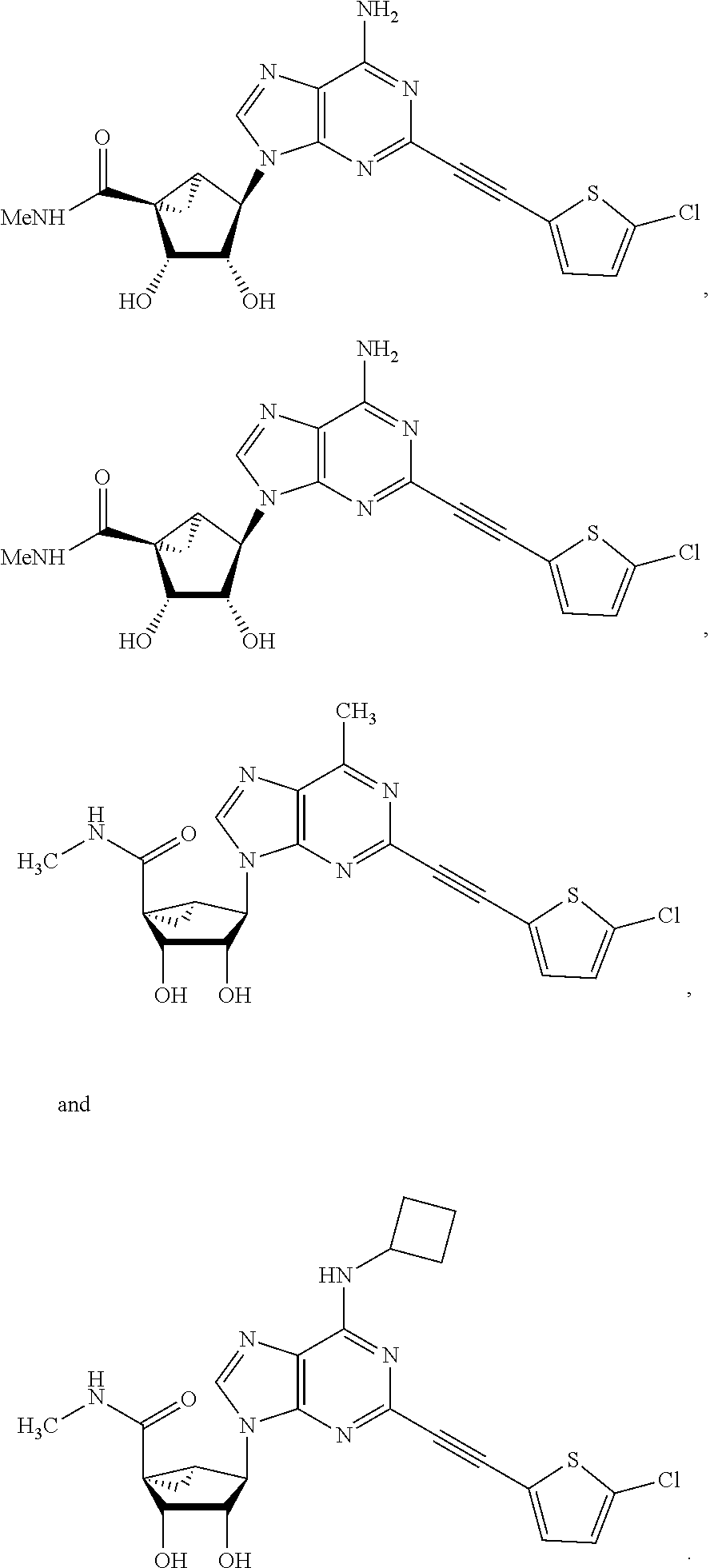
C00014

C00015
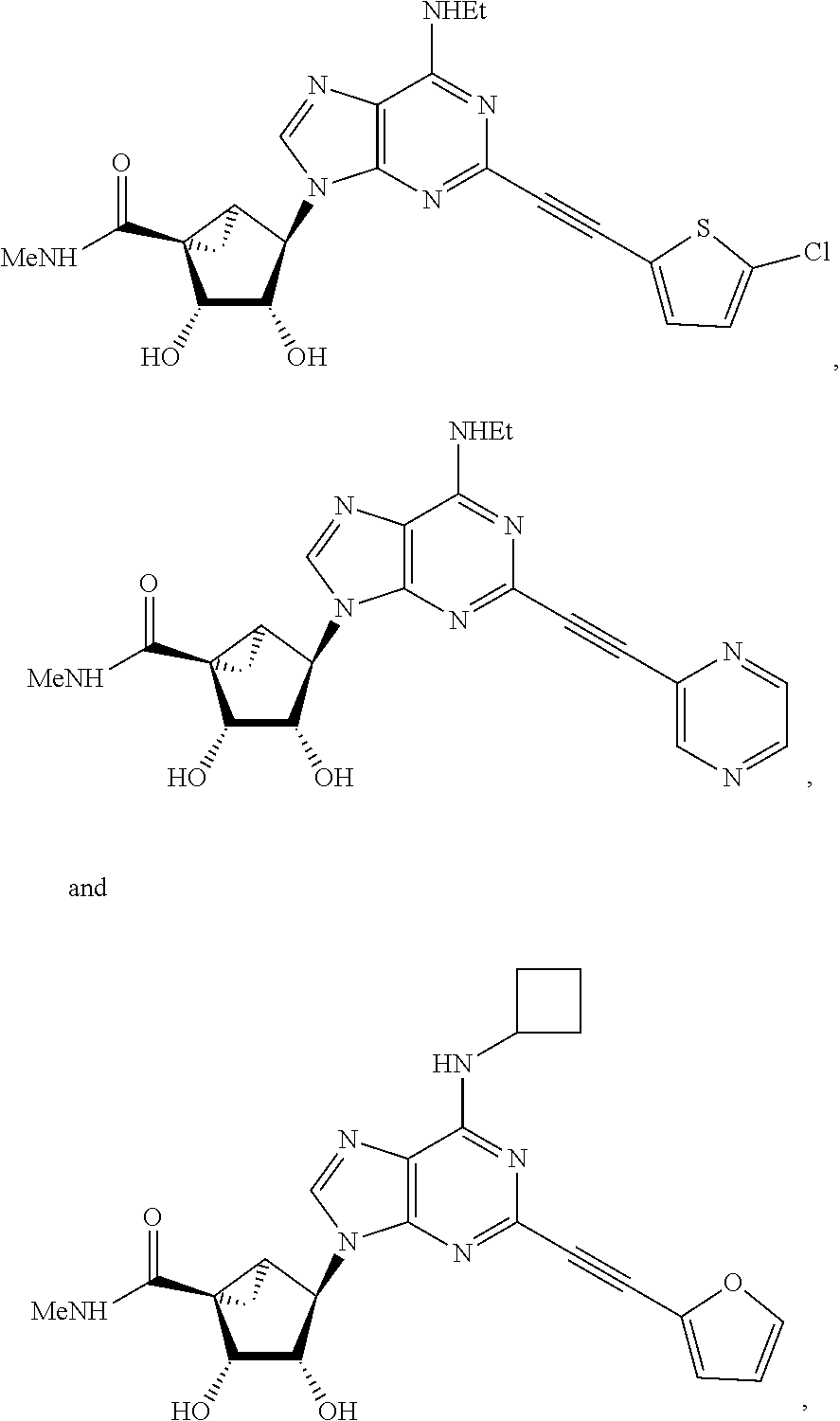
C00016

C00017
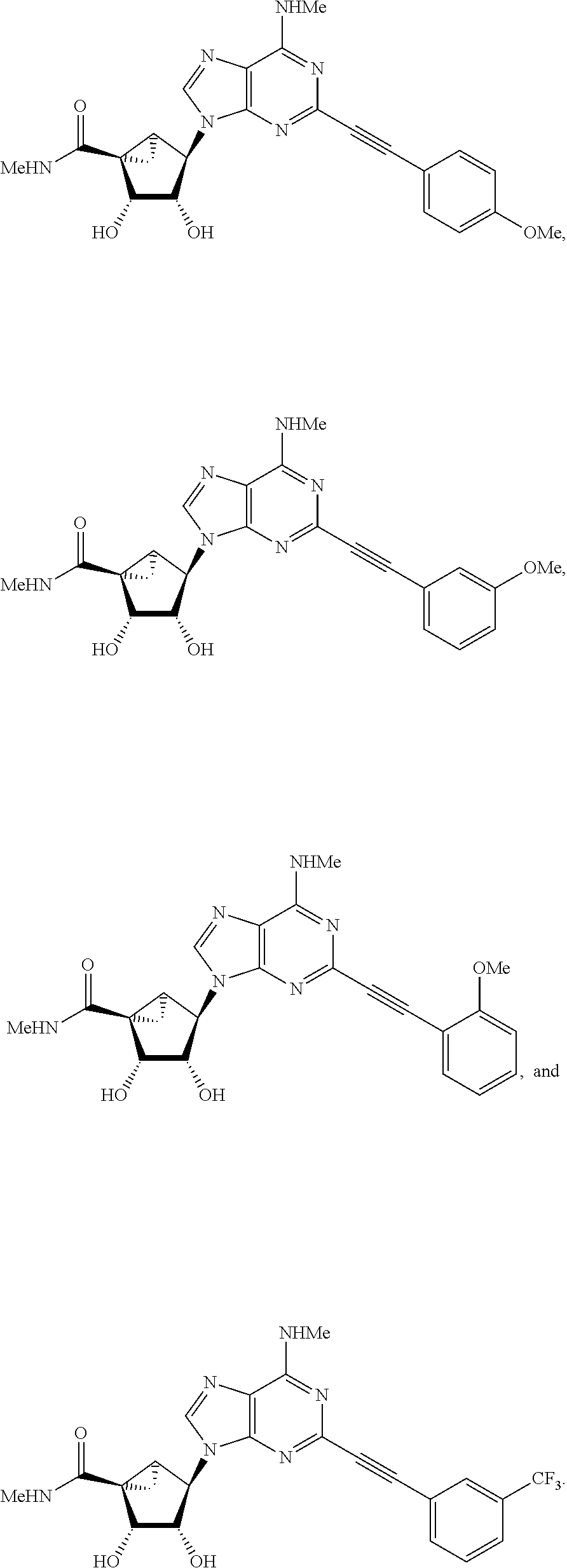
C00018

C00019

C00020

C00021

C00022

C00023

C00024

C00025
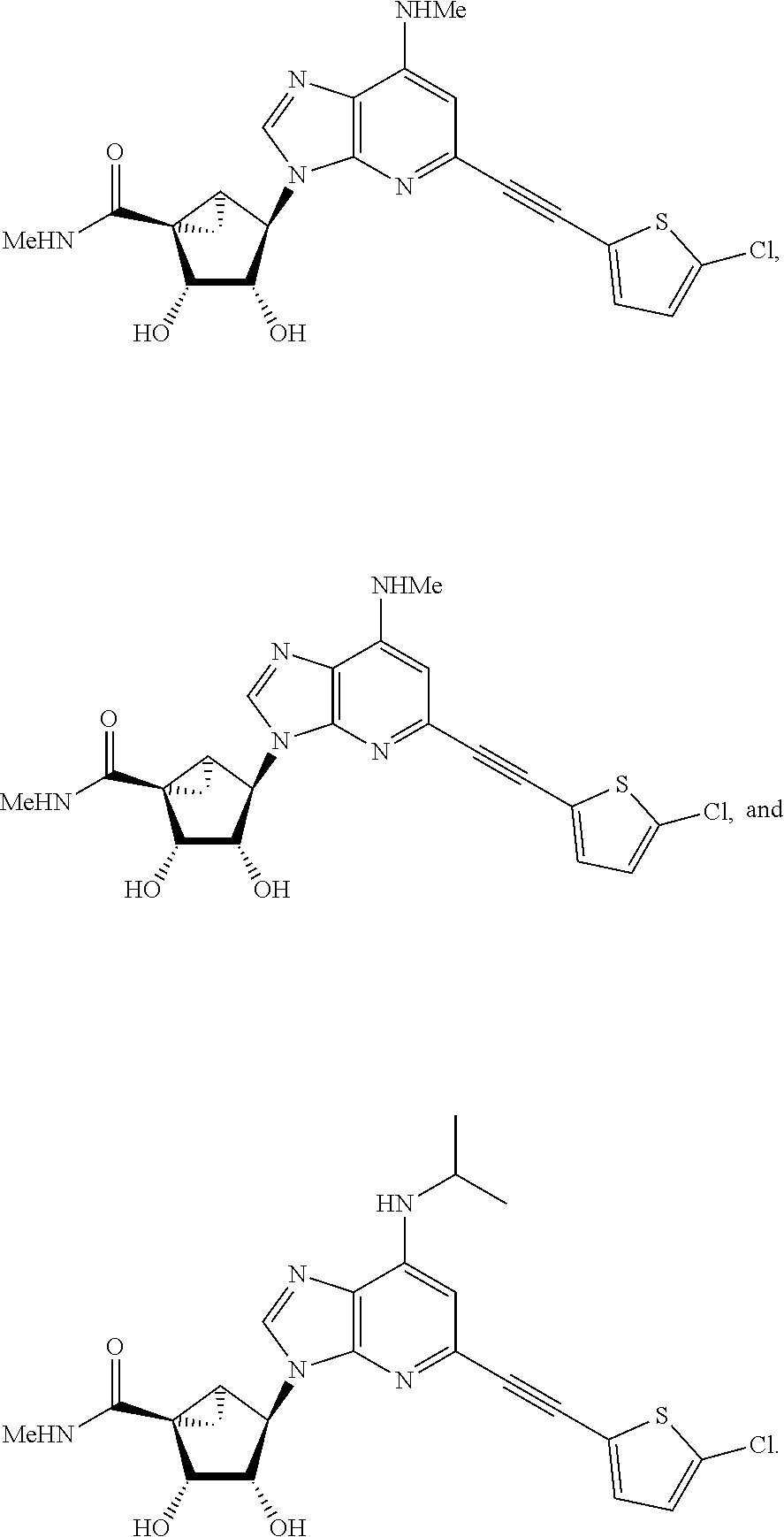
C00026
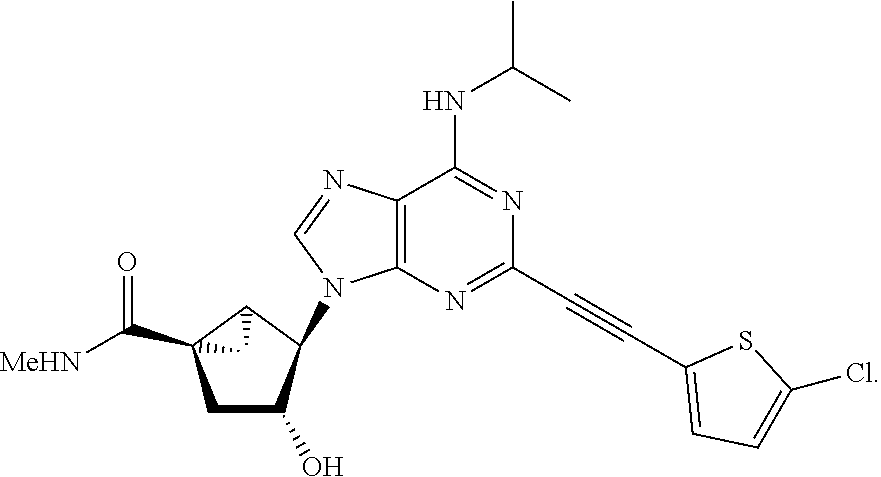
C00027

C00028

C00029

C00030

C00031

C00032

C00033
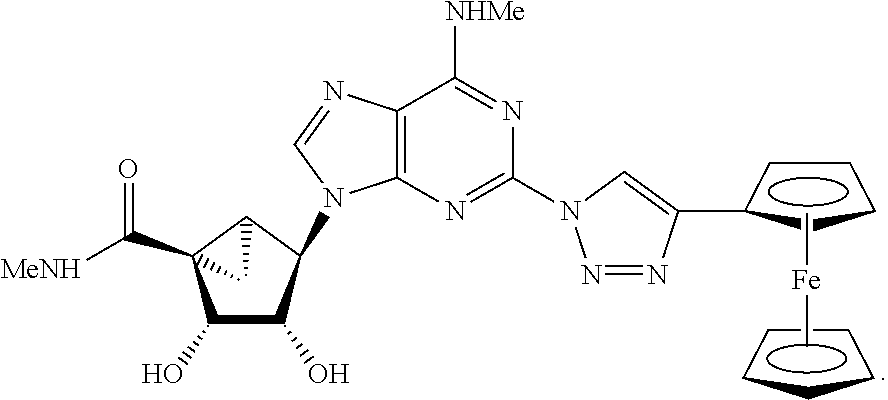
C00034

C00035

C00036

C00037

C00038

C00039

C00040

C00041
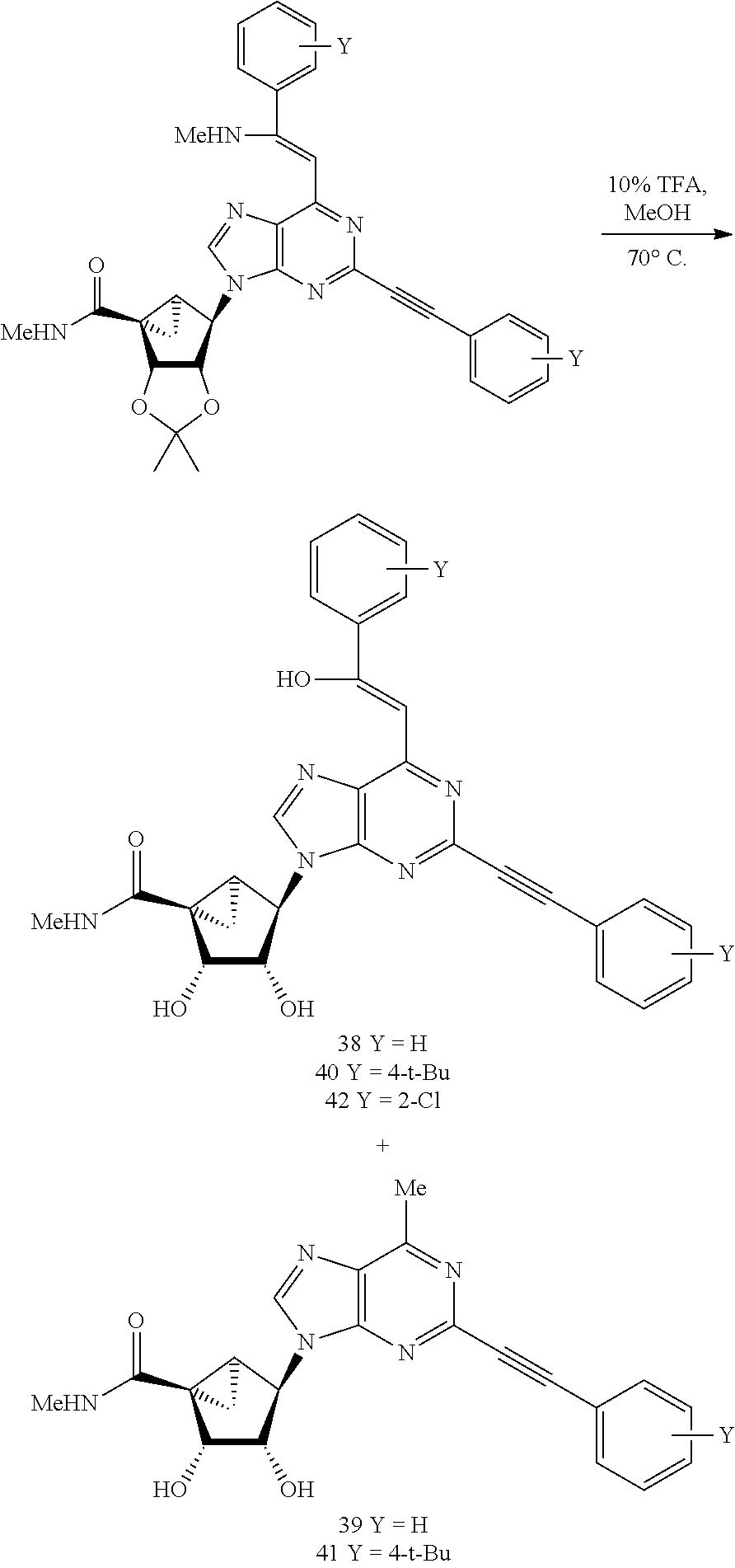
C00042
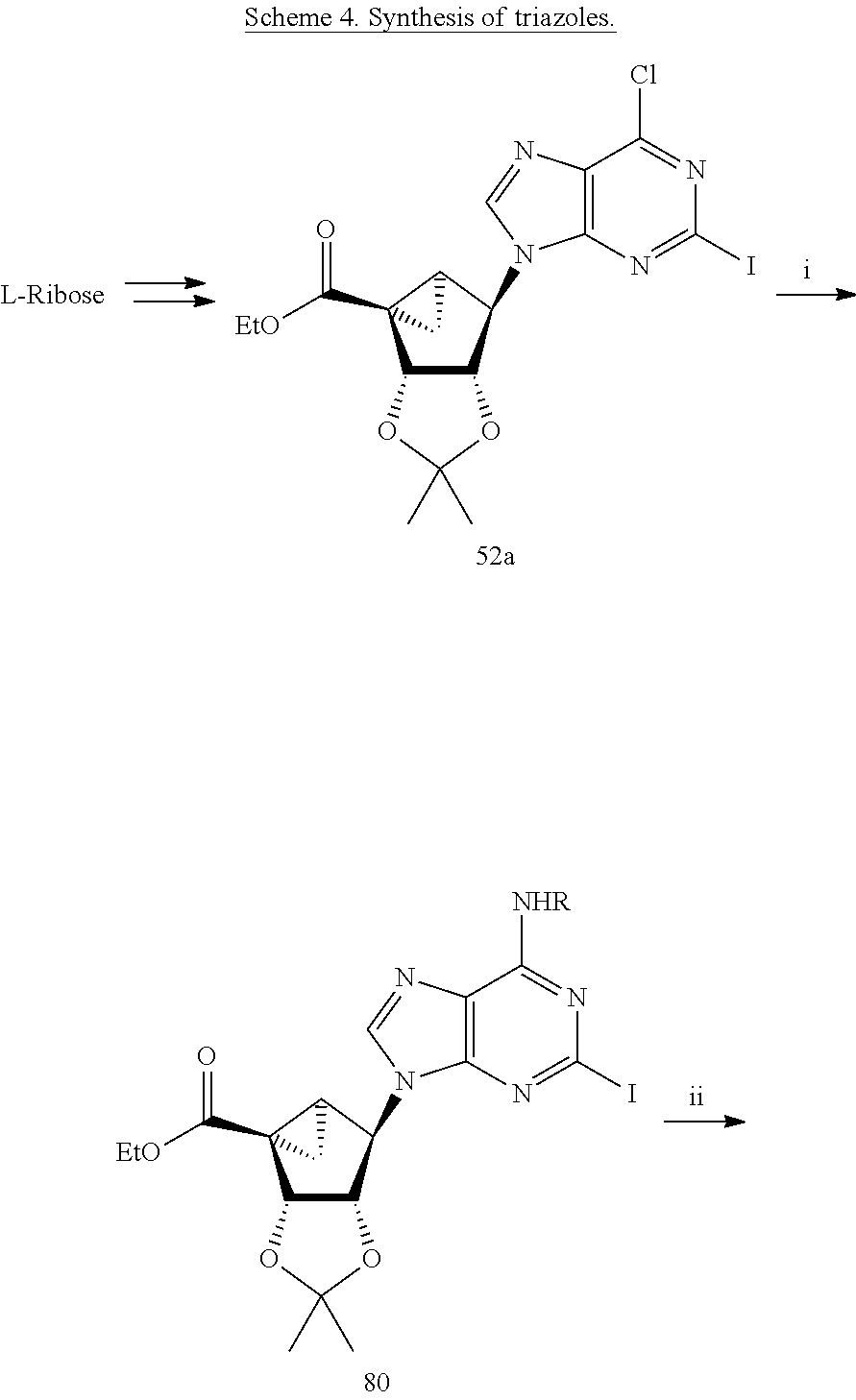
C00043

C00044

C00045

C00046

C00047

C00048

C00049
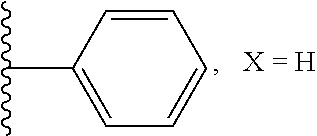
C00050

C00051

C00052

C00053

C00054

C00055

C00056

C00057

C00058

C00059

C00060

C00061
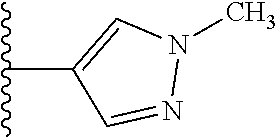
C00062

C00063
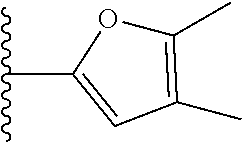
C00064

C00065

C00066

C00067

C00068

C00069
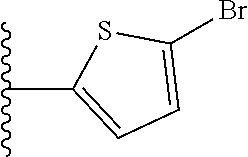
C00070

C00071

C00072

C00073

C00074

C00075
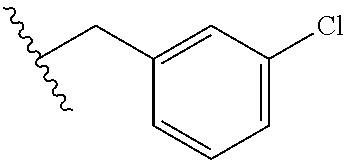
C00076

C00077

C00078

C00079

C00080

C00081

C00082

C00083

C00084

C00085

C00086

C00087

C00088

C00089

C00090

C00091

C00092

C00093

C00094

C00095

C00096

C00097

C00098
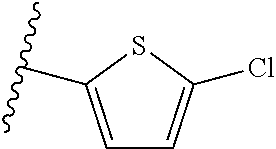
C00099

C00100

C00101

C00102

C00103

C00104

C00105

C00106

C00107
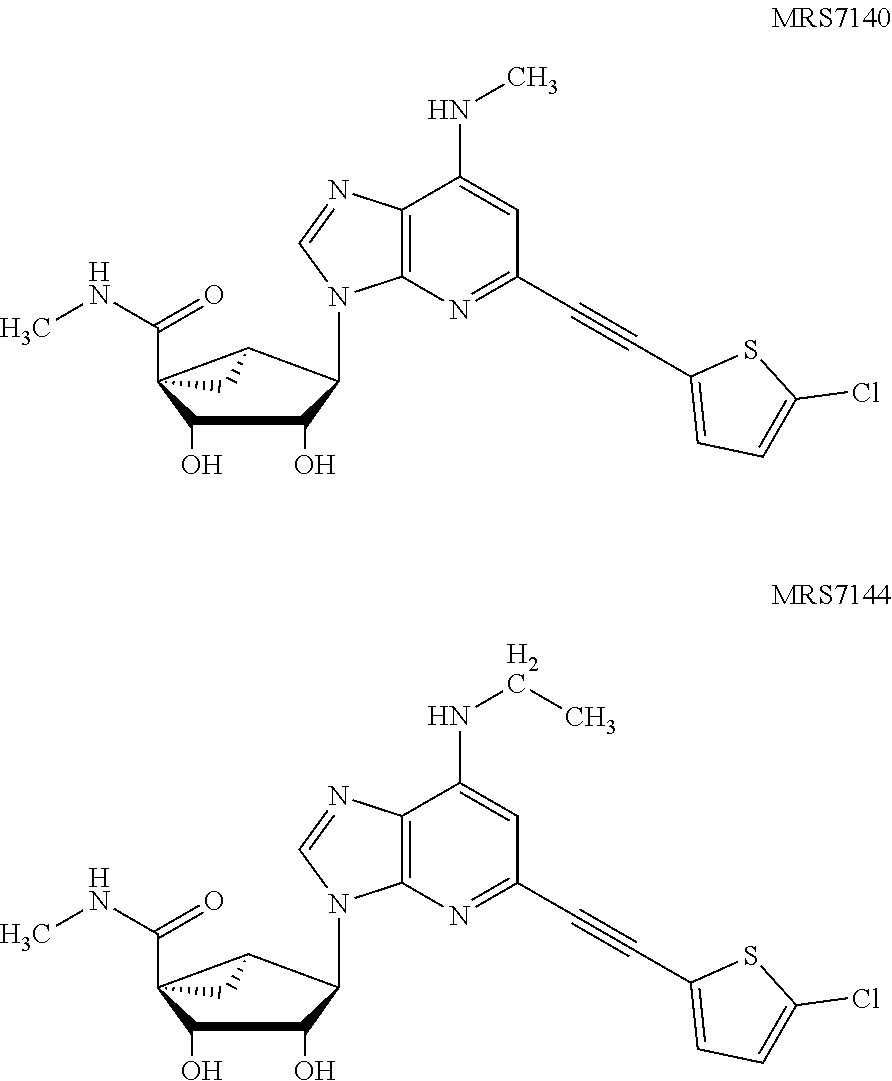
C00108

C00109

C00110
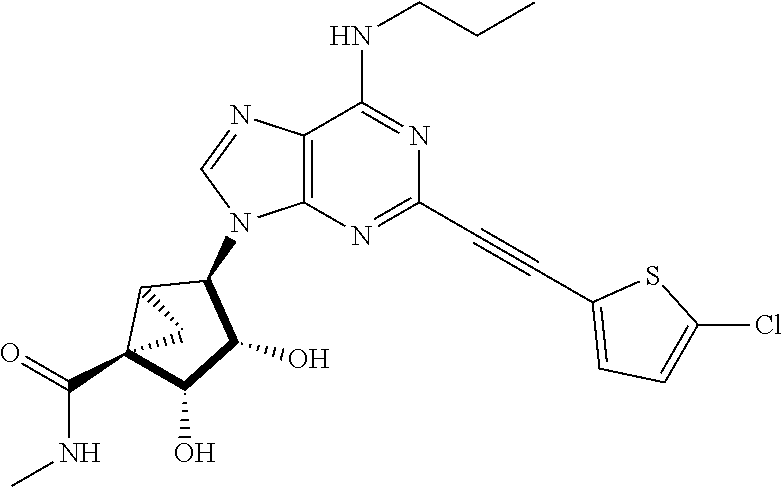
C00111

C00112

C00113

C00114

C00115

C00116
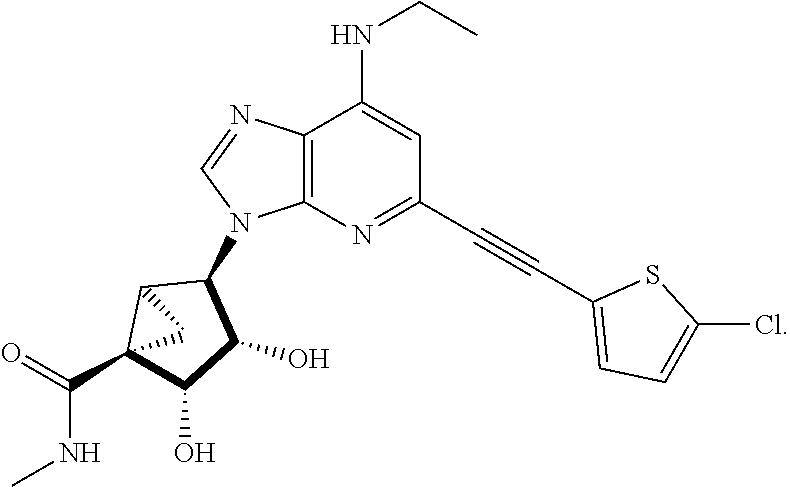
C00117

C00118
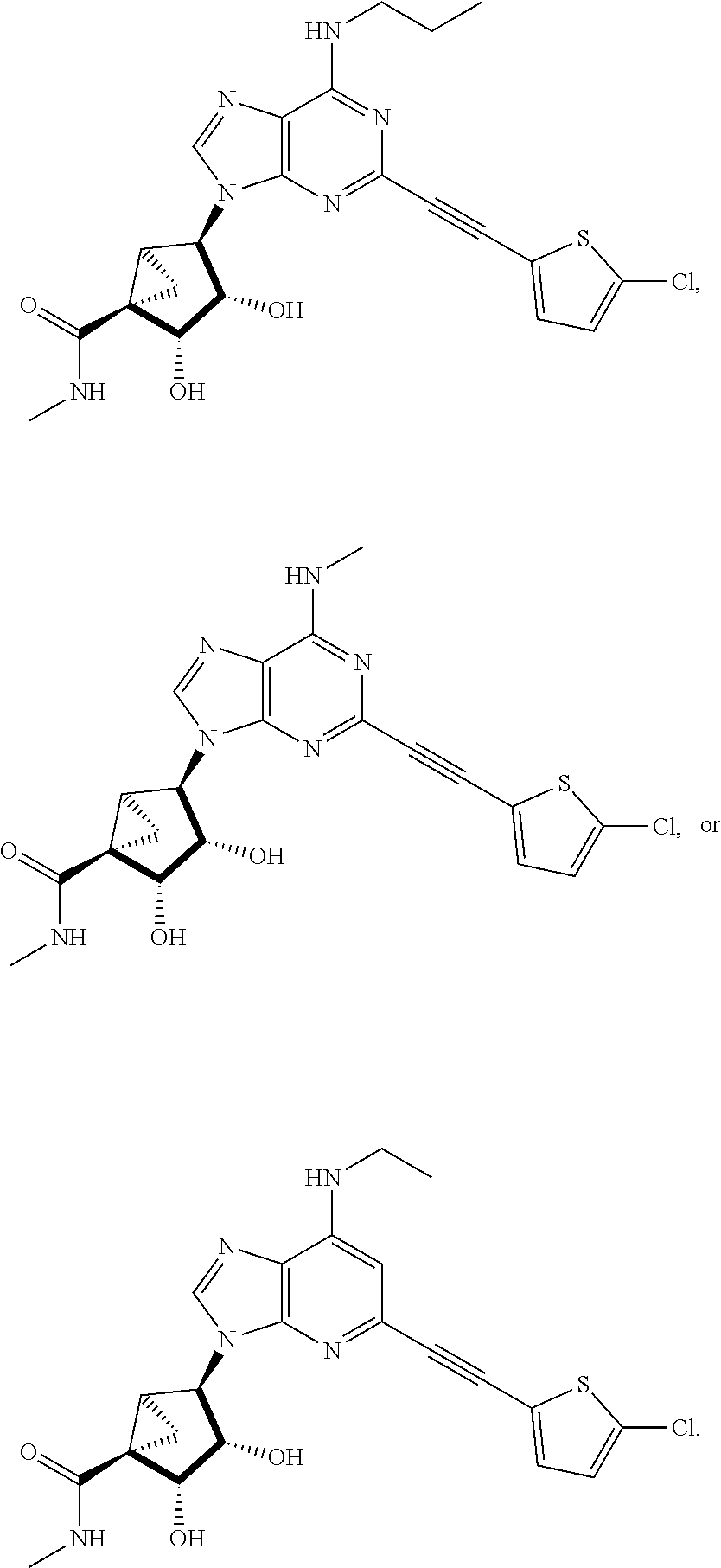
D00000

D00001

D00002
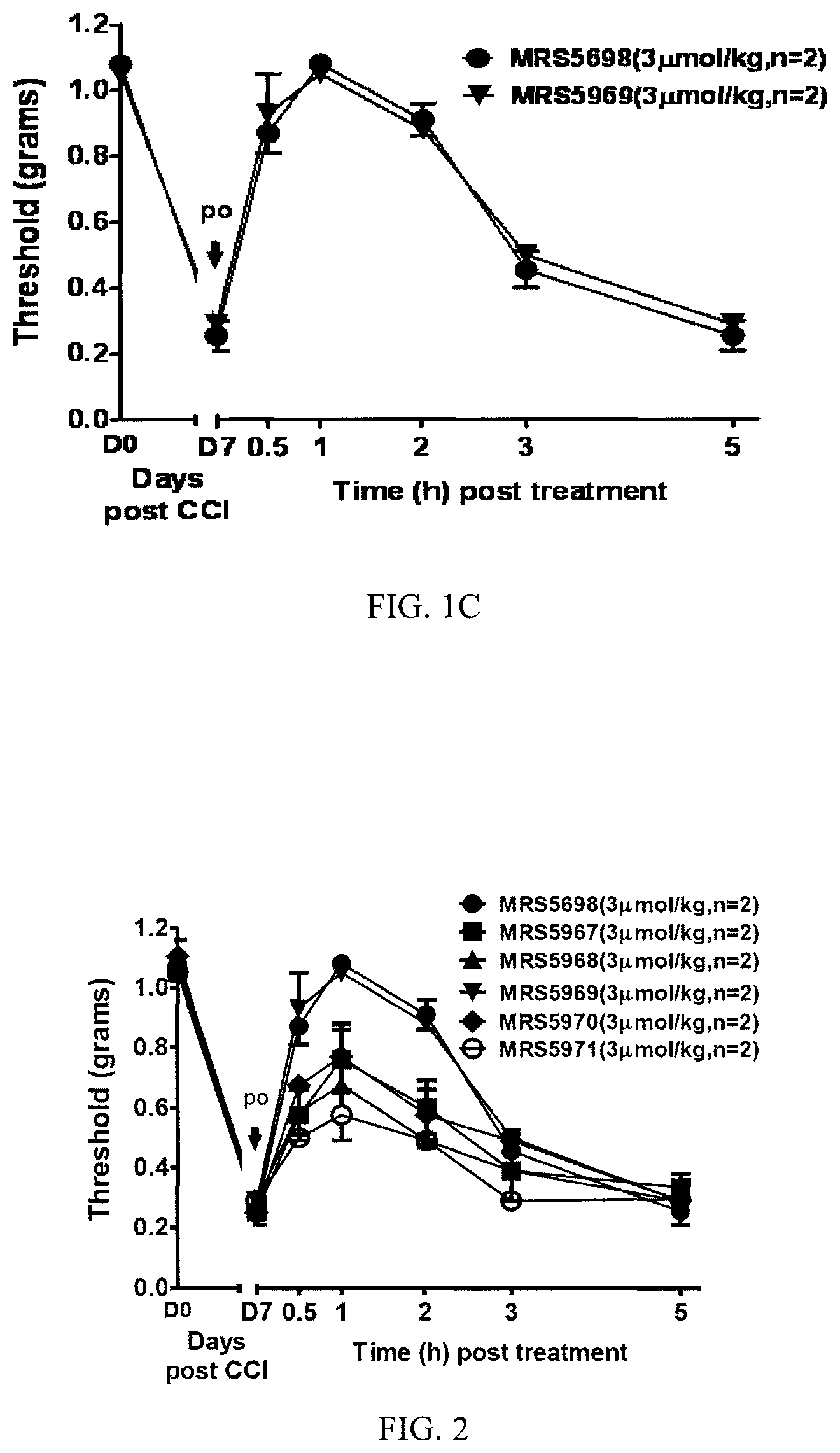
D00003
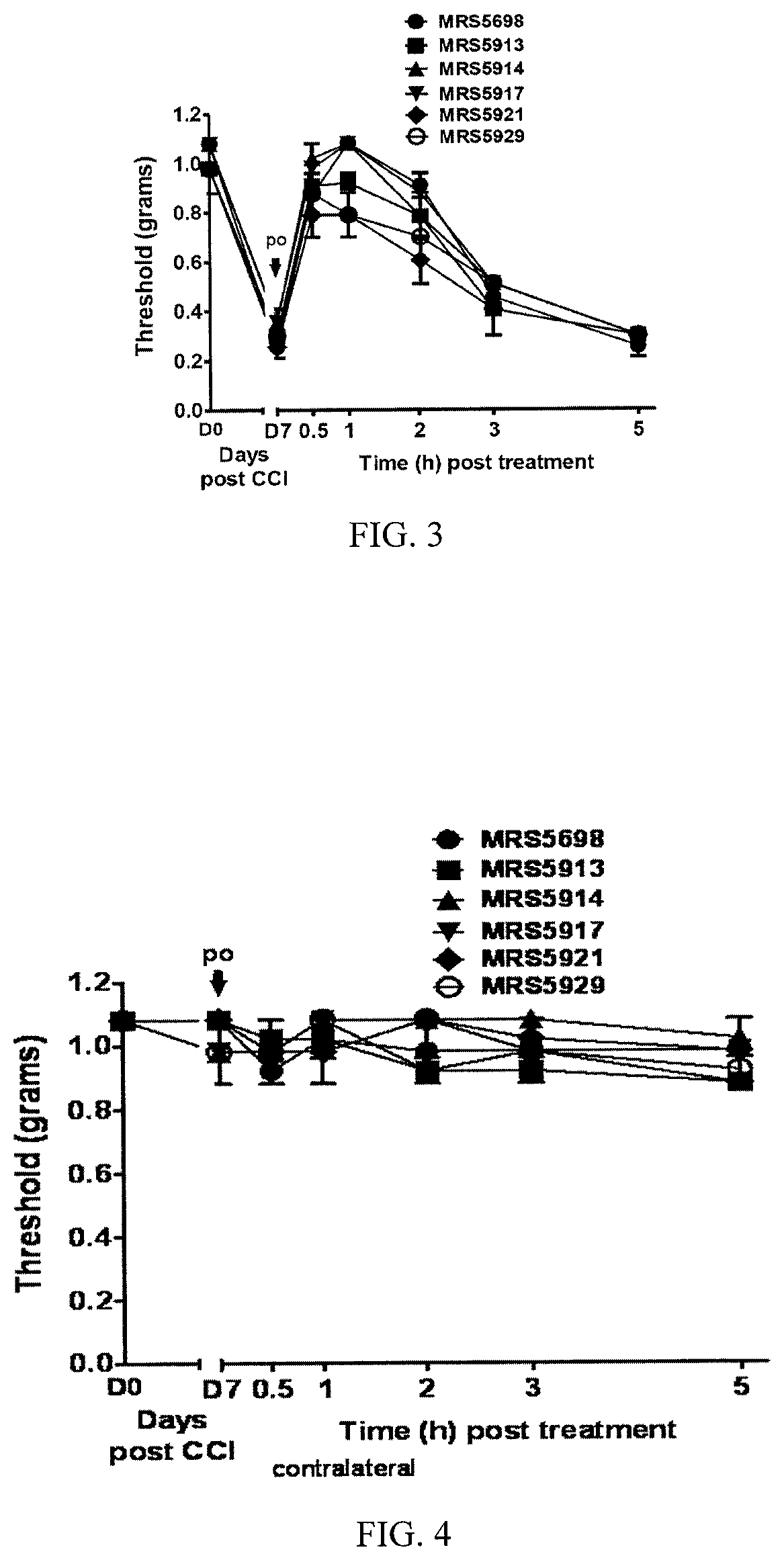
D00004

D00005

D00006

D00007

D00008

D00009

D00010

D00011

D00012
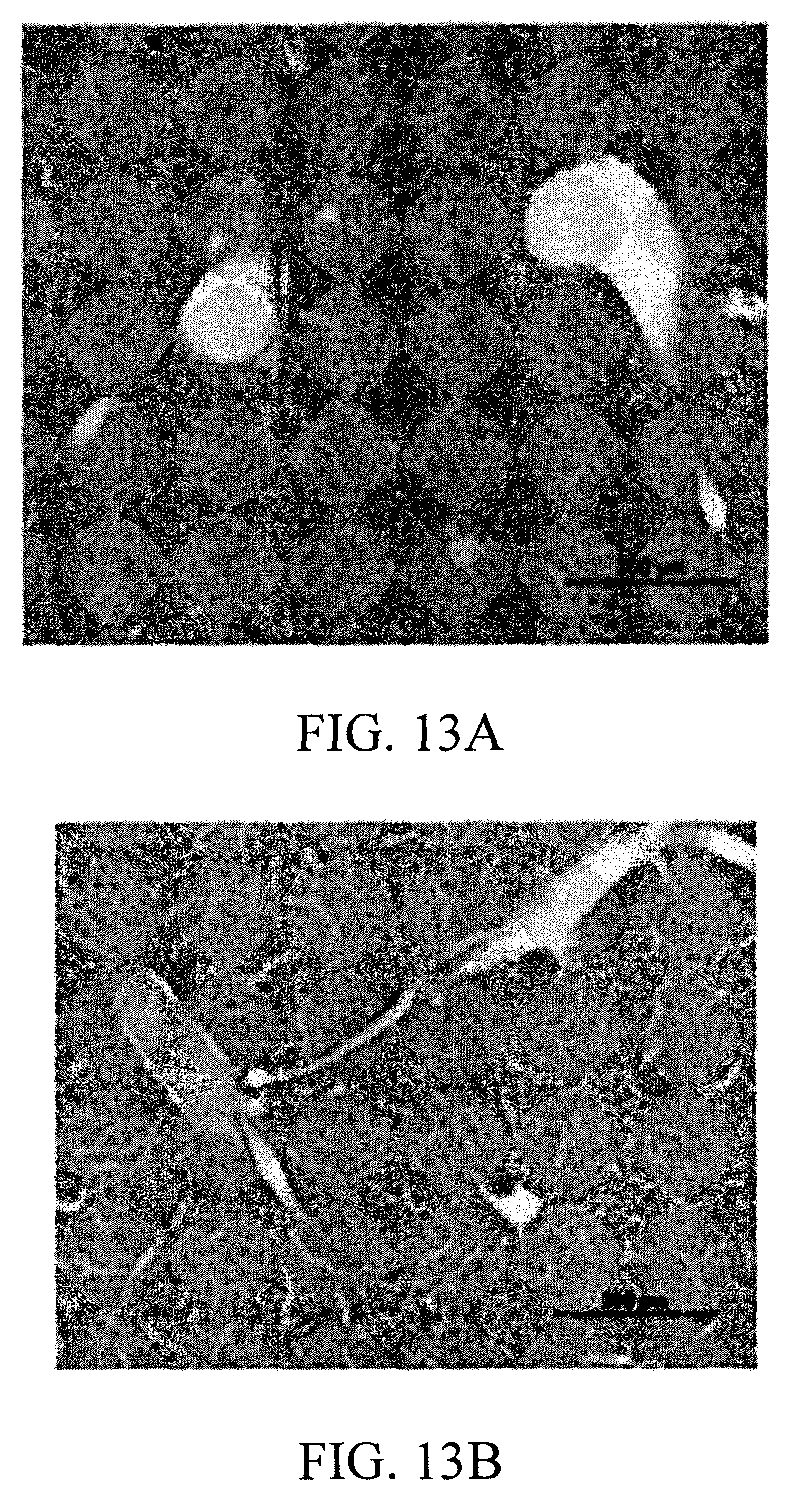
D00013

D00014

XML
uspto.report is an independent third-party trademark research tool that is not affiliated, endorsed, or sponsored by the United States Patent and Trademark Office (USPTO) or any other governmental organization. The information provided by uspto.report is based on publicly available data at the time of writing and is intended for informational purposes only.
While we strive to provide accurate and up-to-date information, we do not guarantee the accuracy, completeness, reliability, or suitability of the information displayed on this site. The use of this site is at your own risk. Any reliance you place on such information is therefore strictly at your own risk.
All official trademark data, including owner information, should be verified by visiting the official USPTO website at www.uspto.gov. This site is not intended to replace professional legal advice and should not be used as a substitute for consulting with a legal professional who is knowledgeable about trademark law.